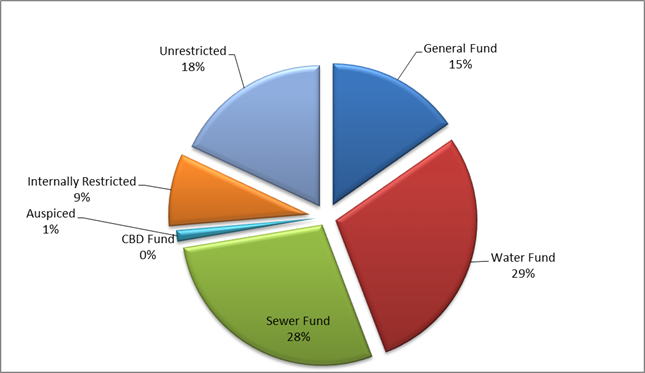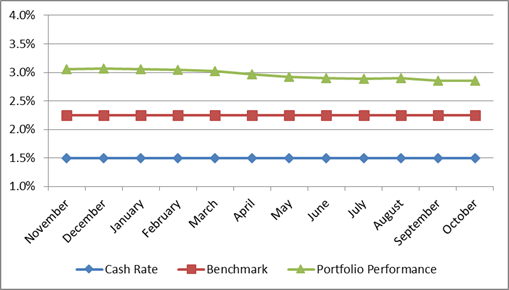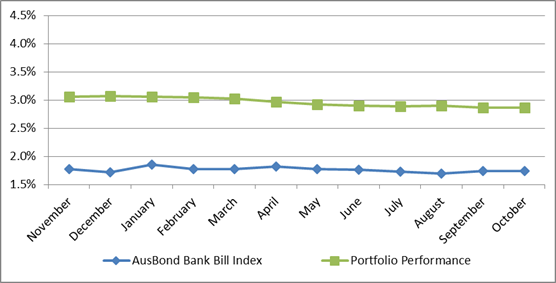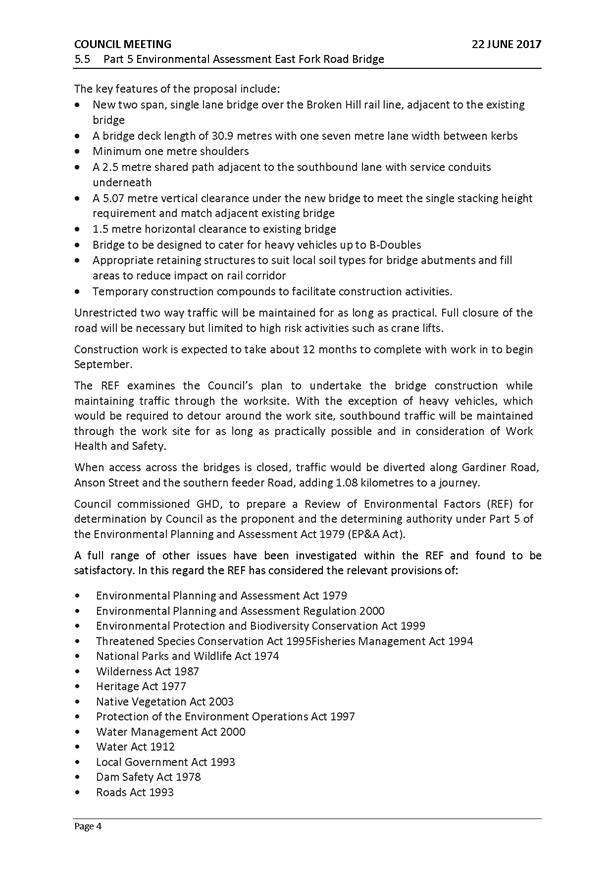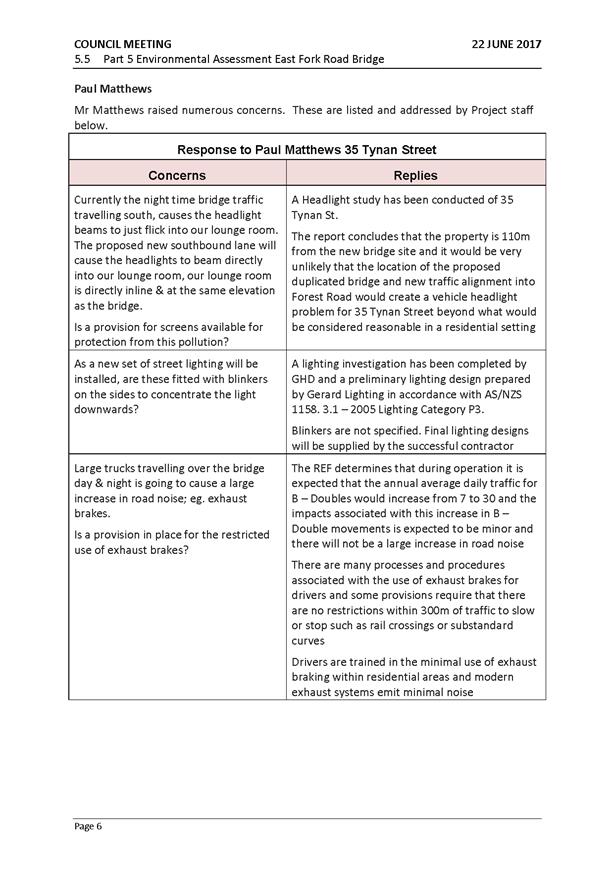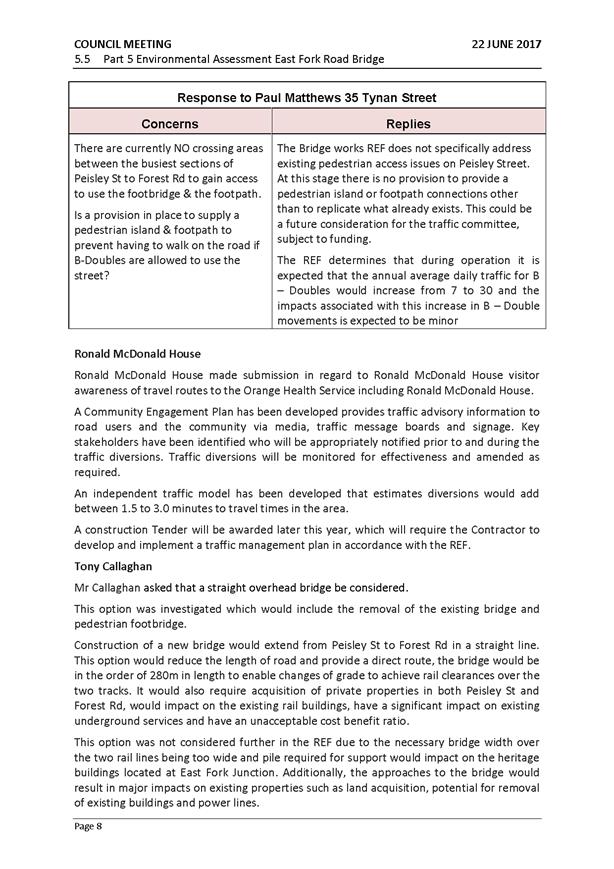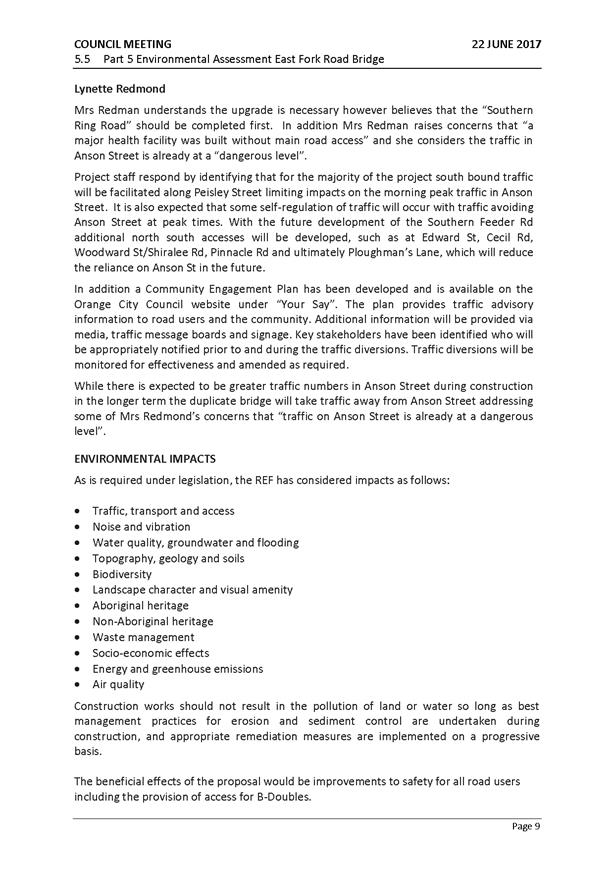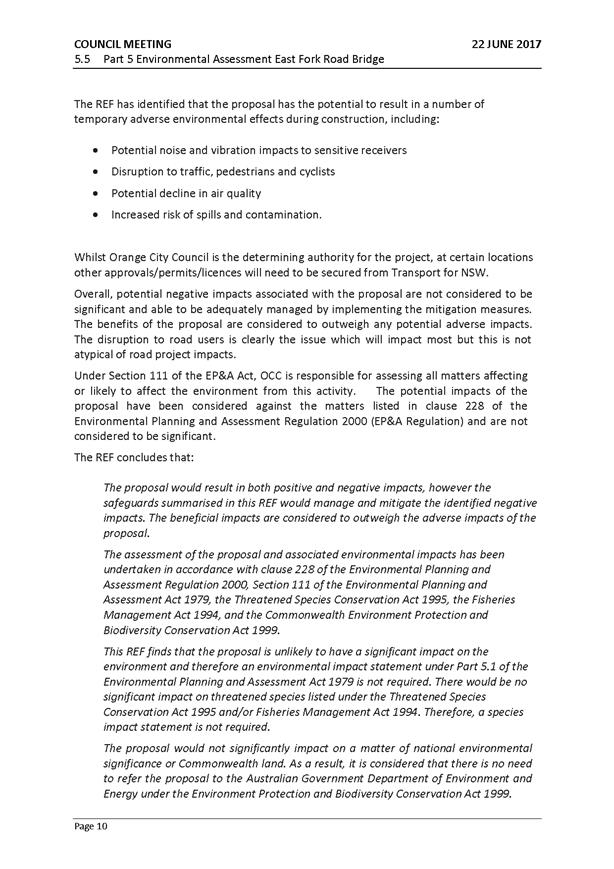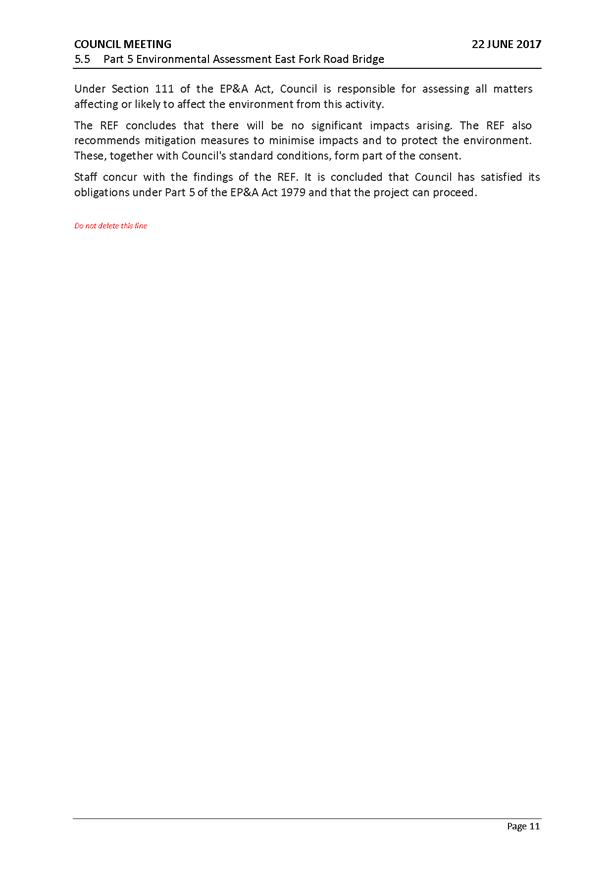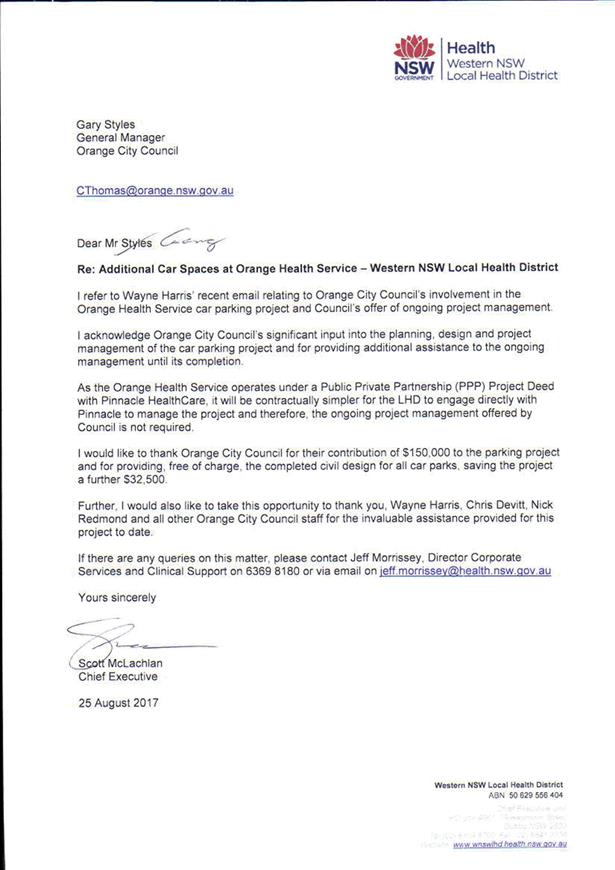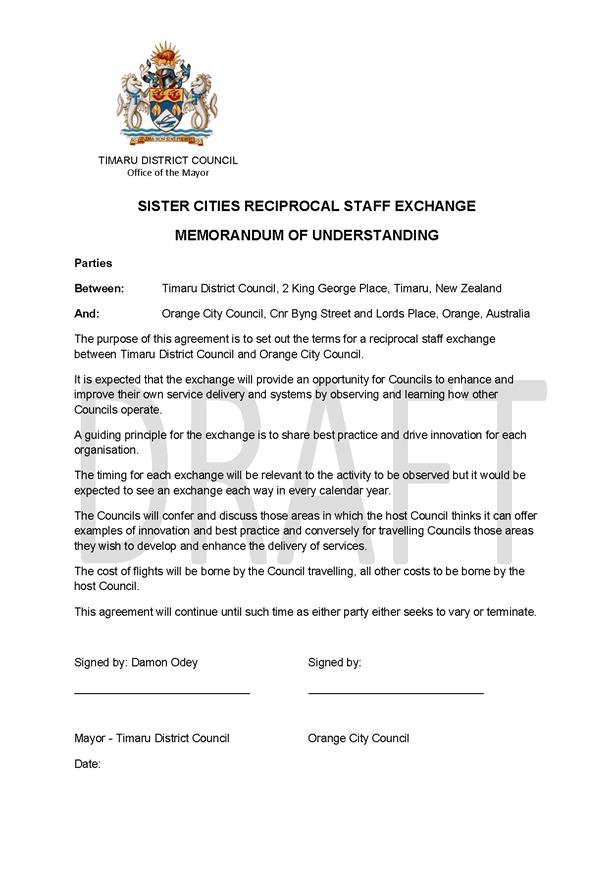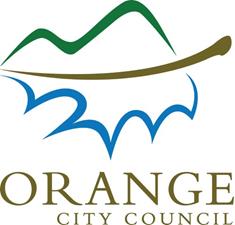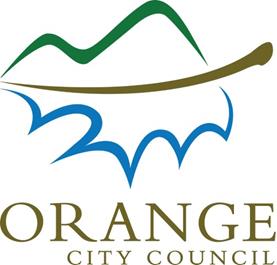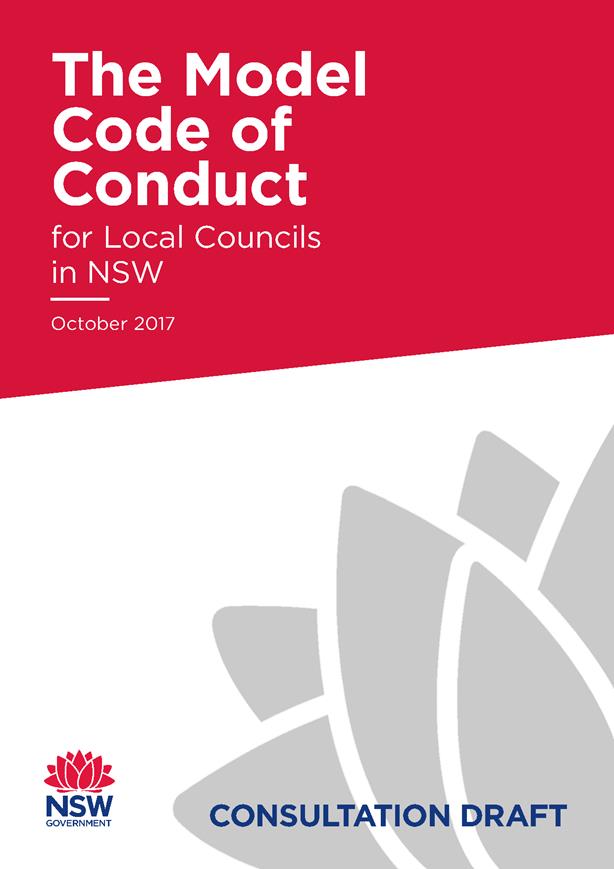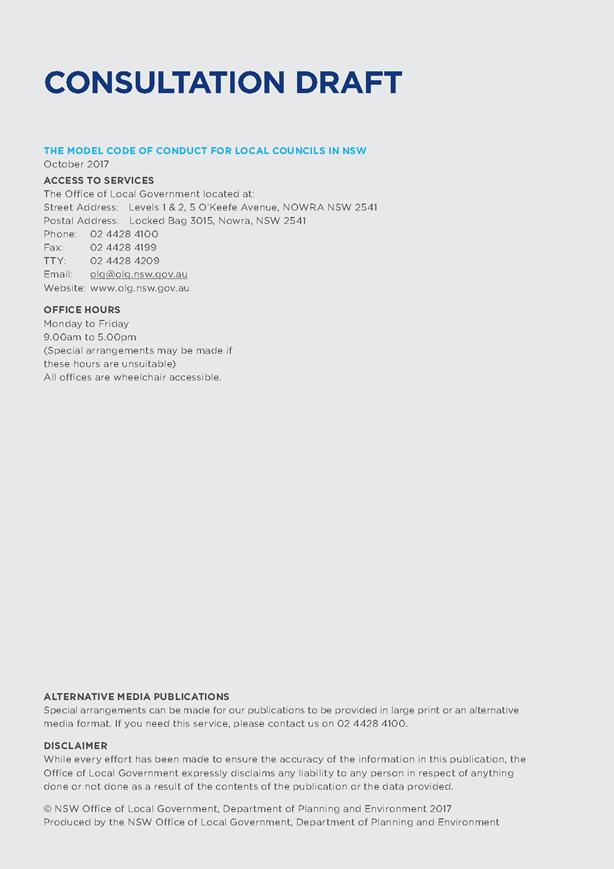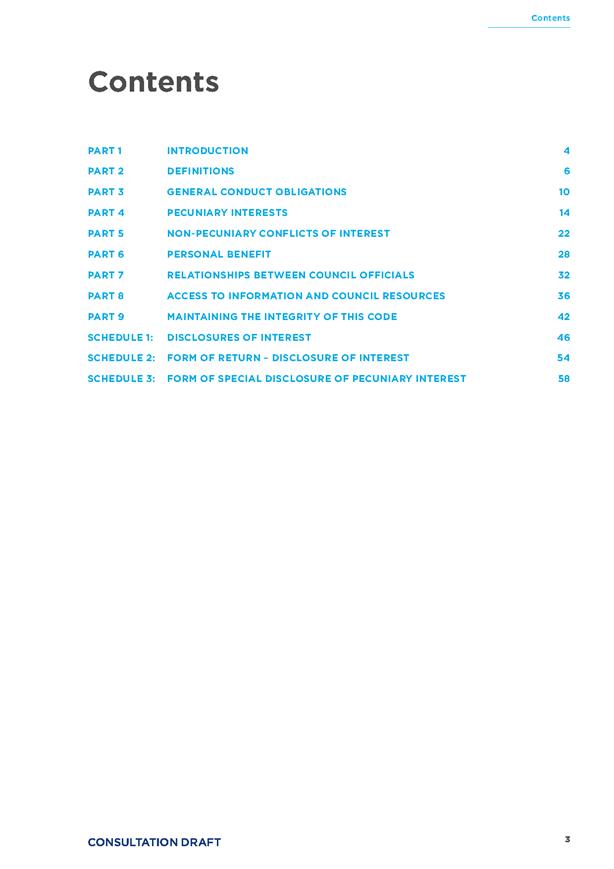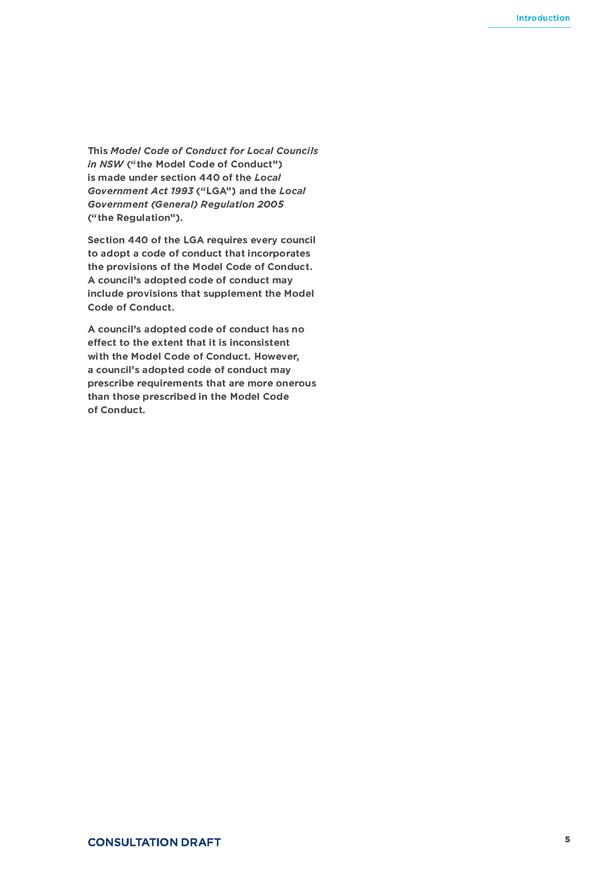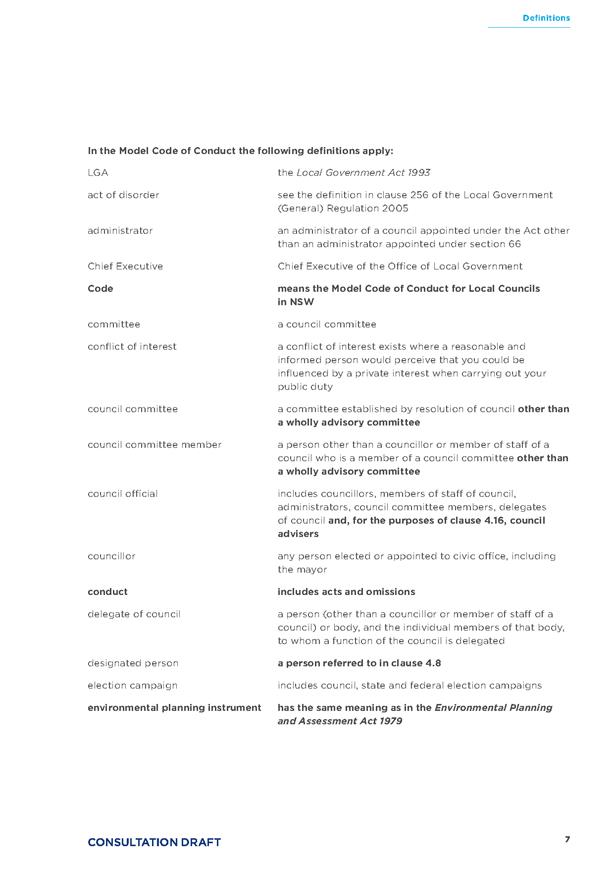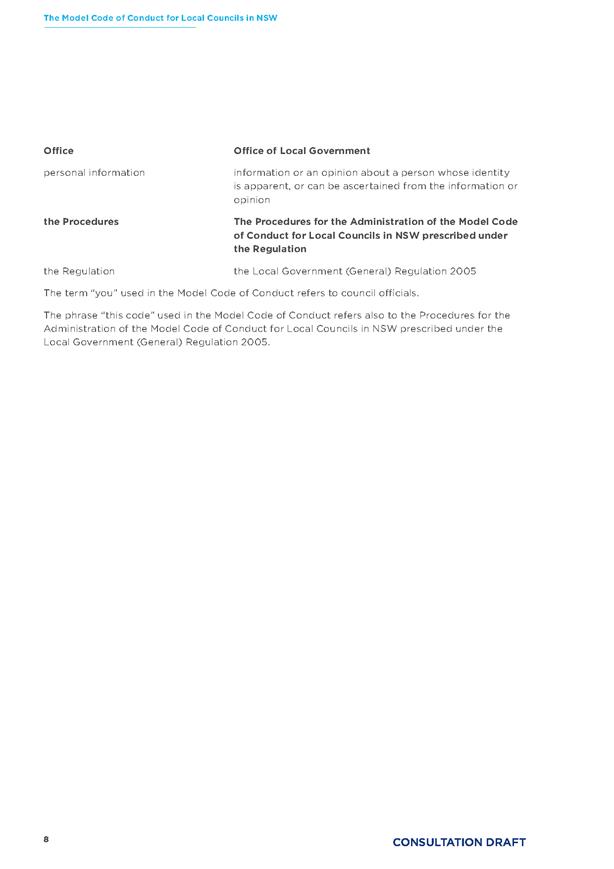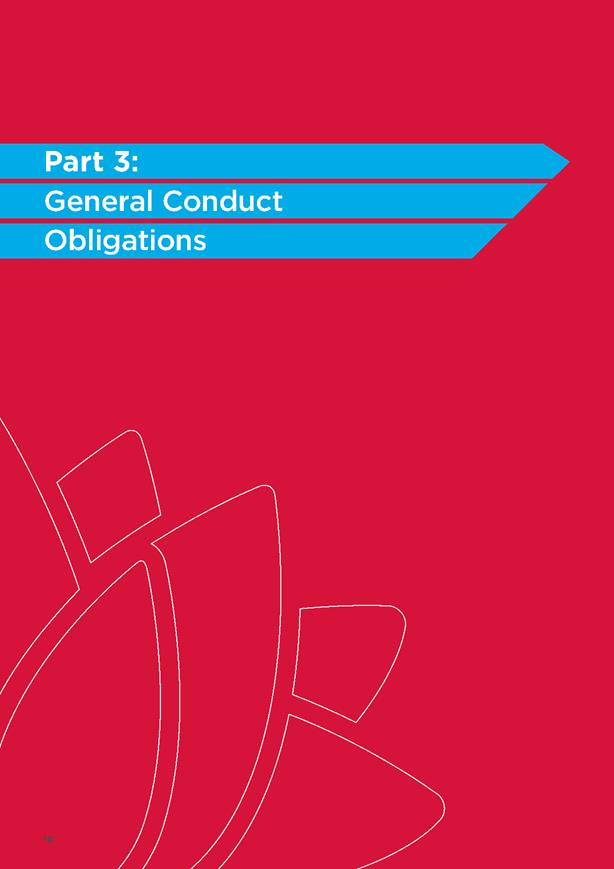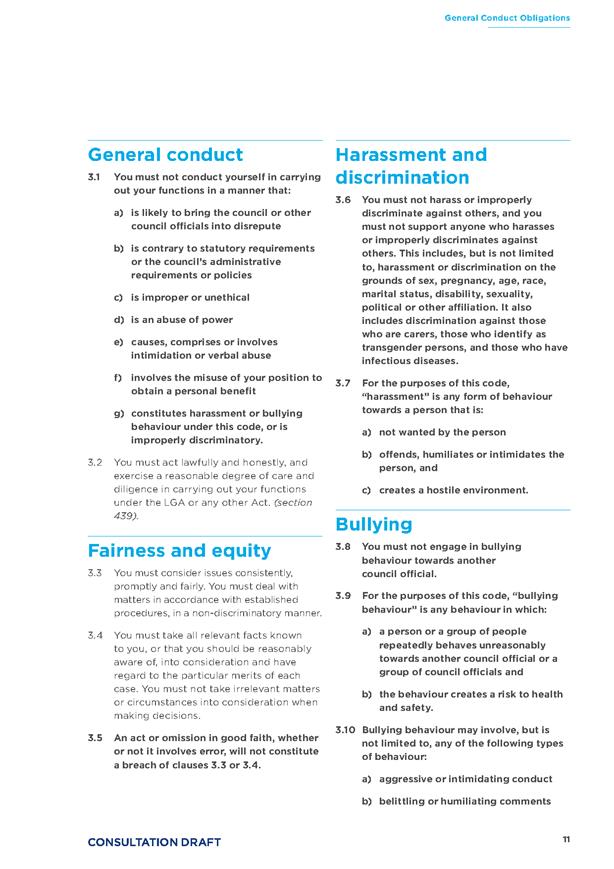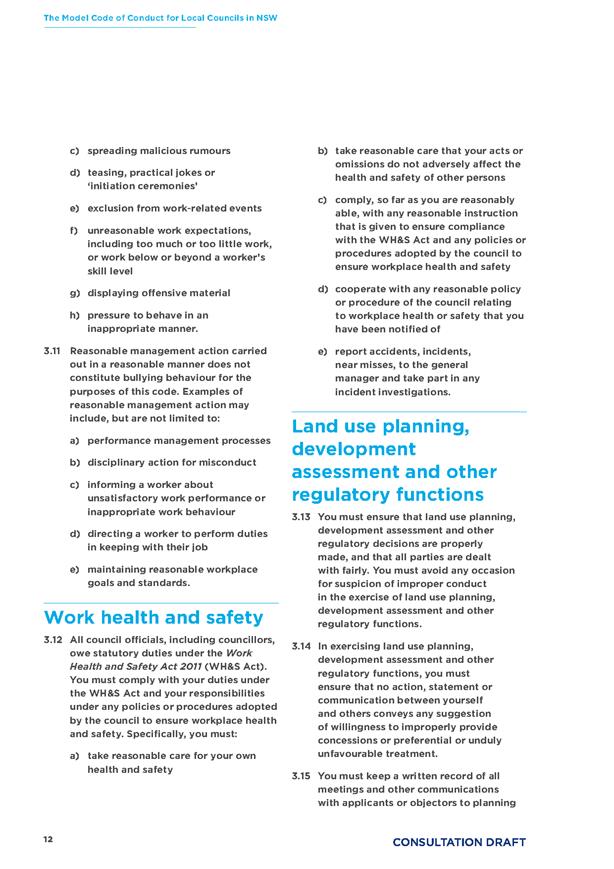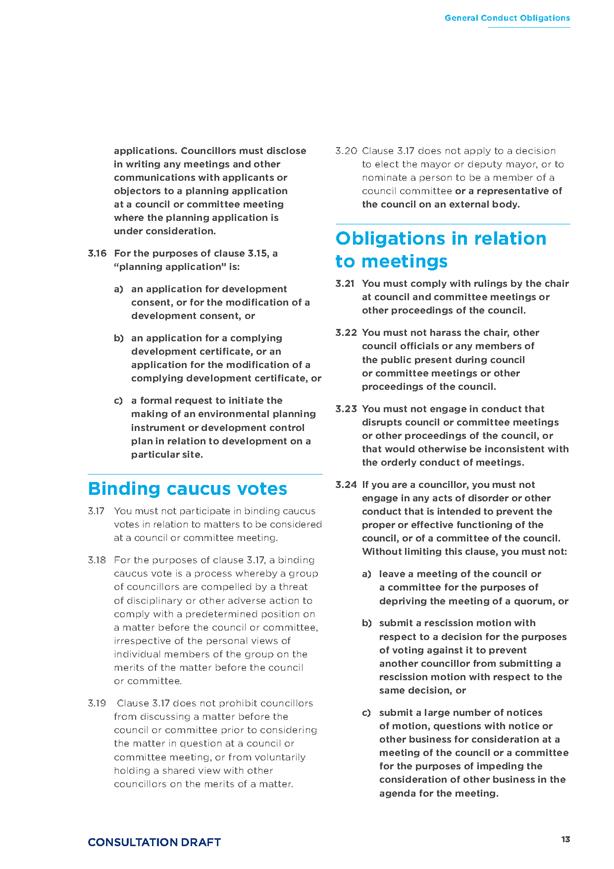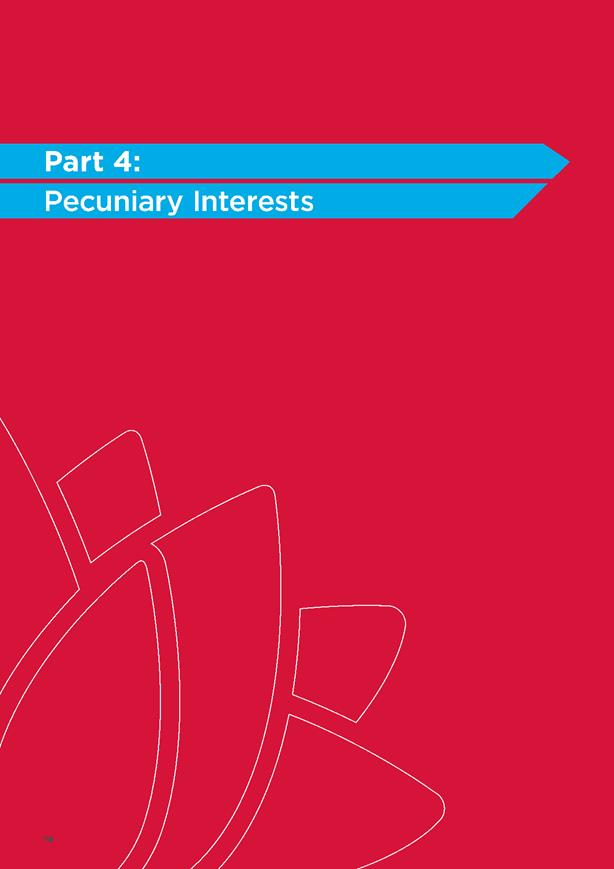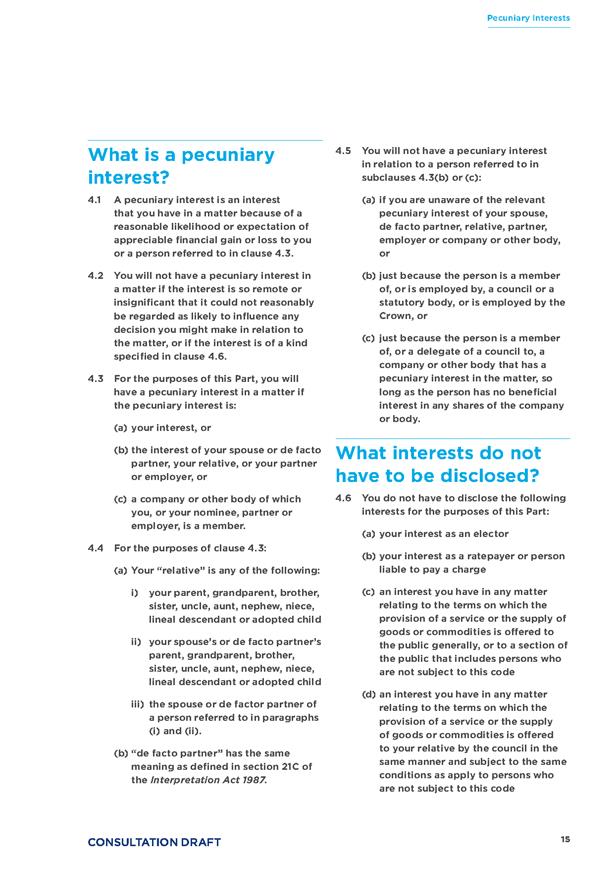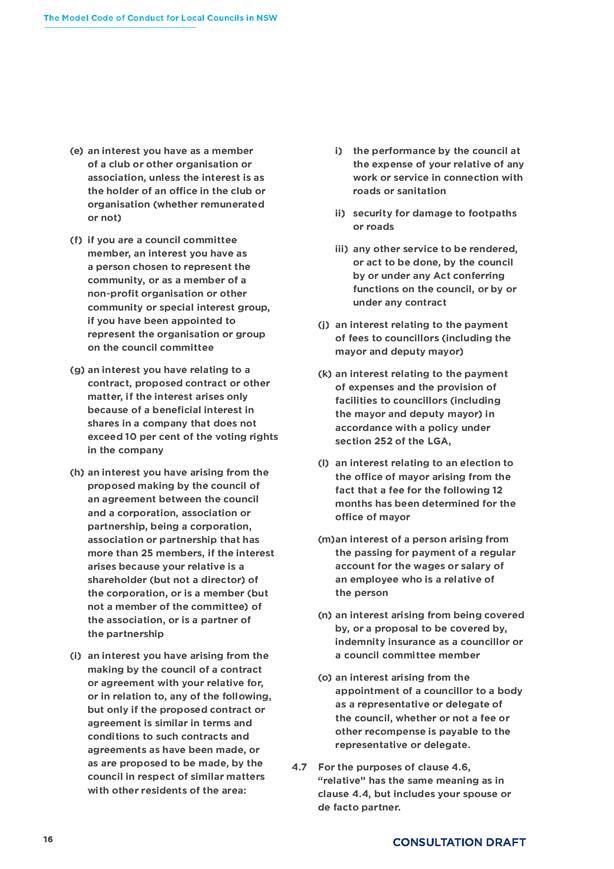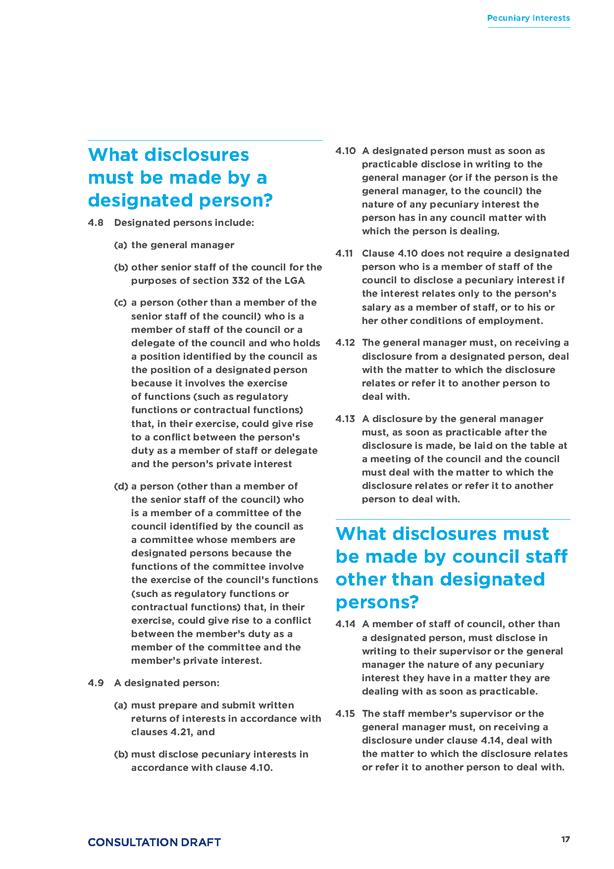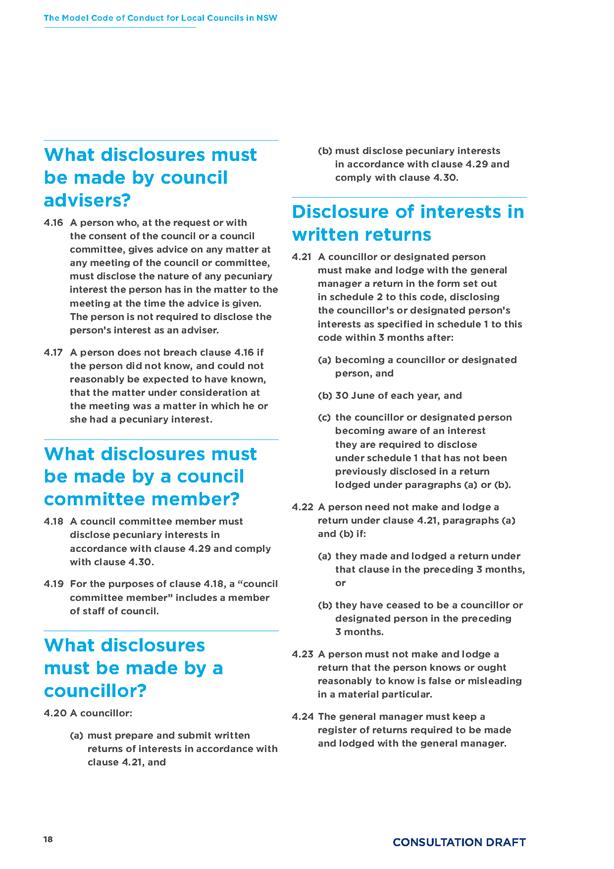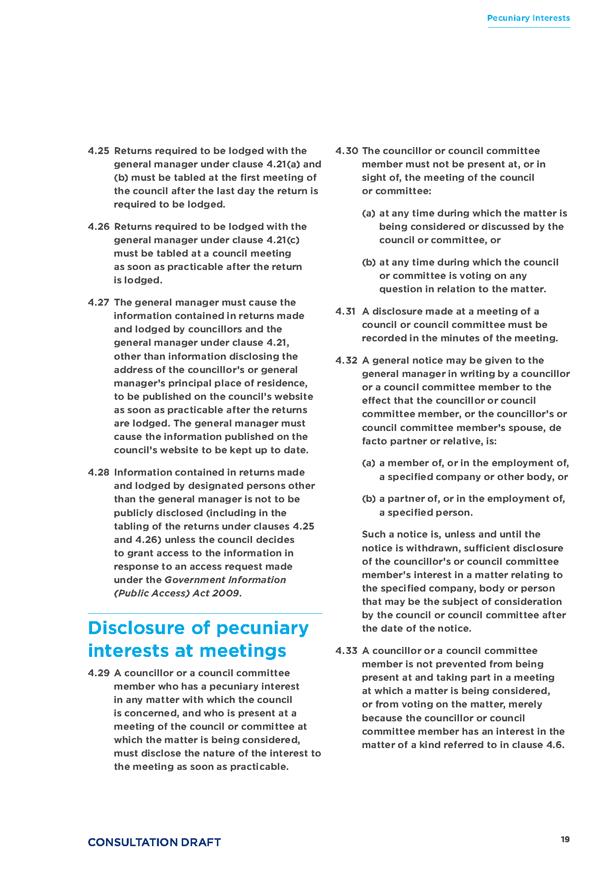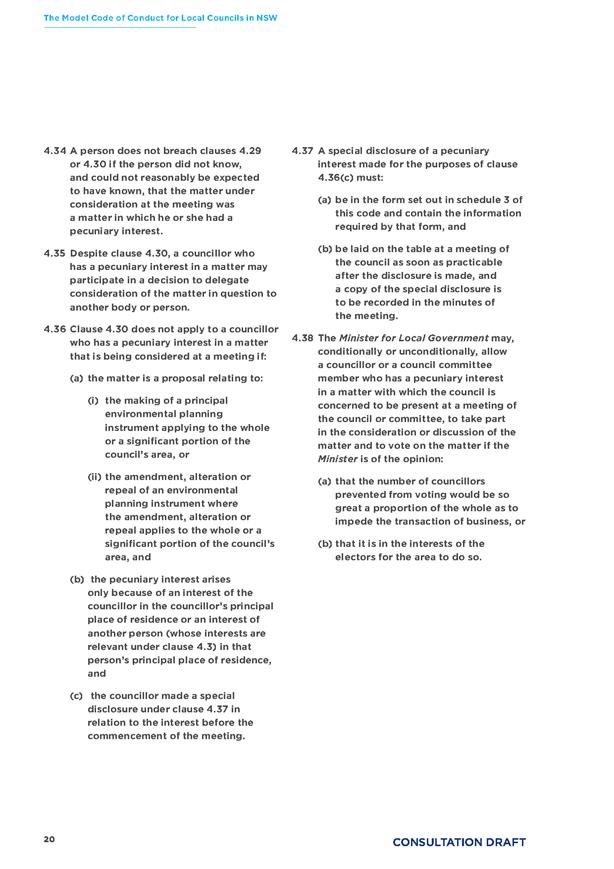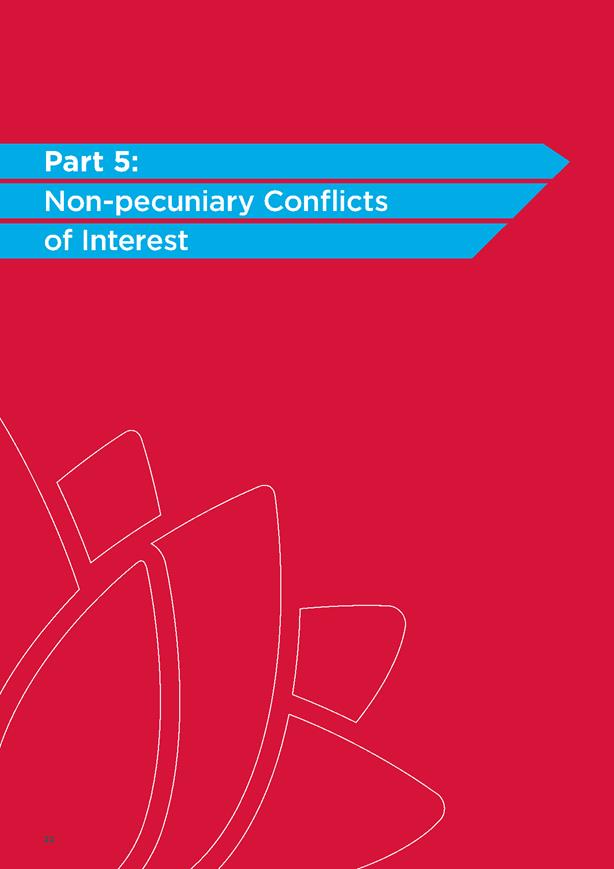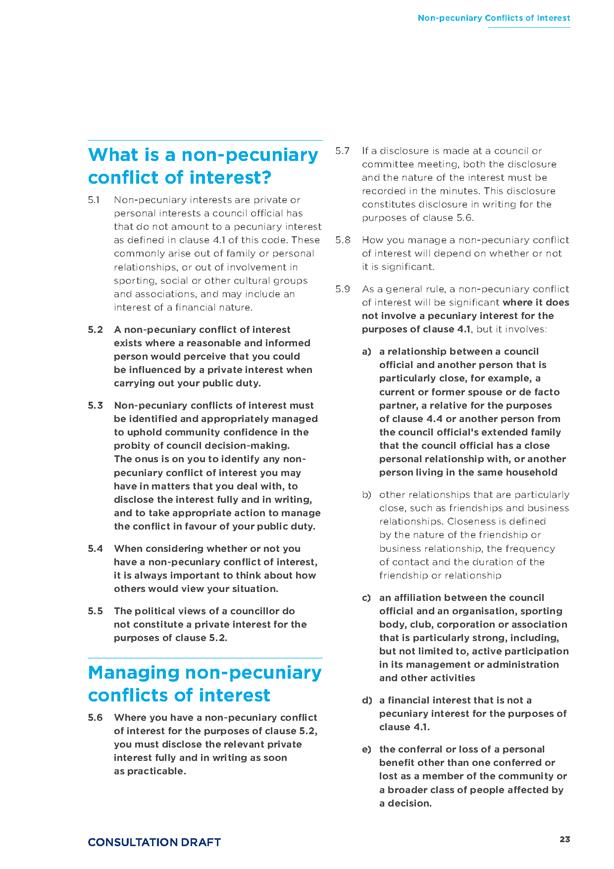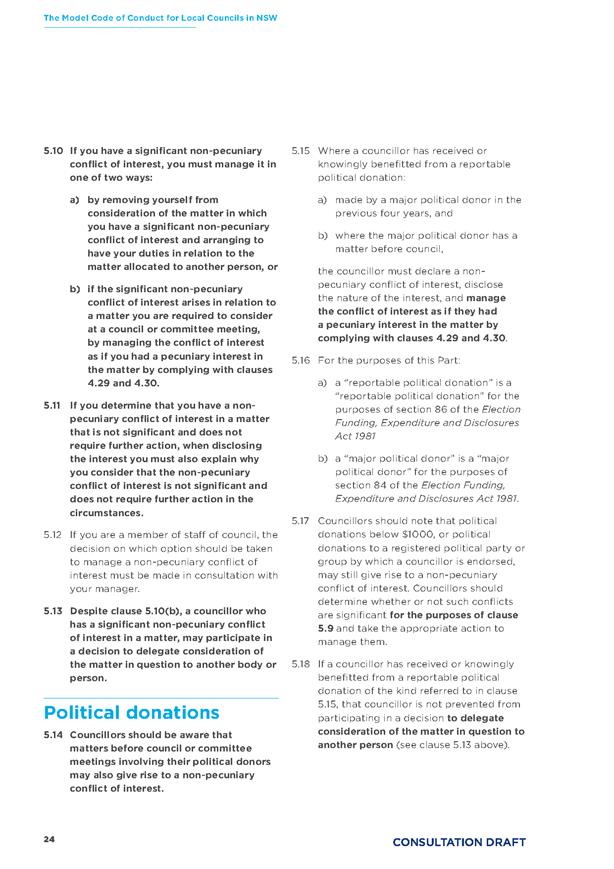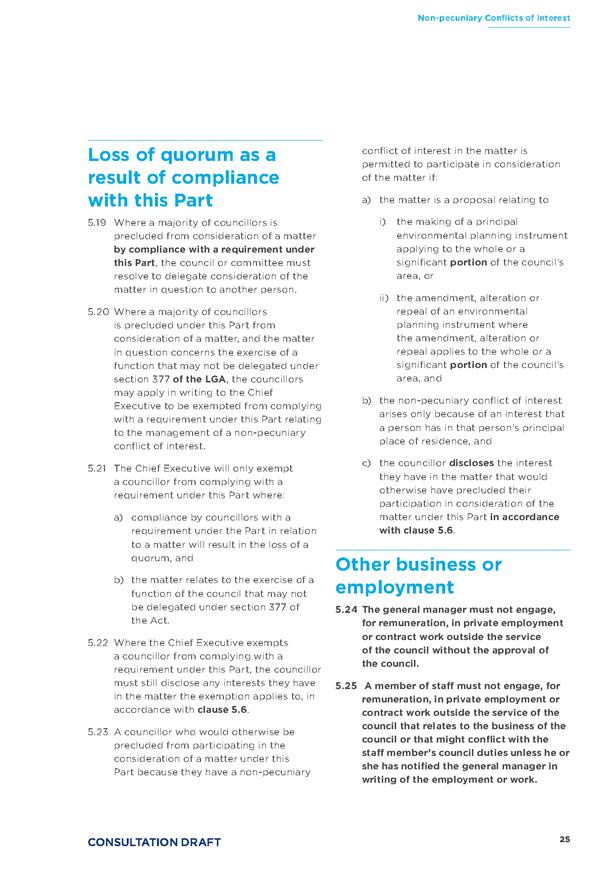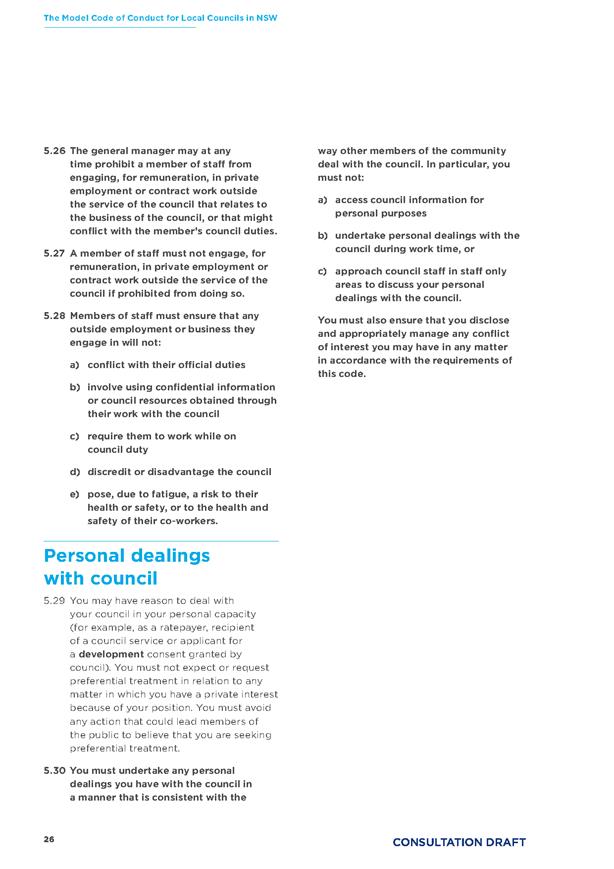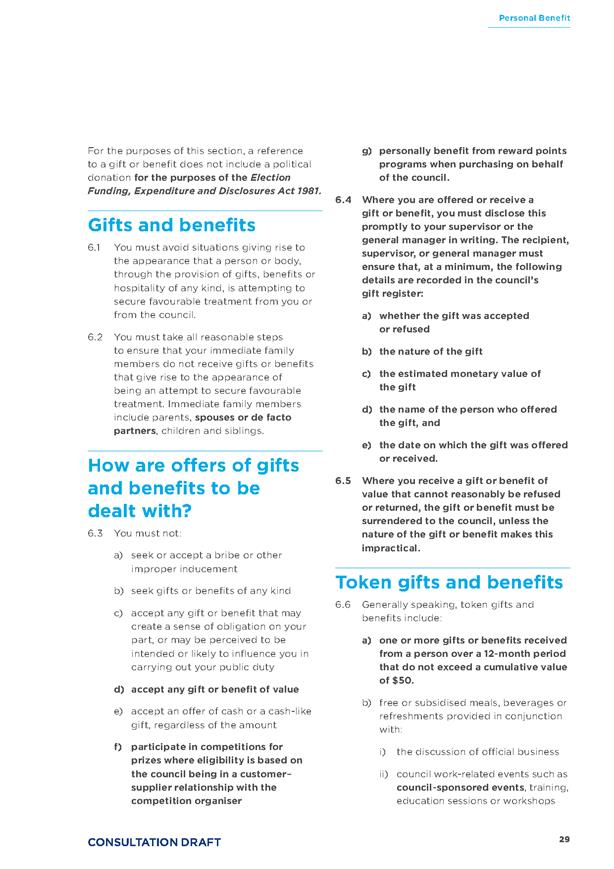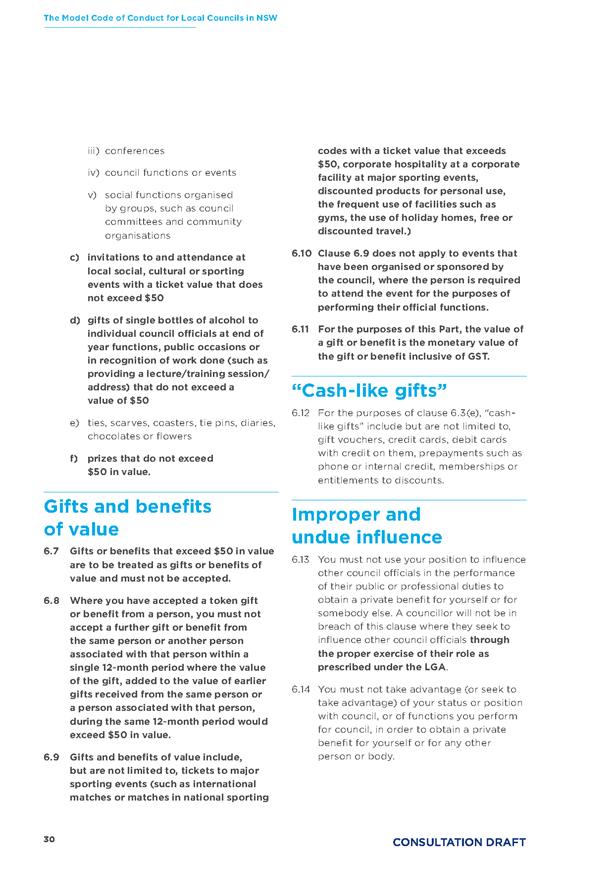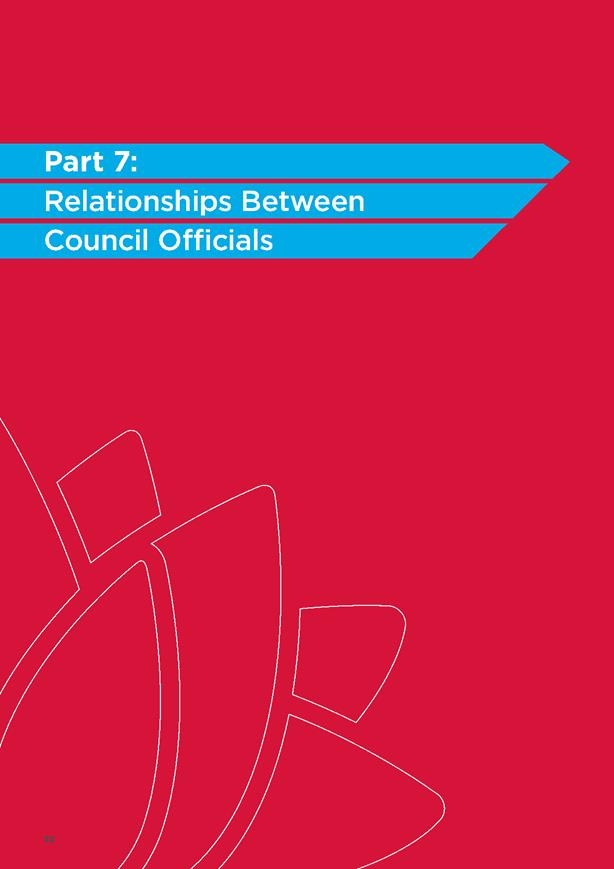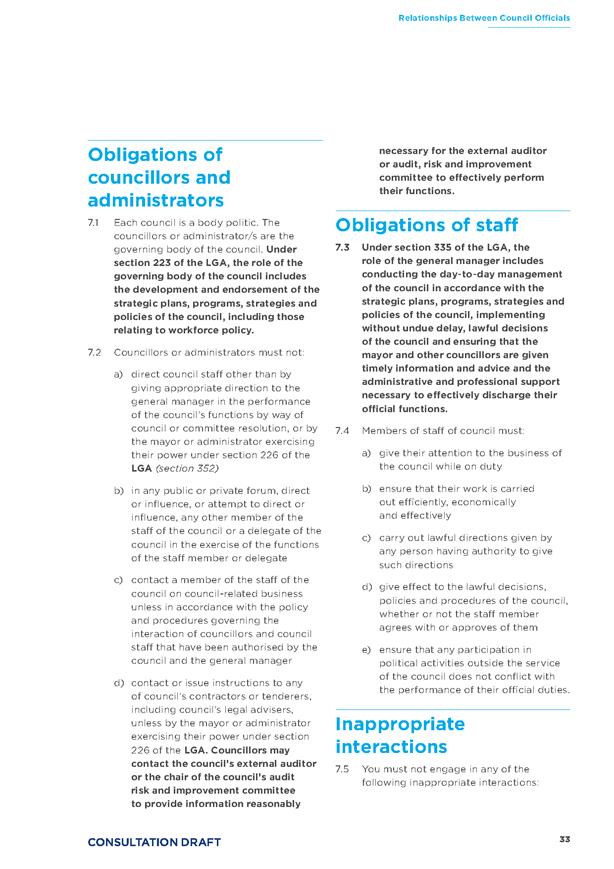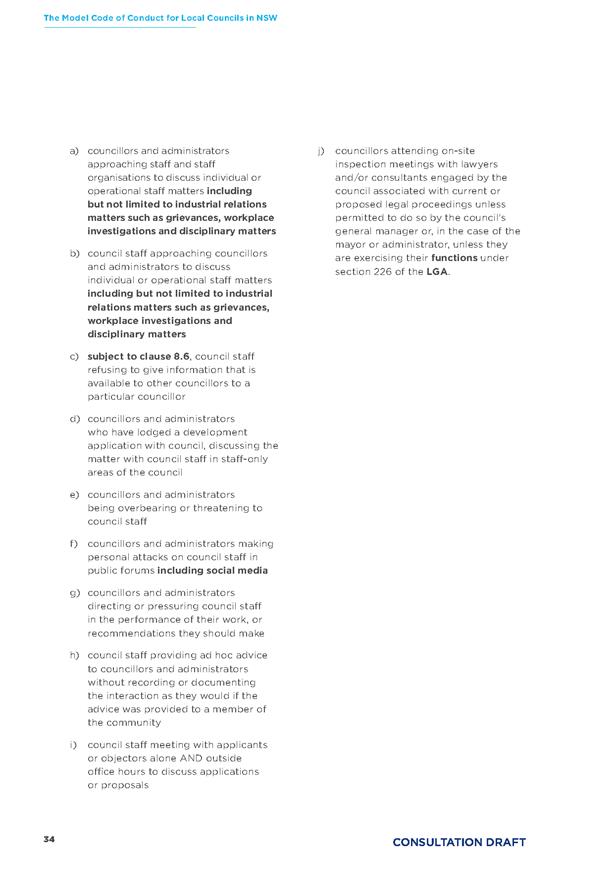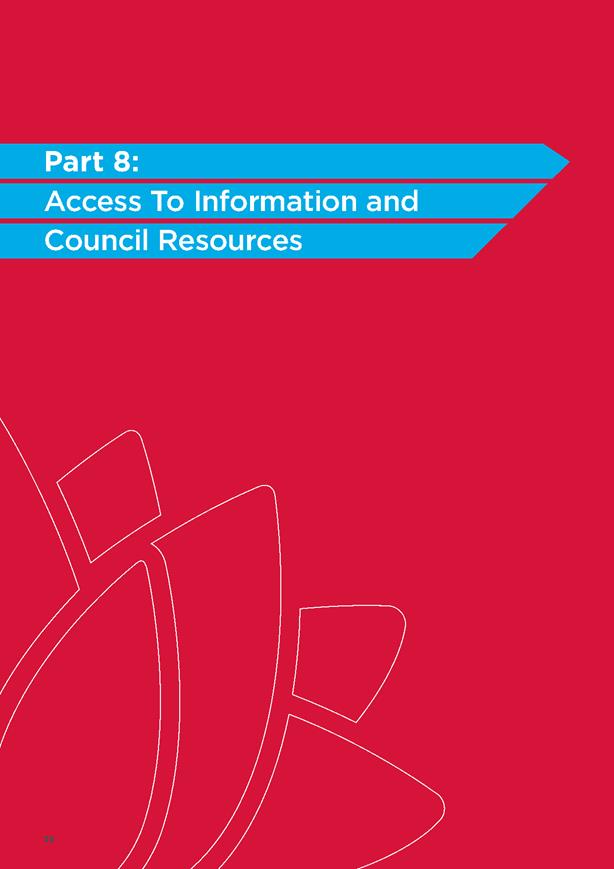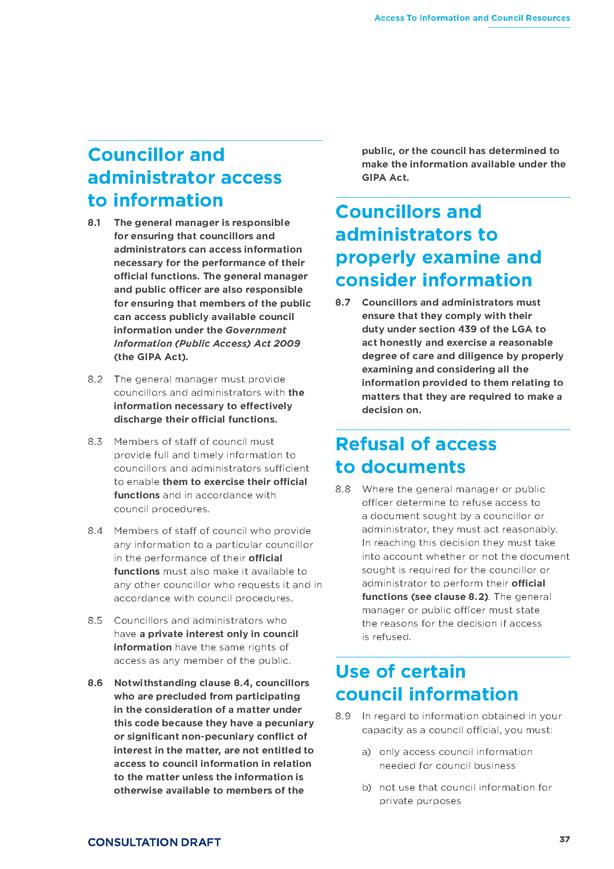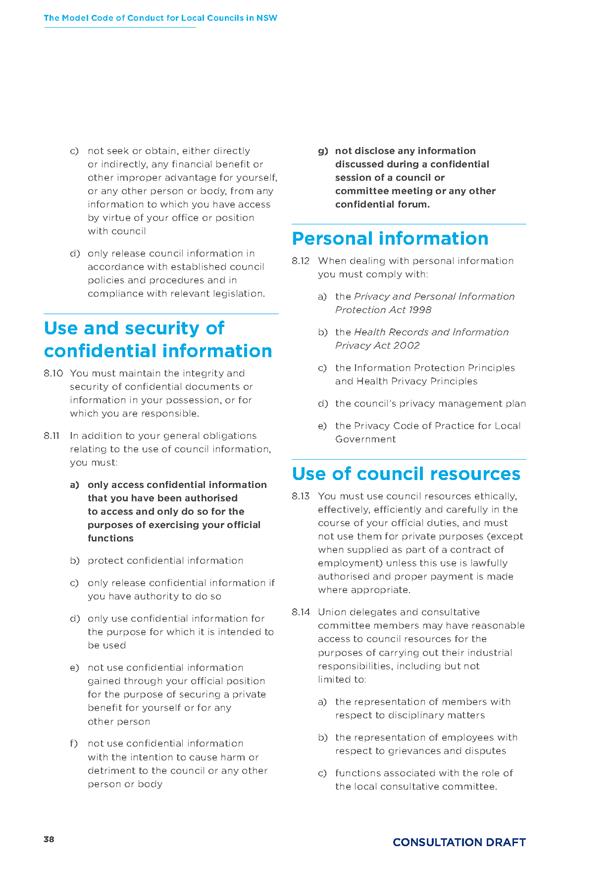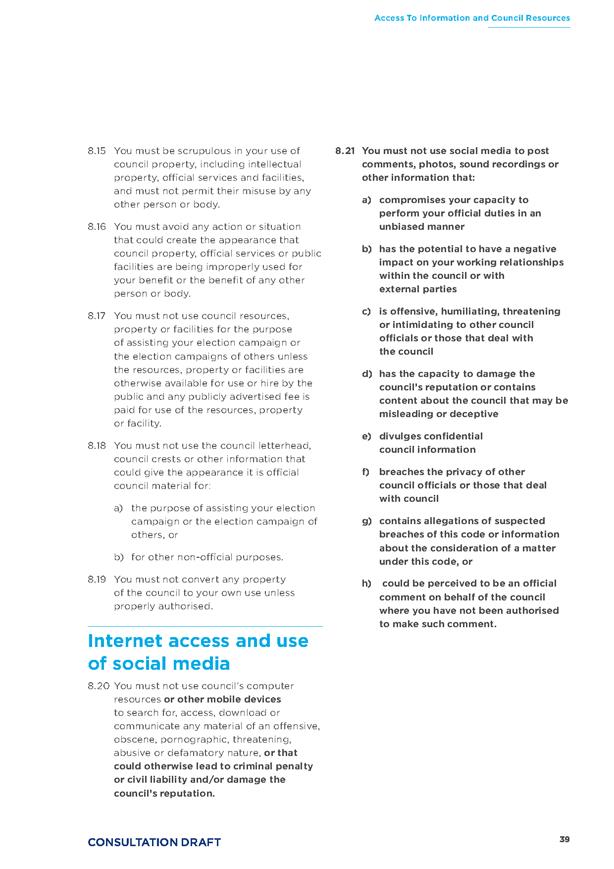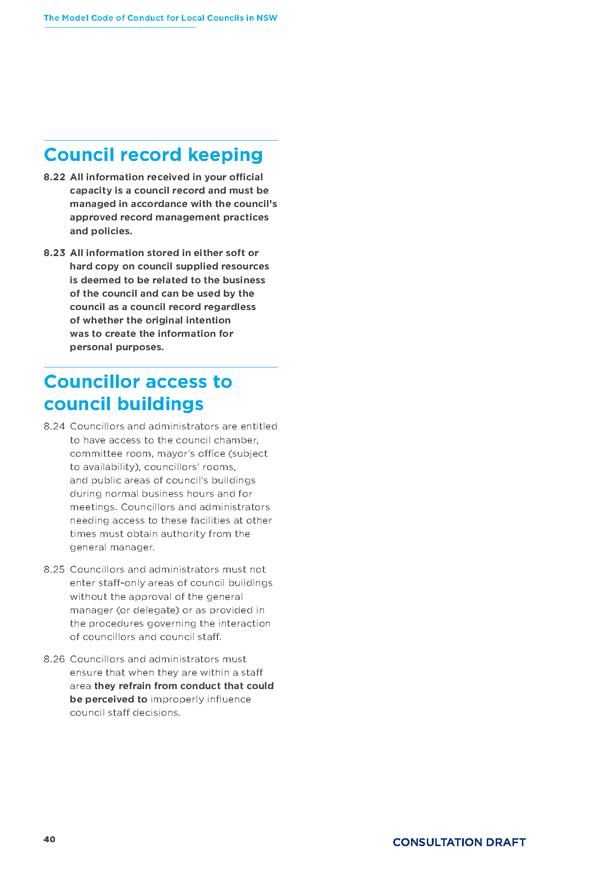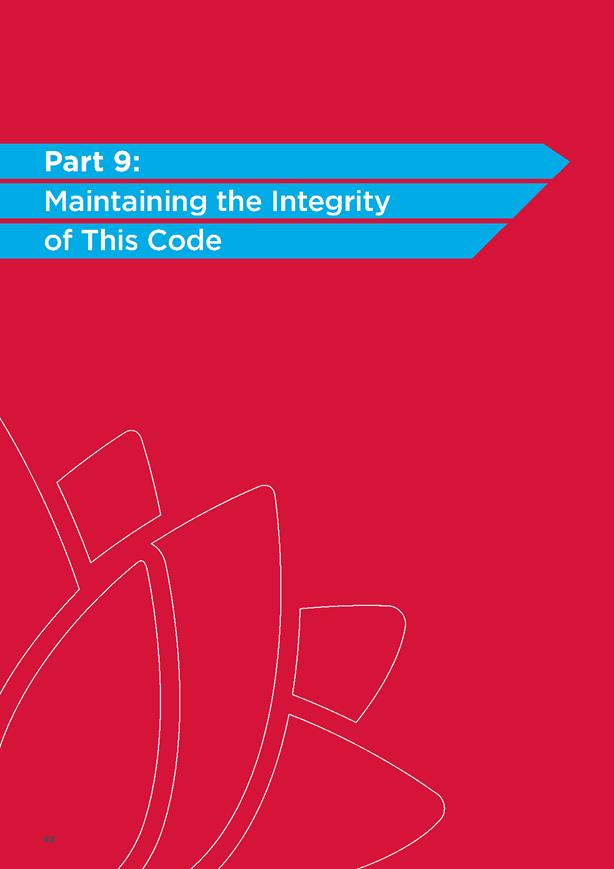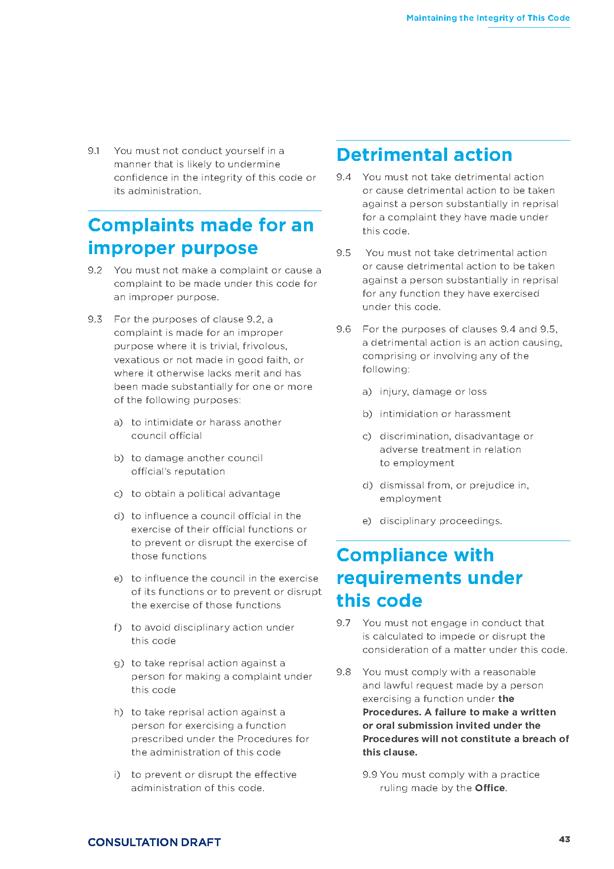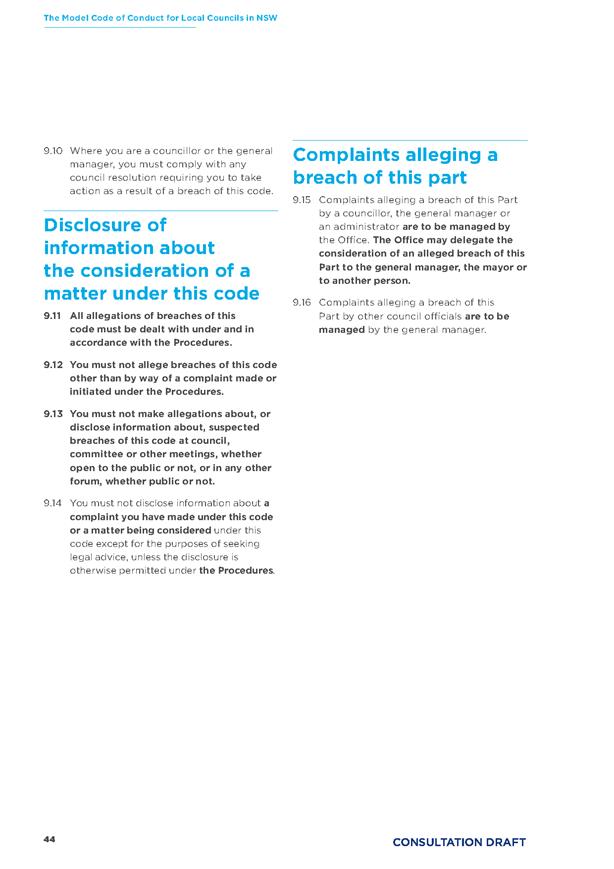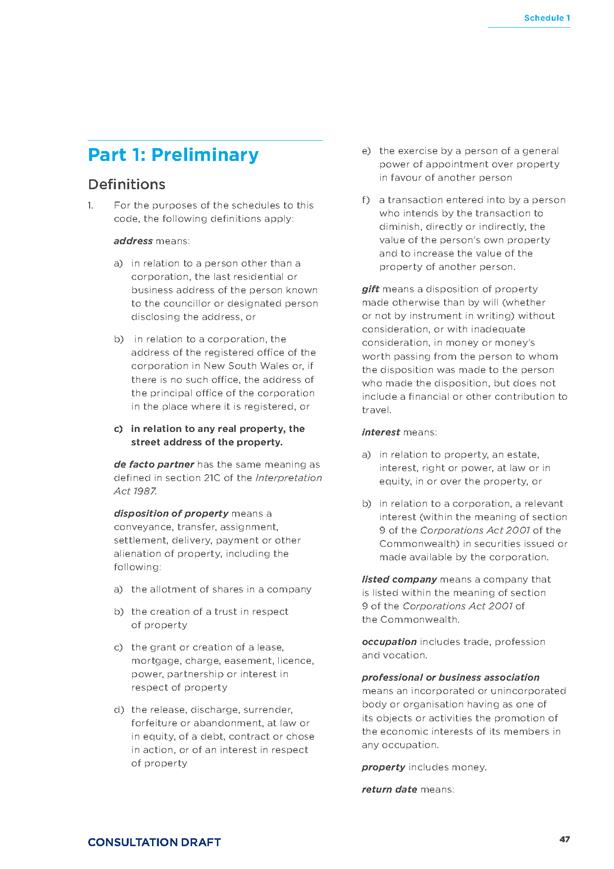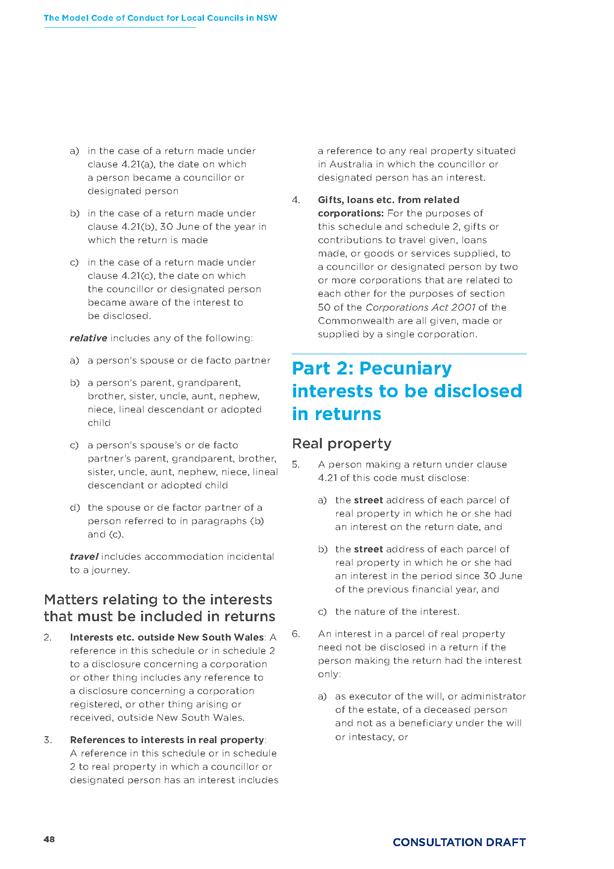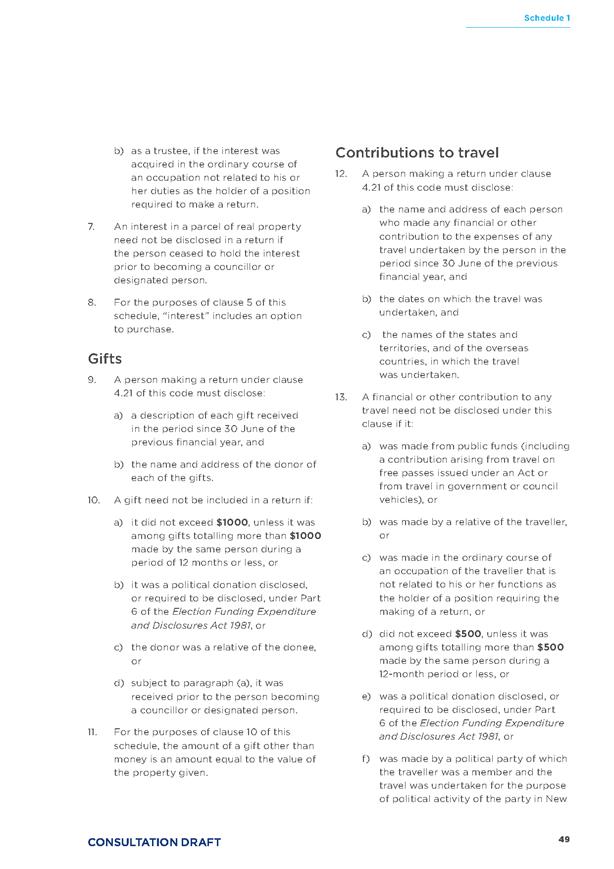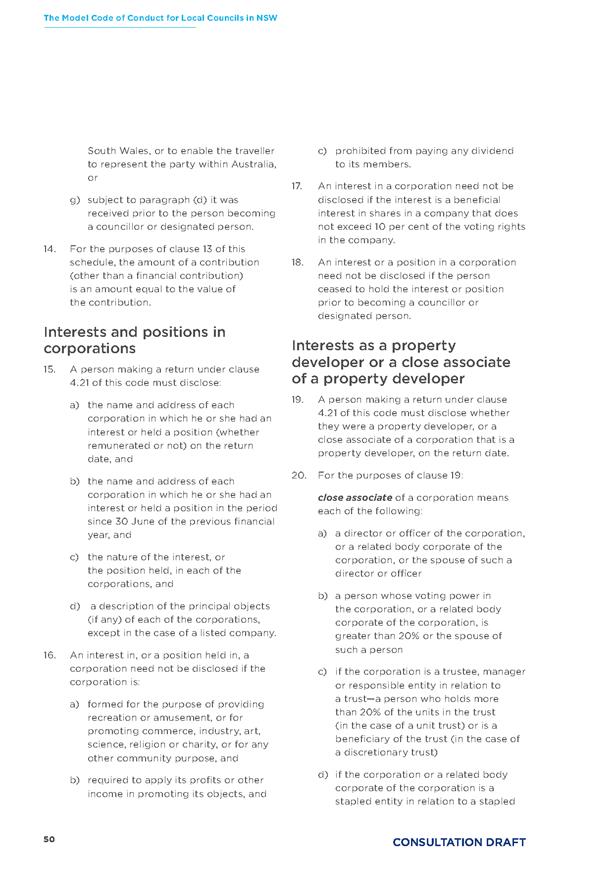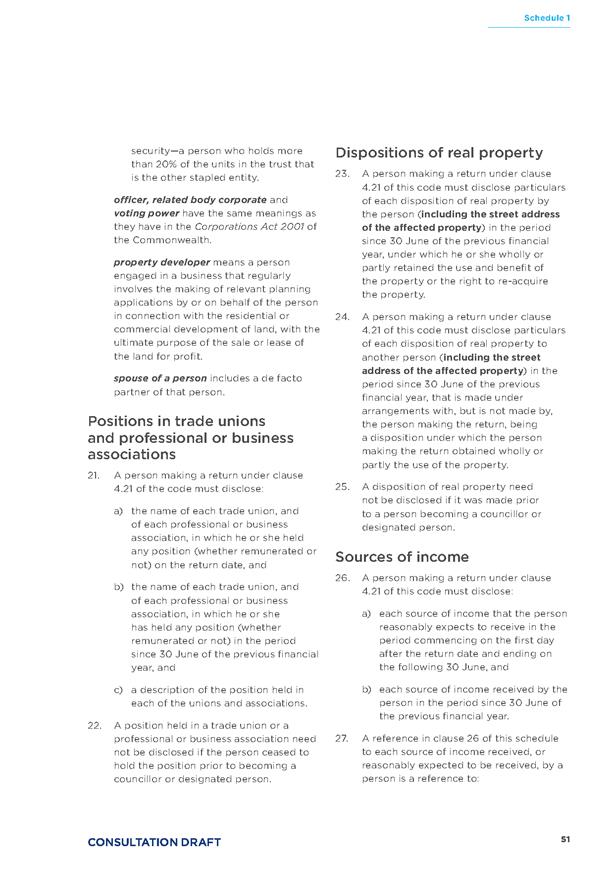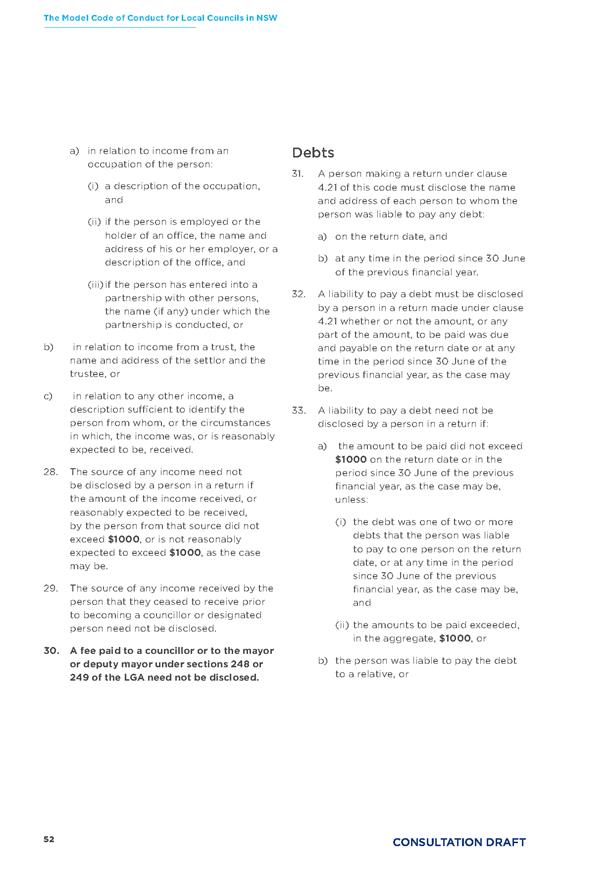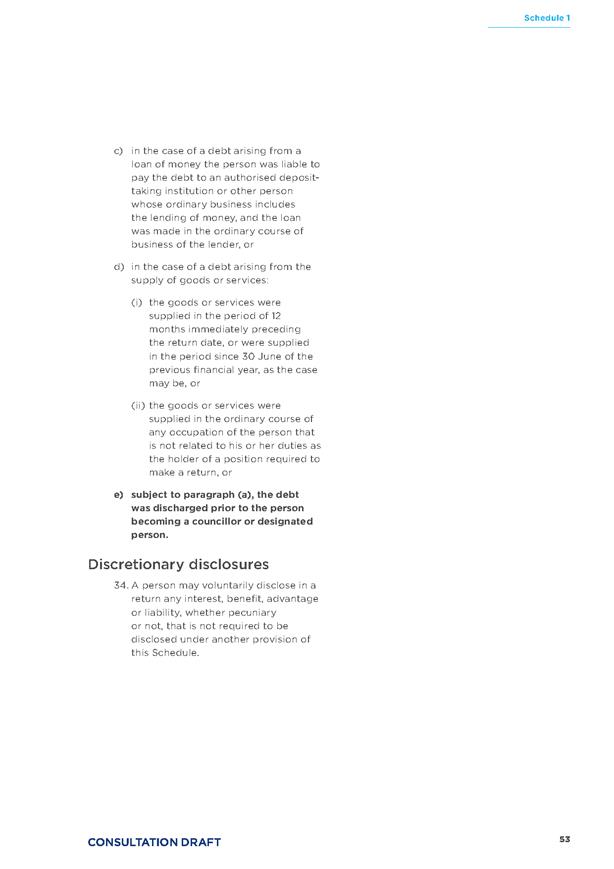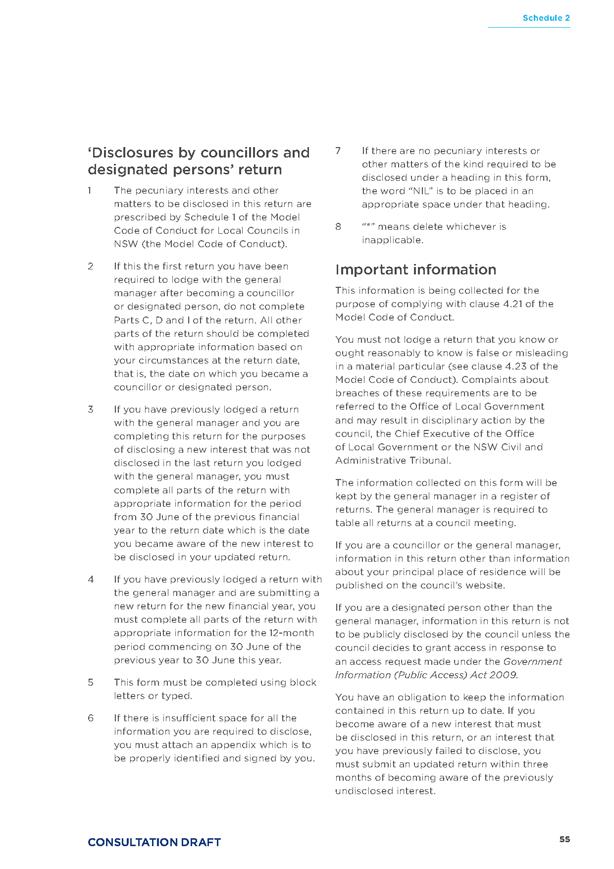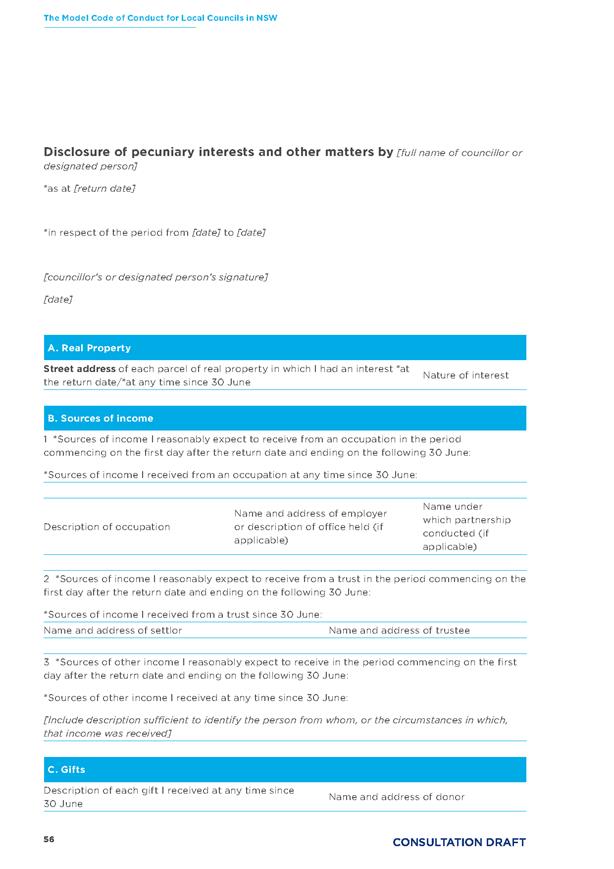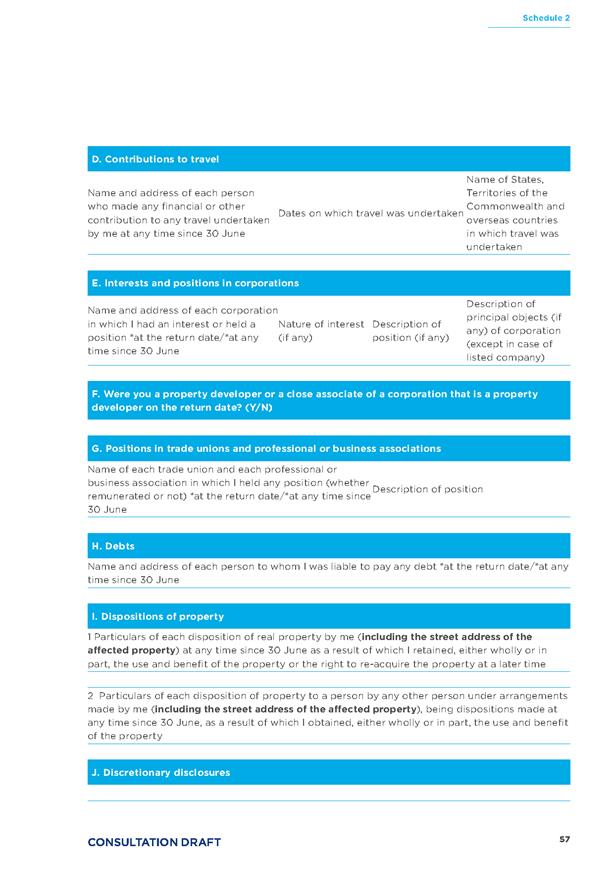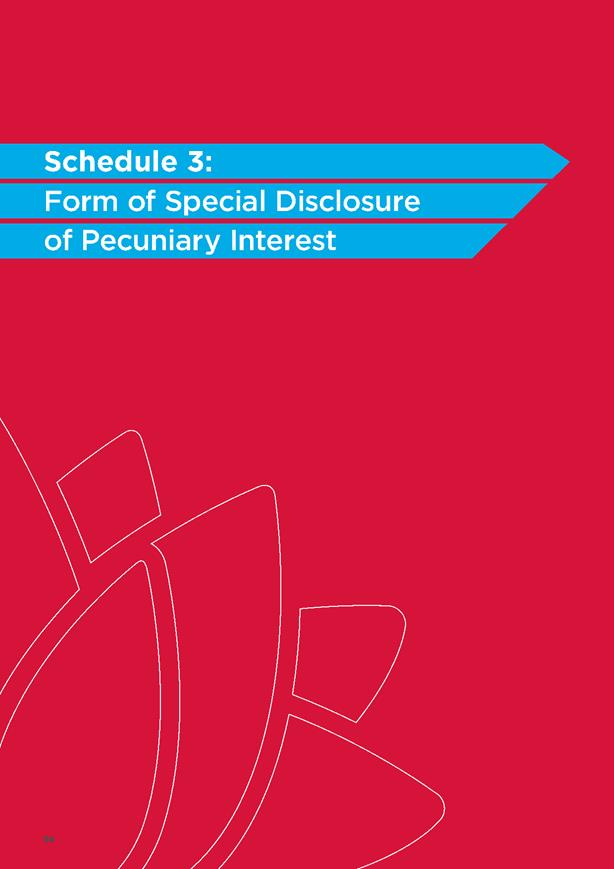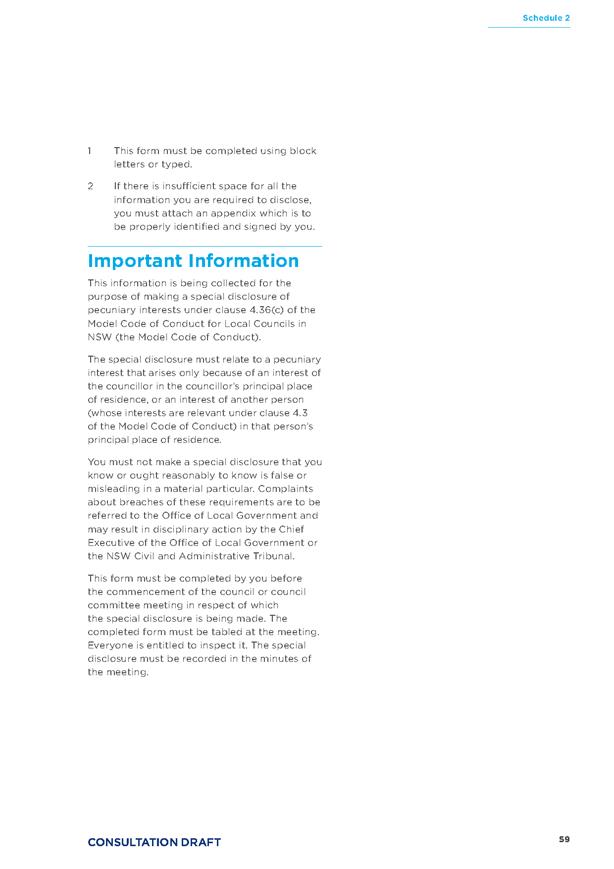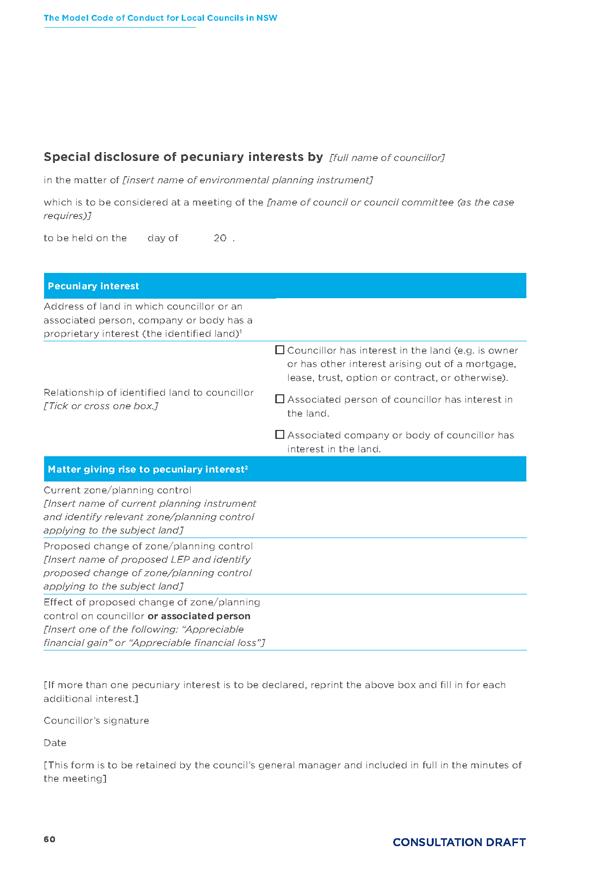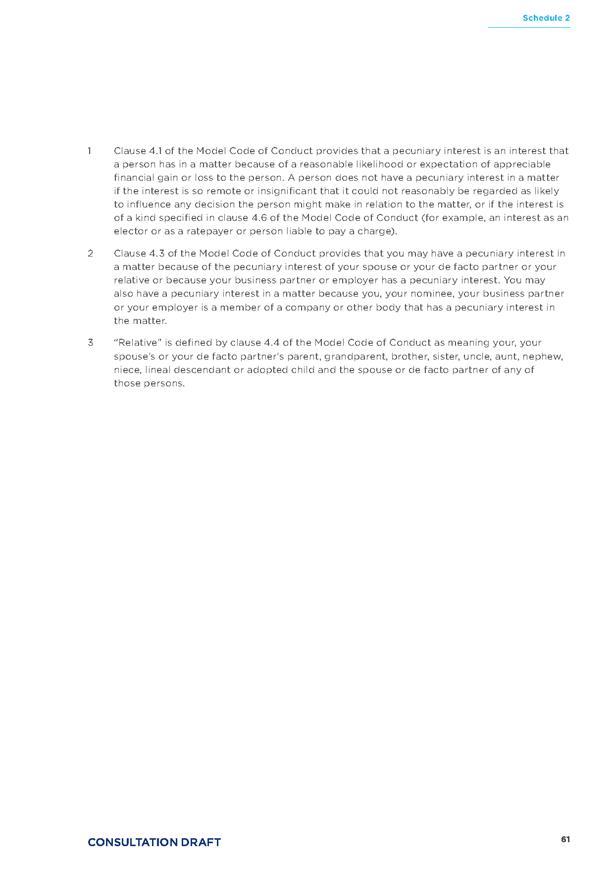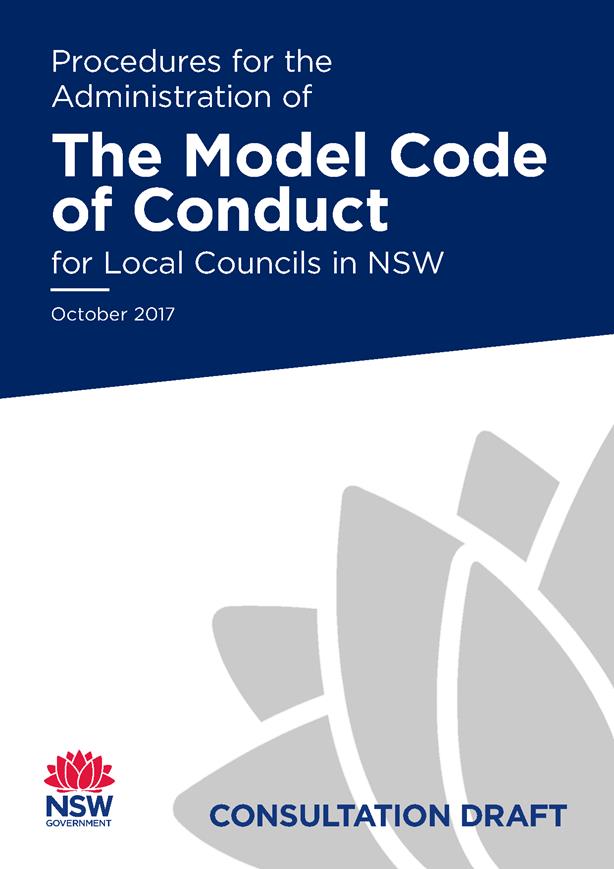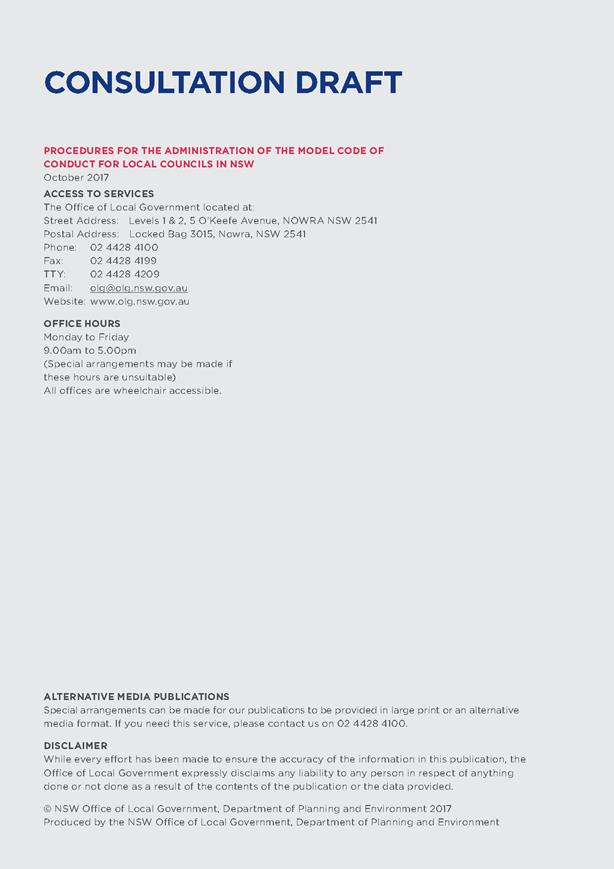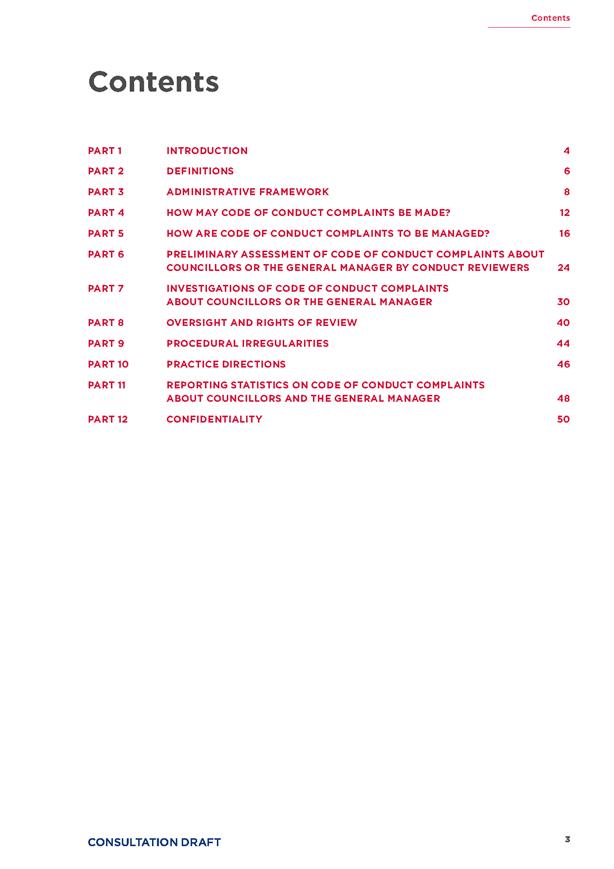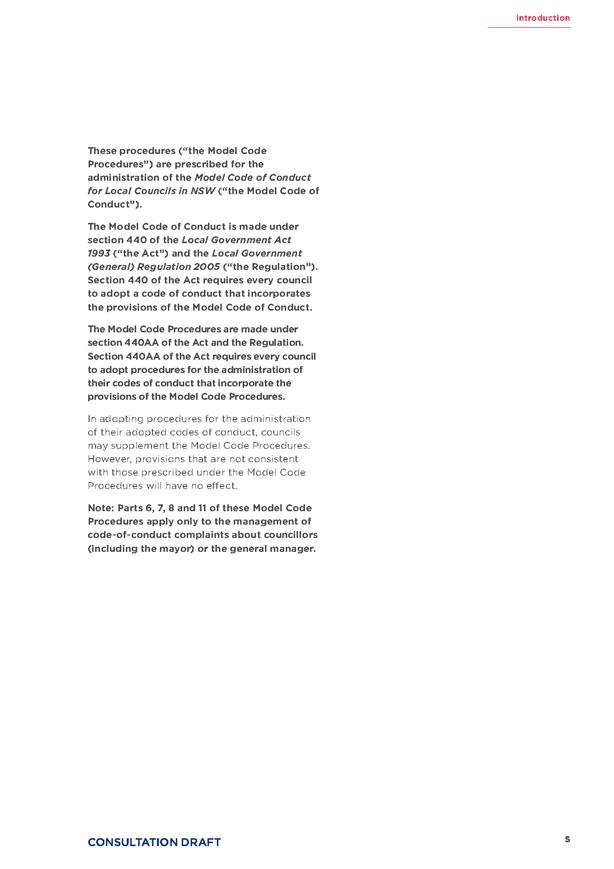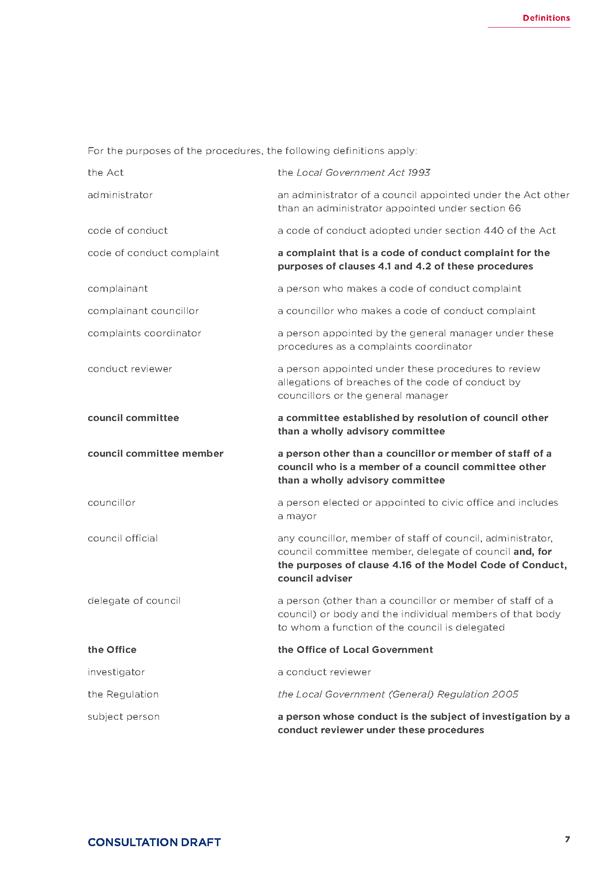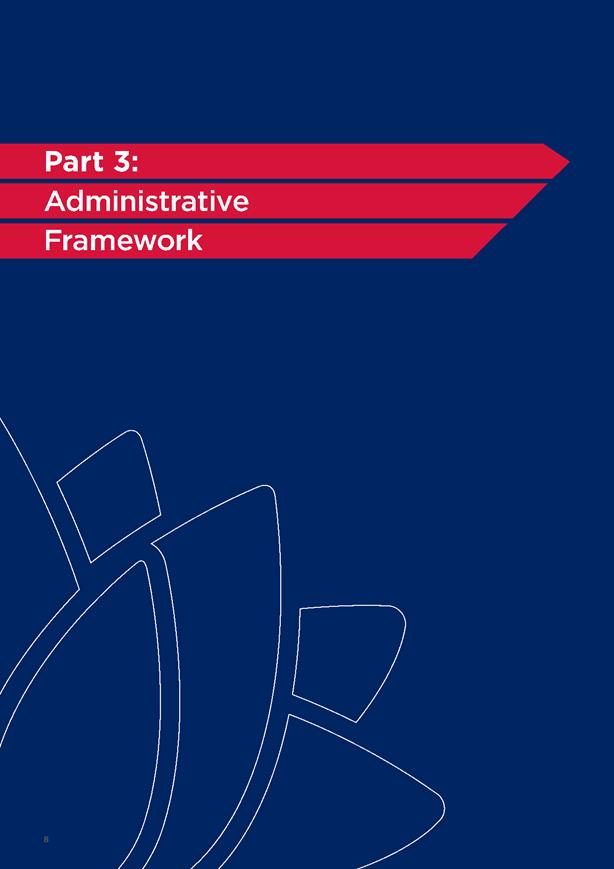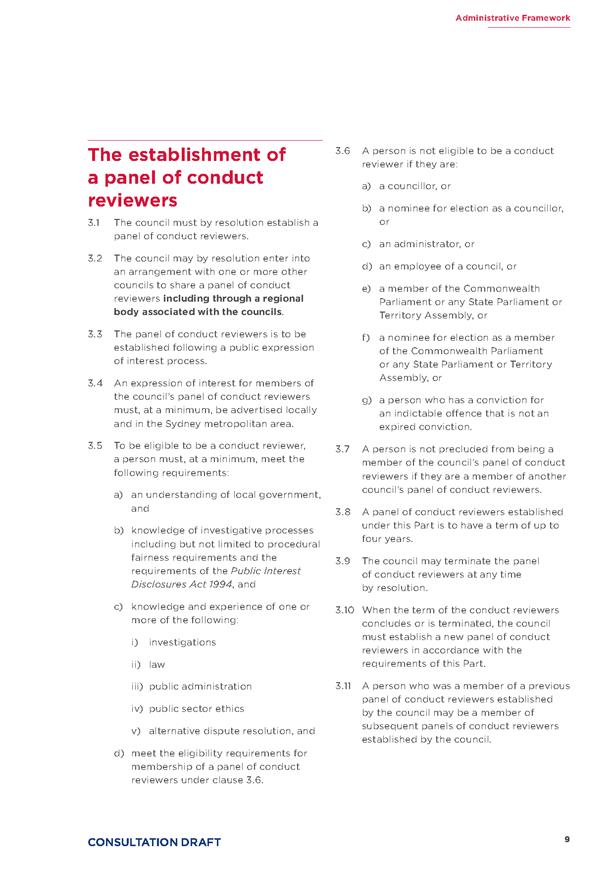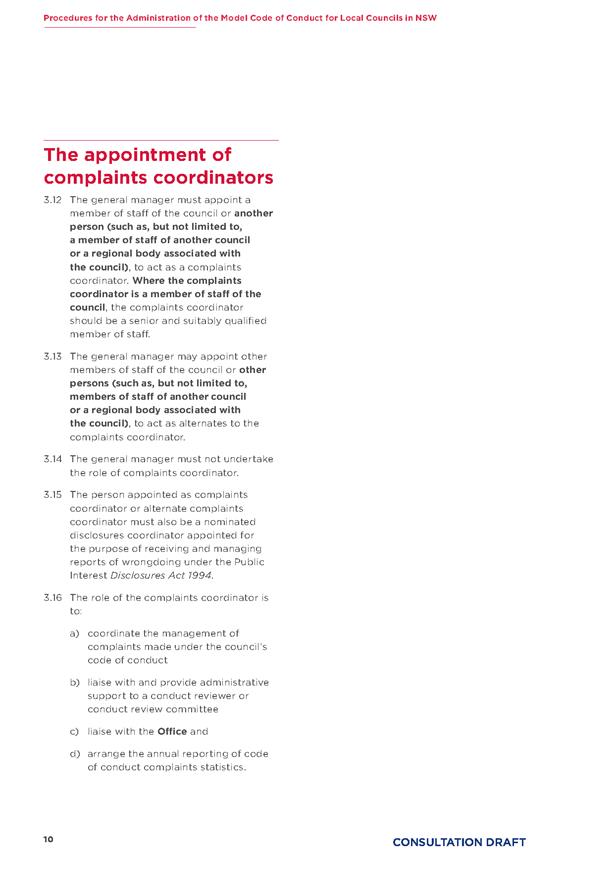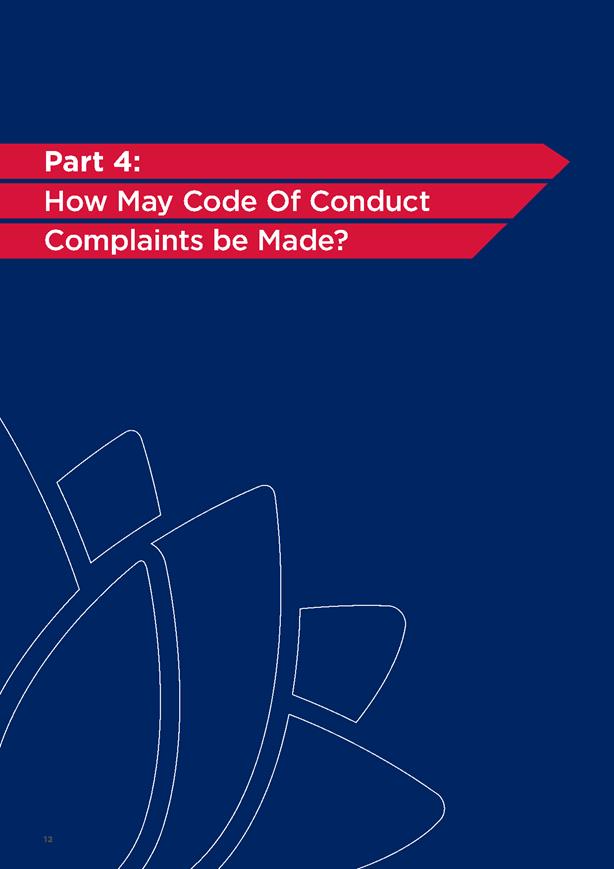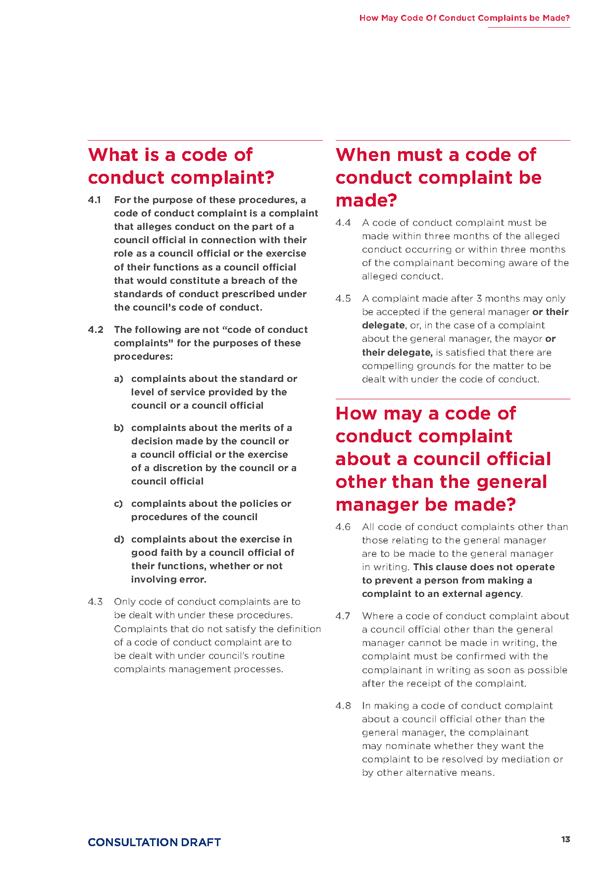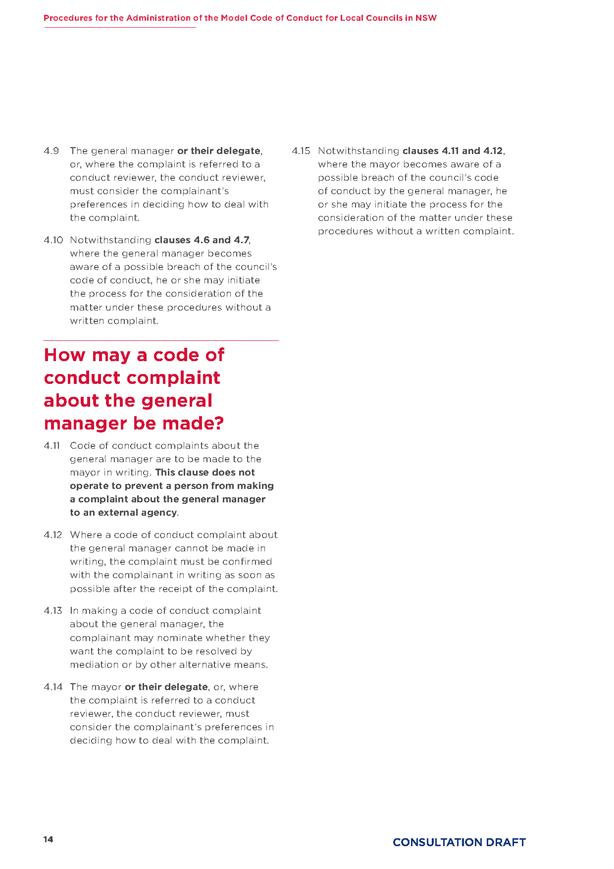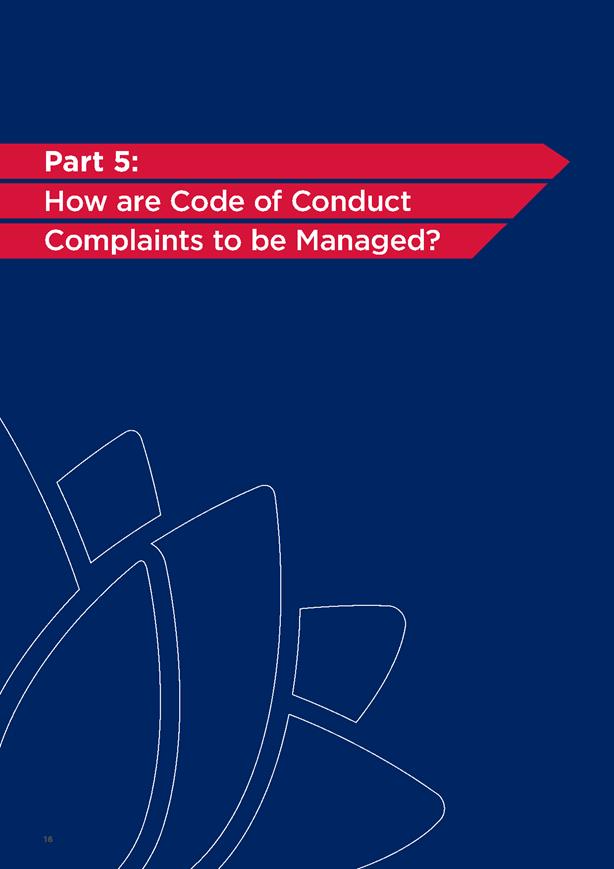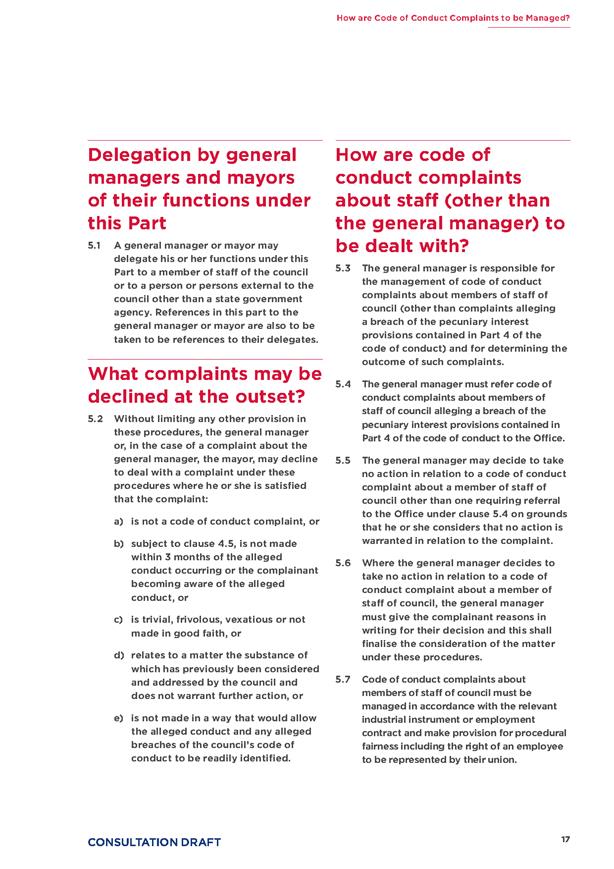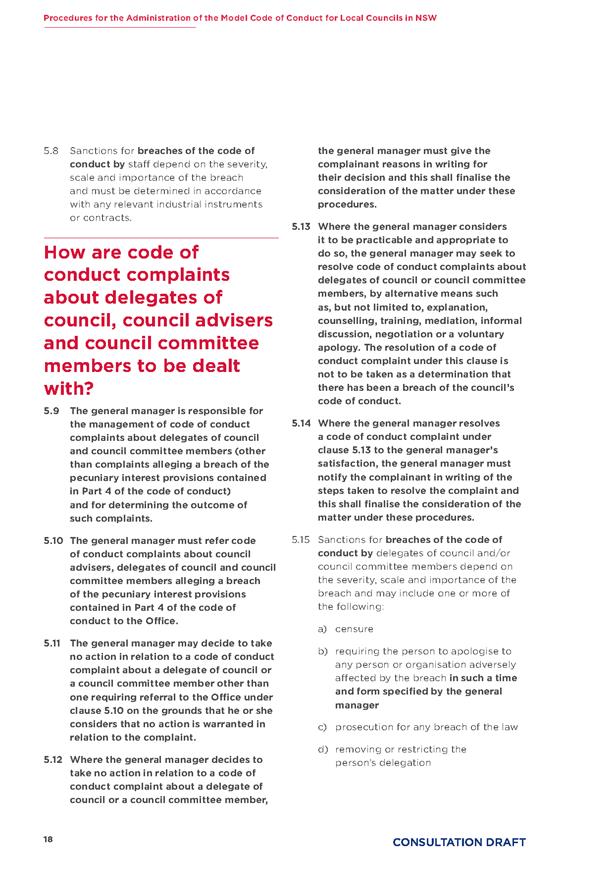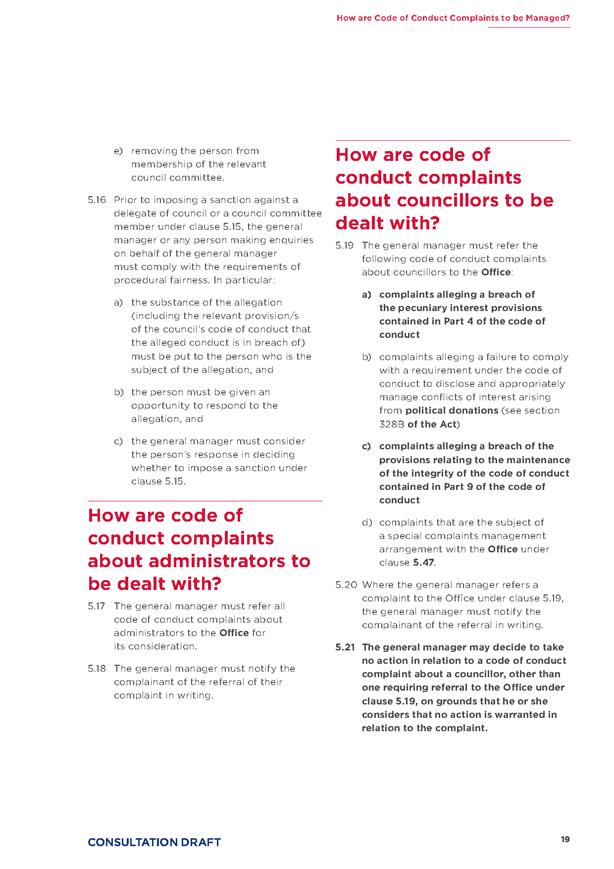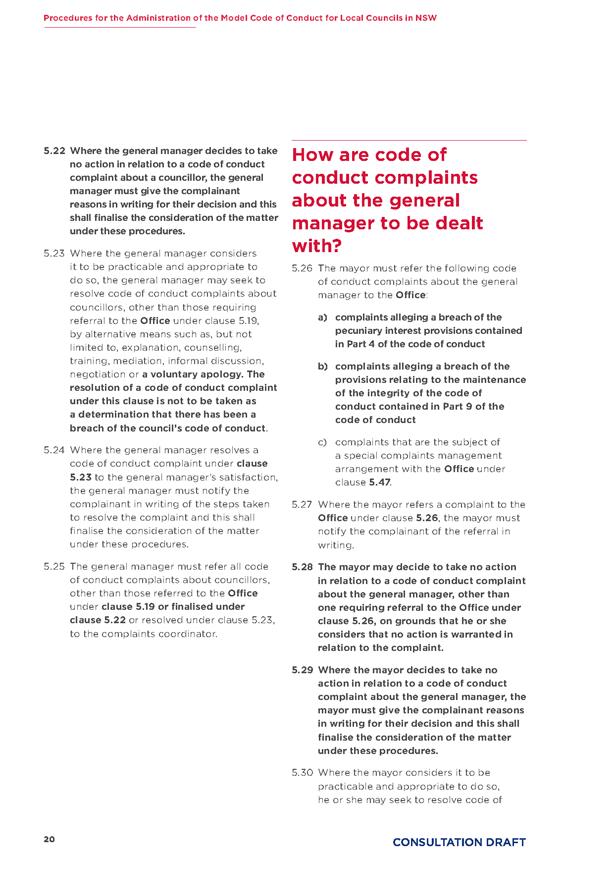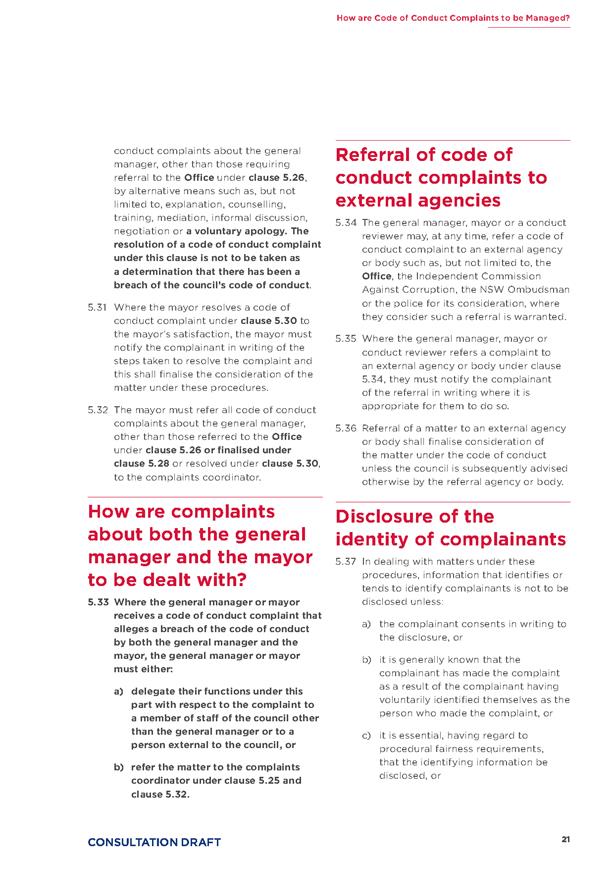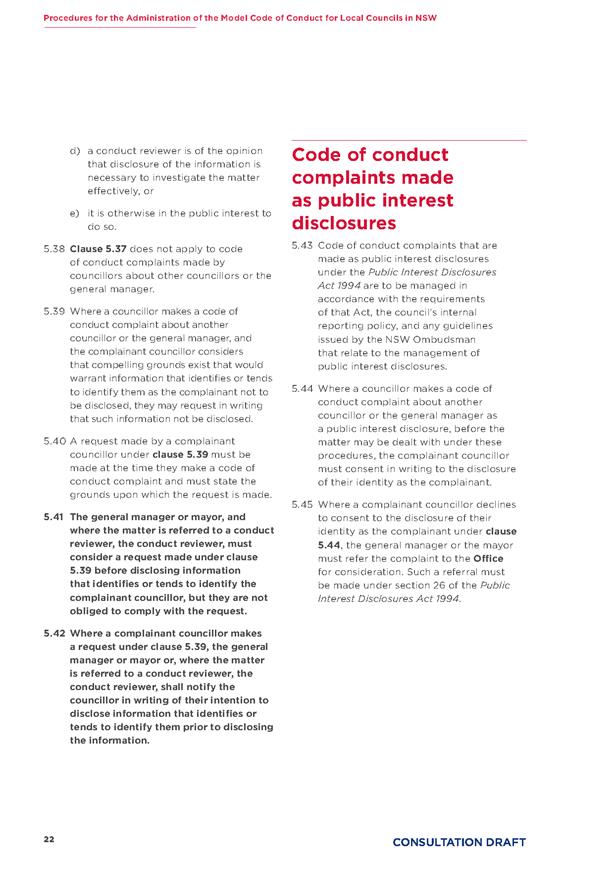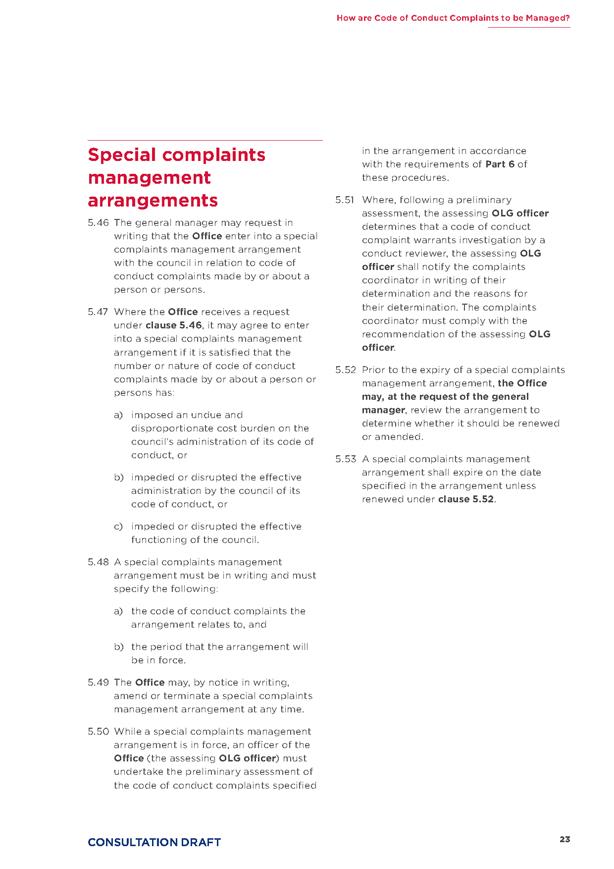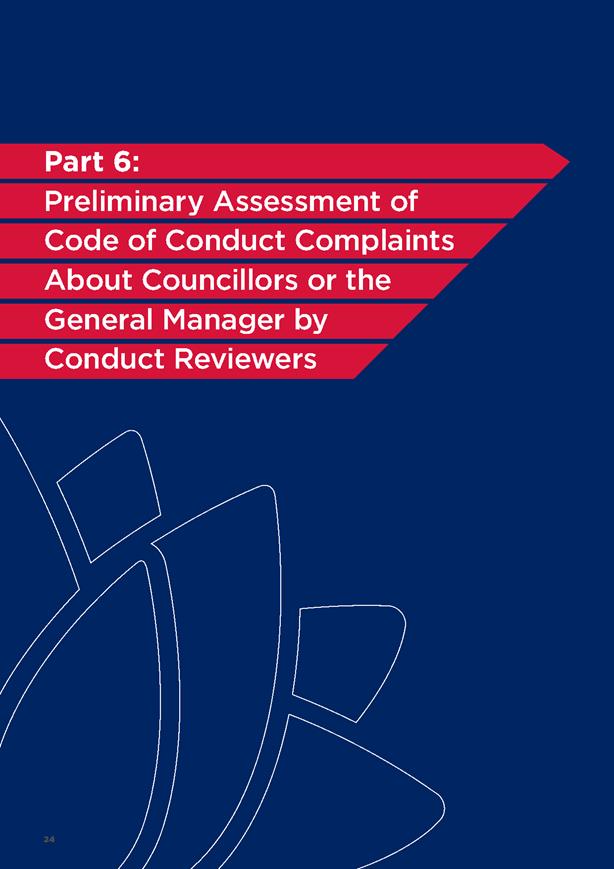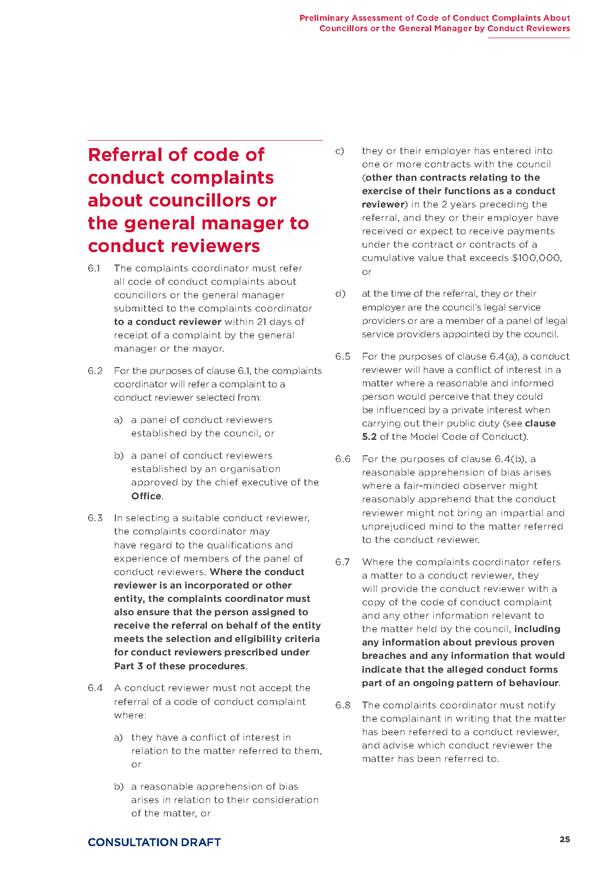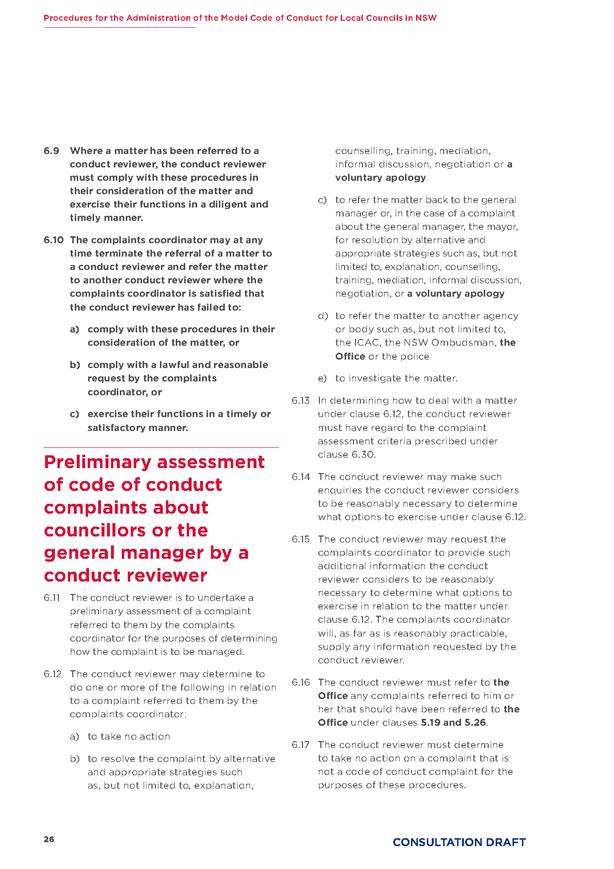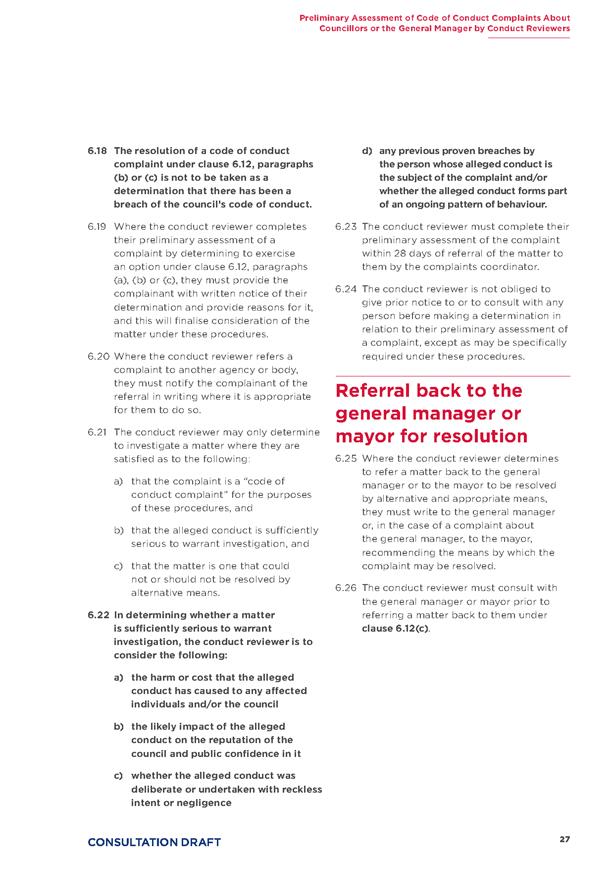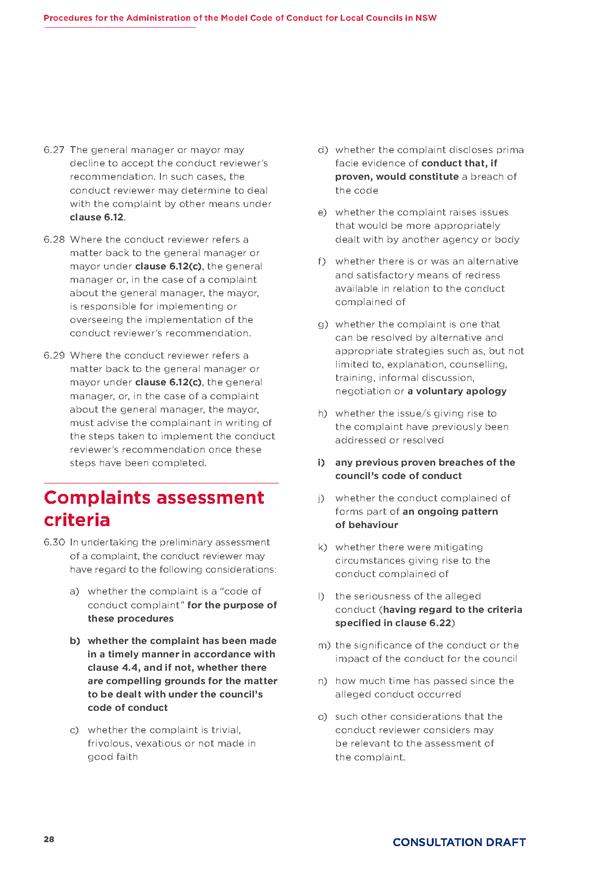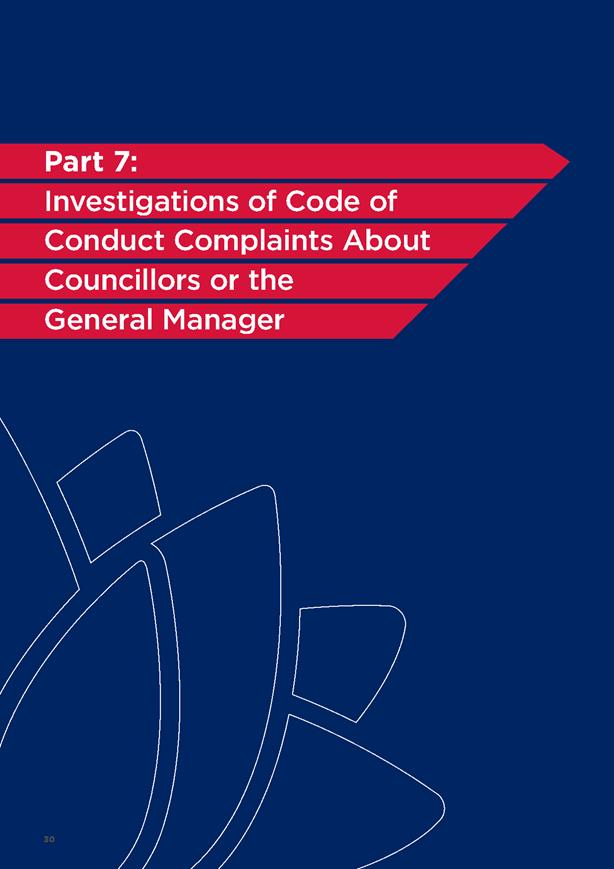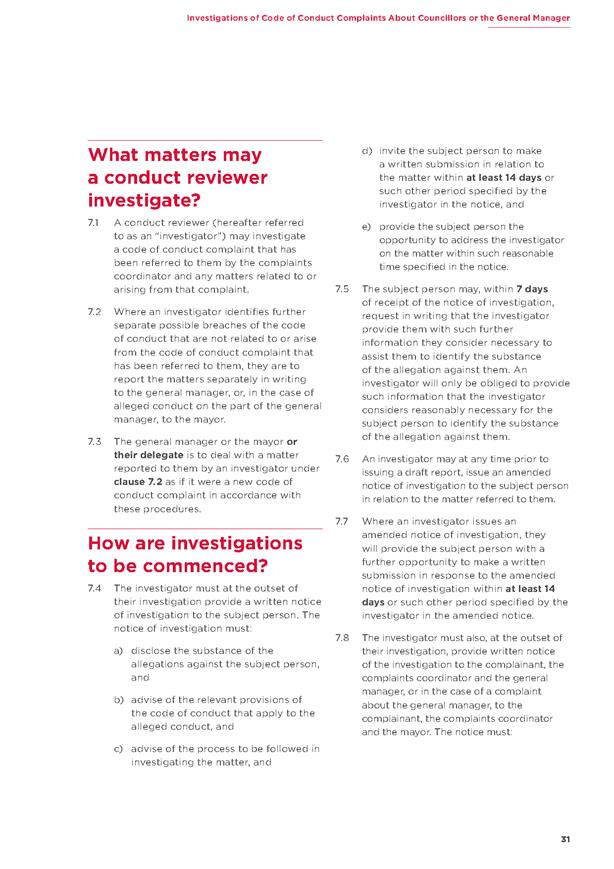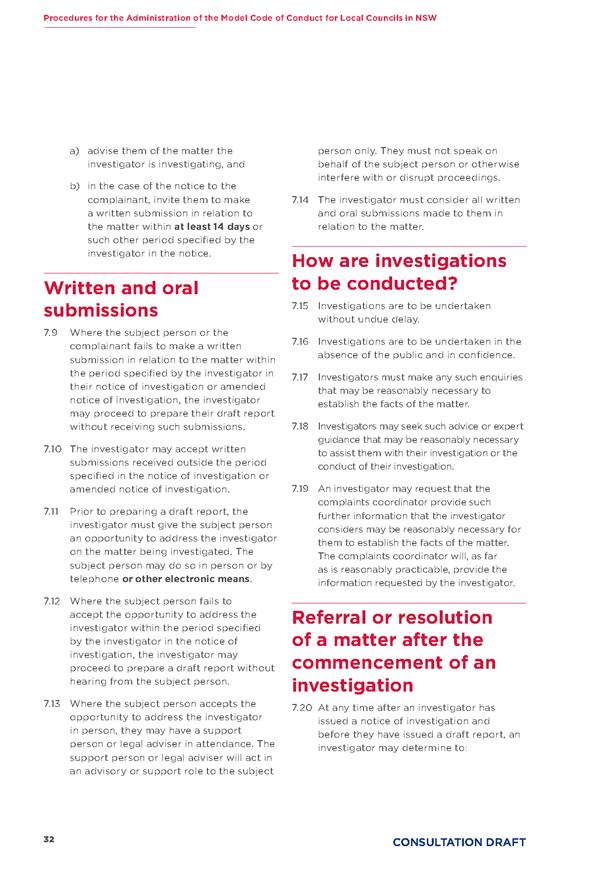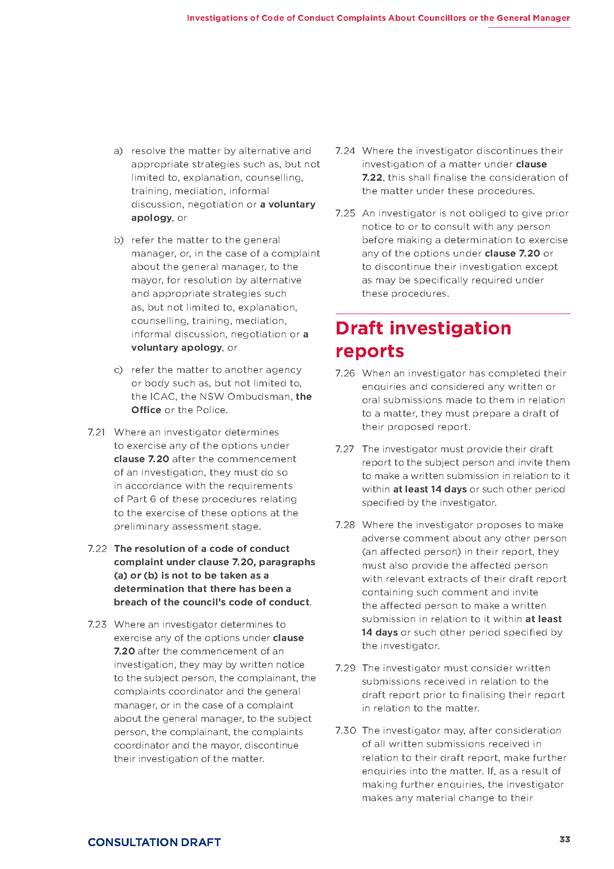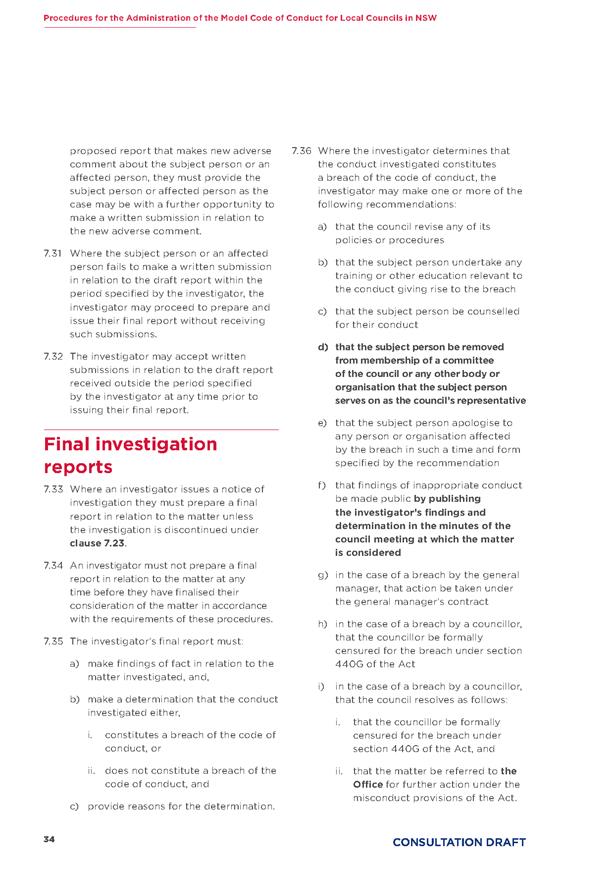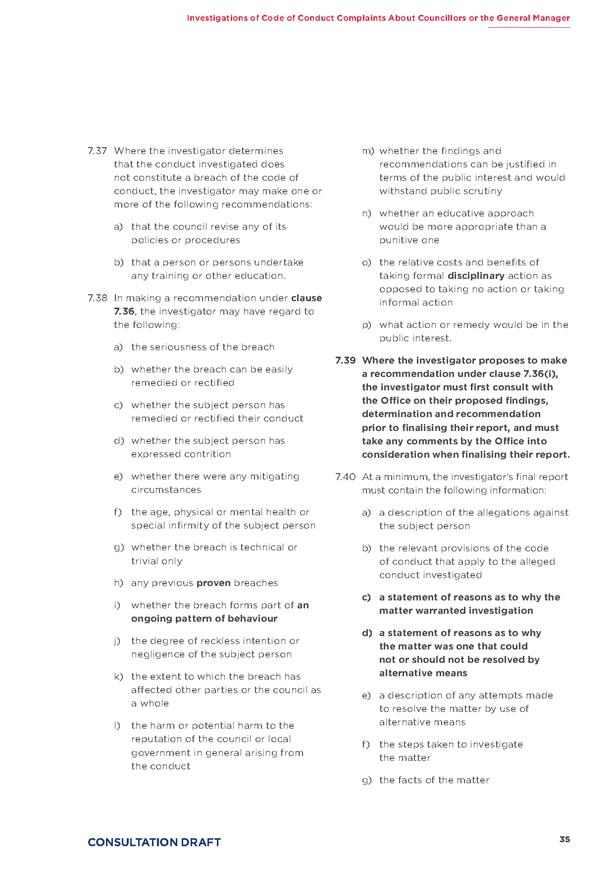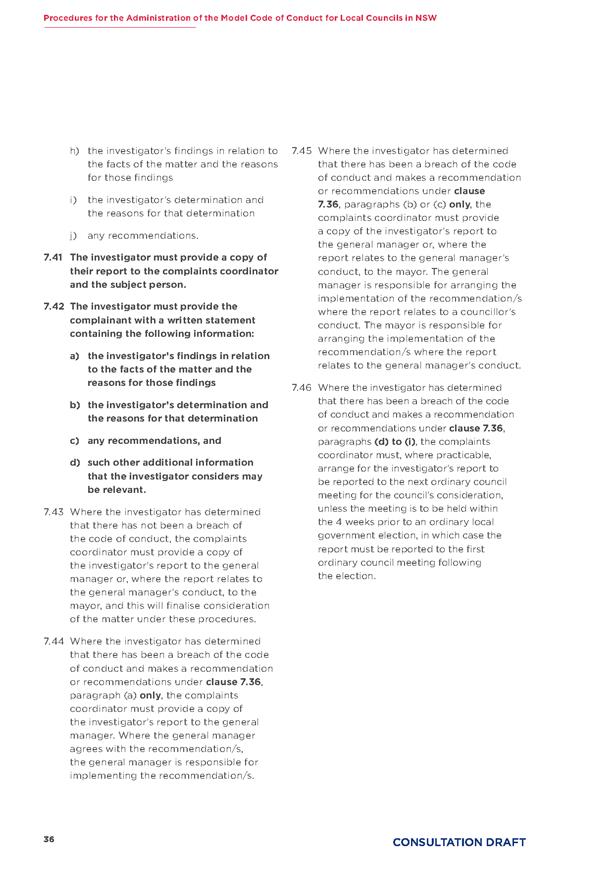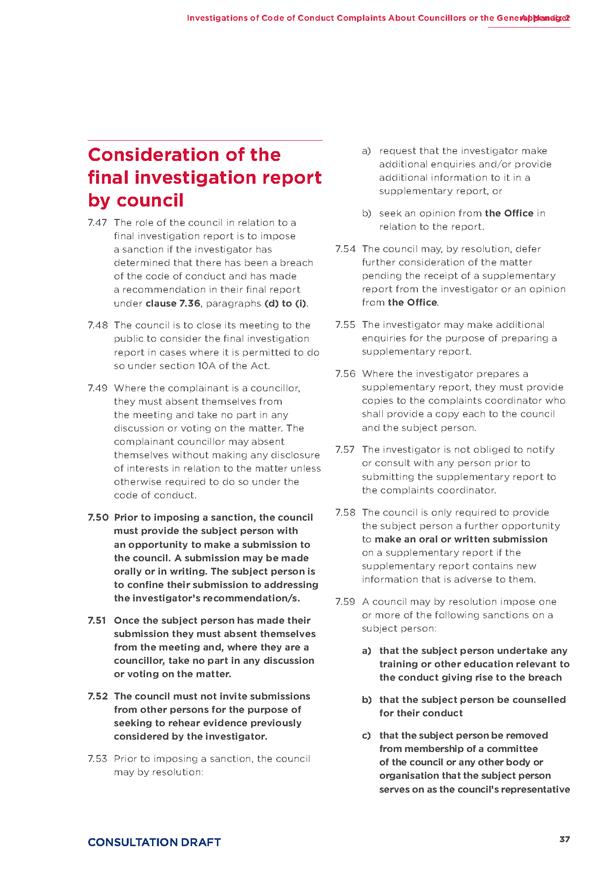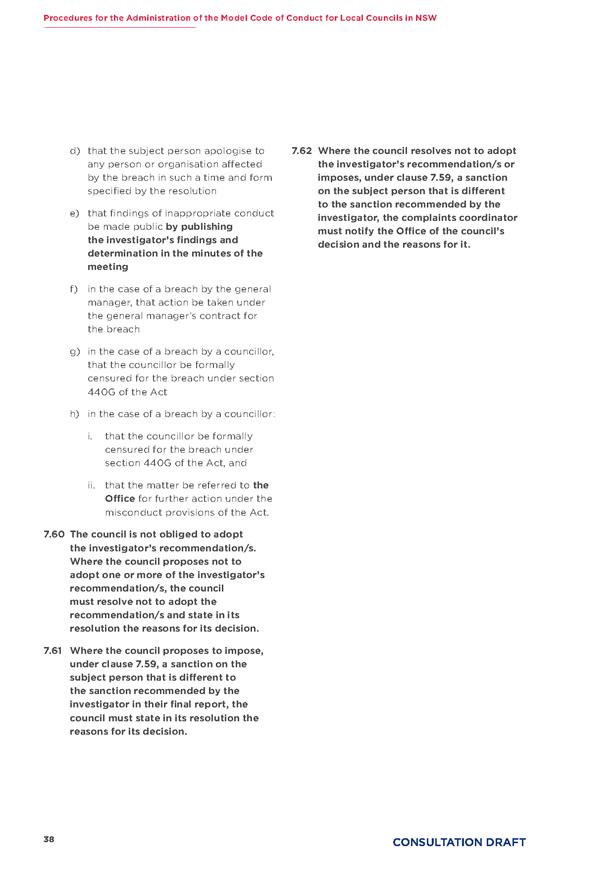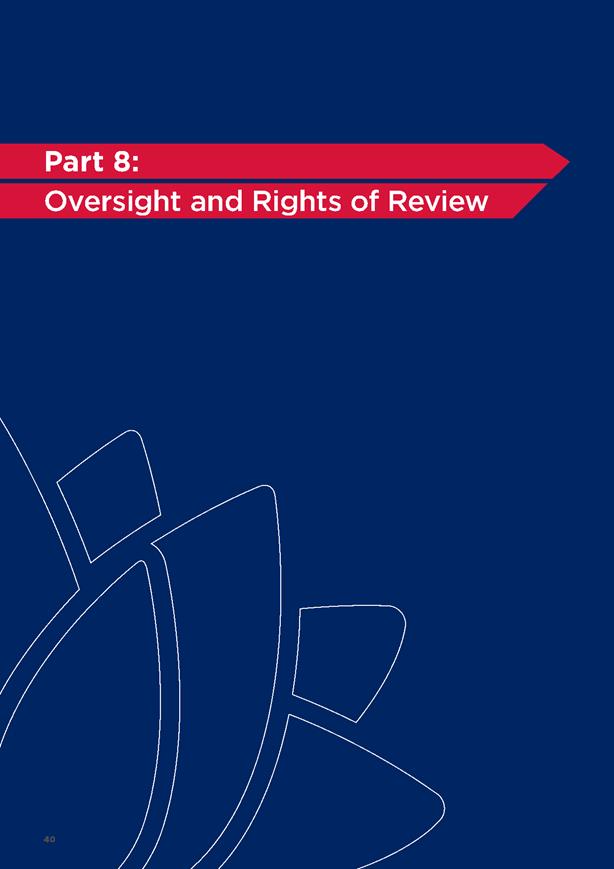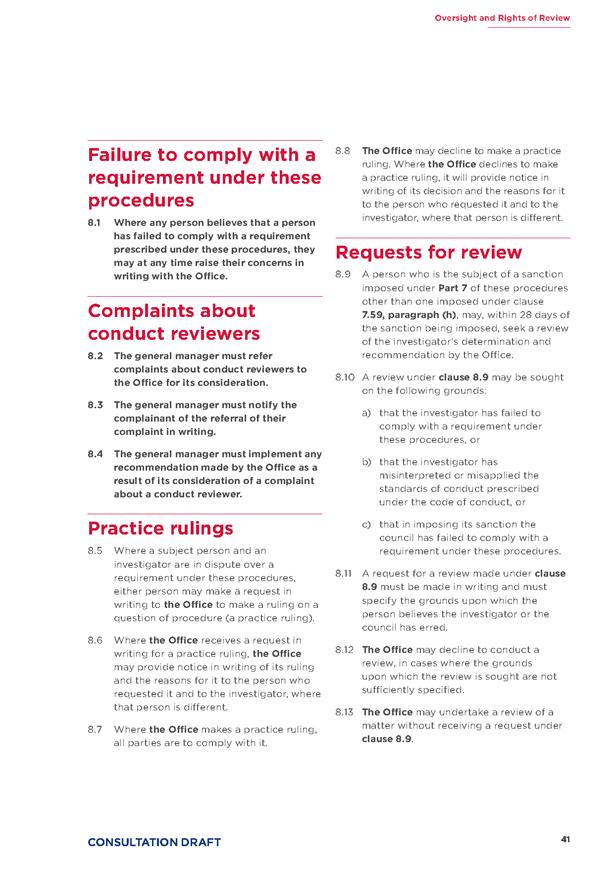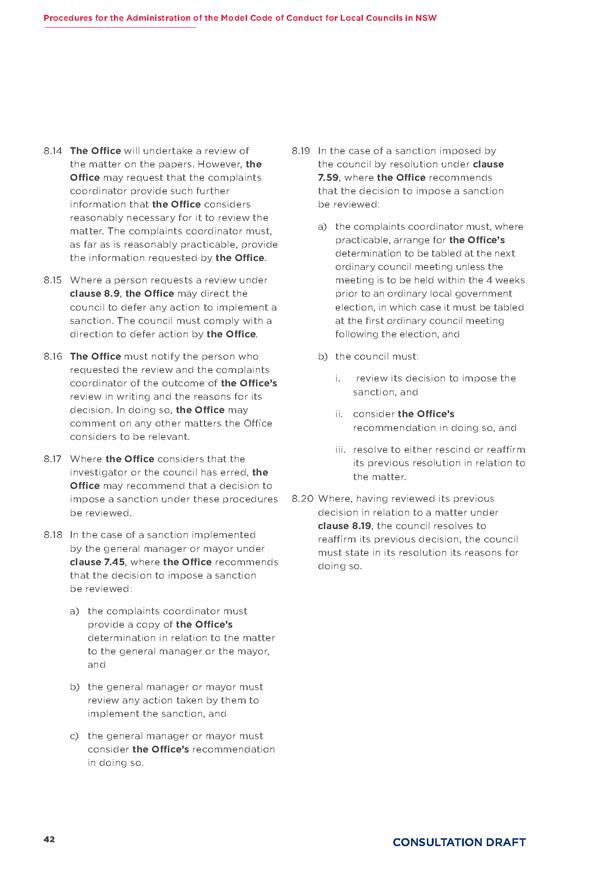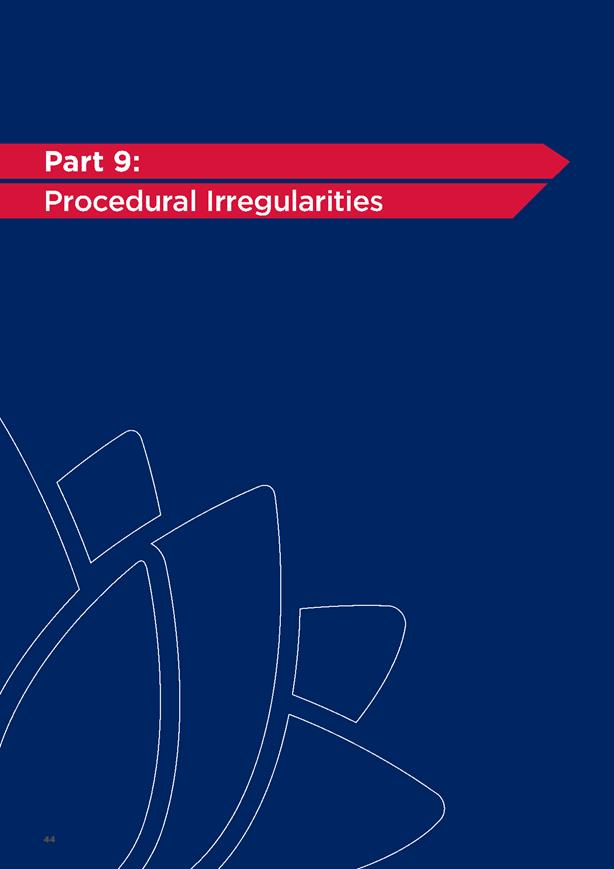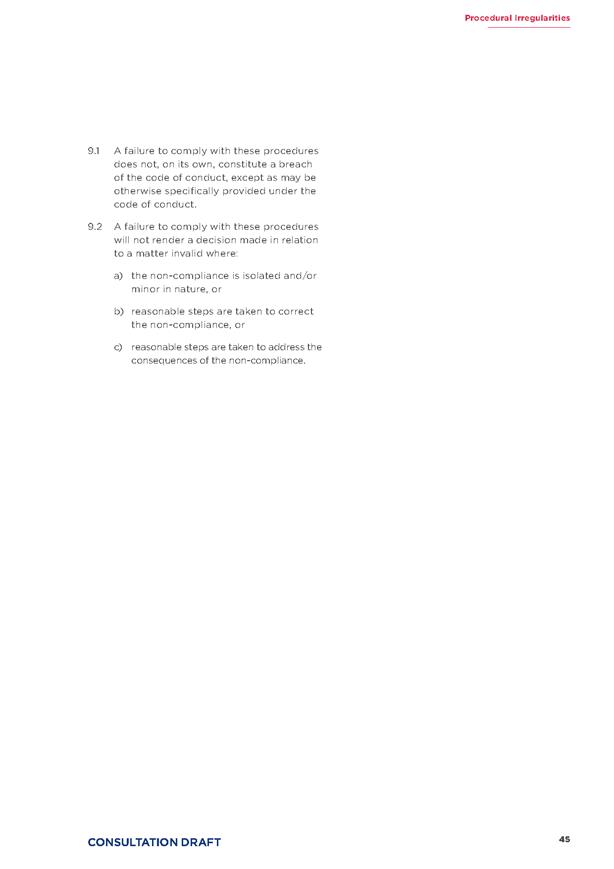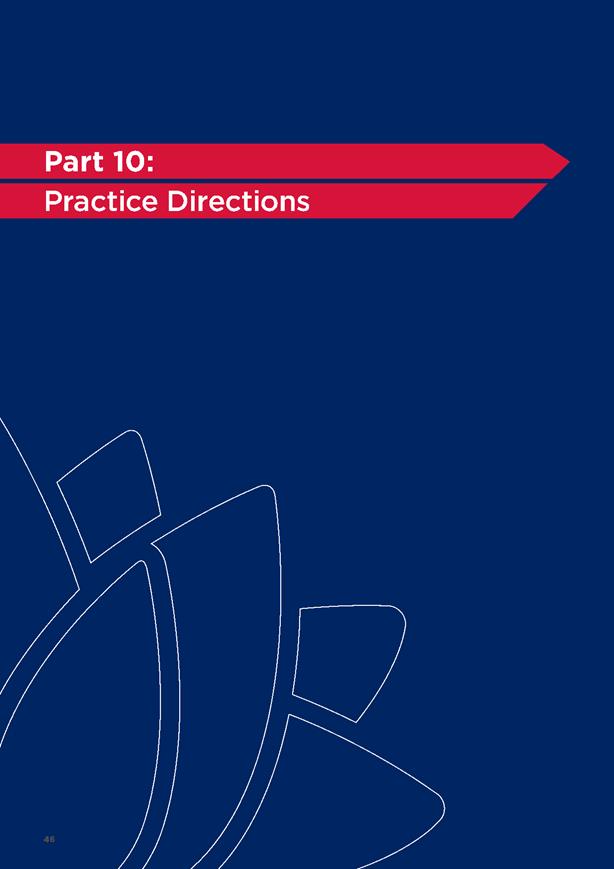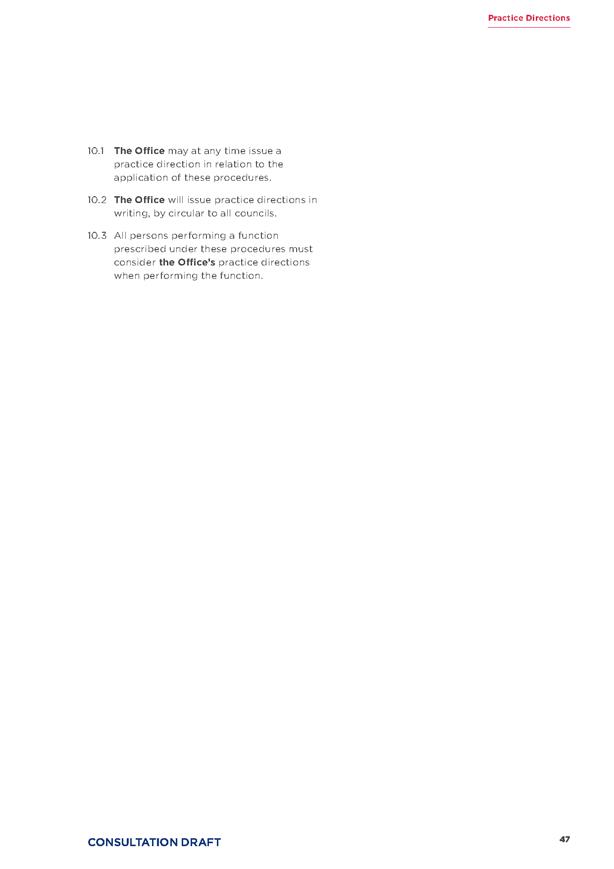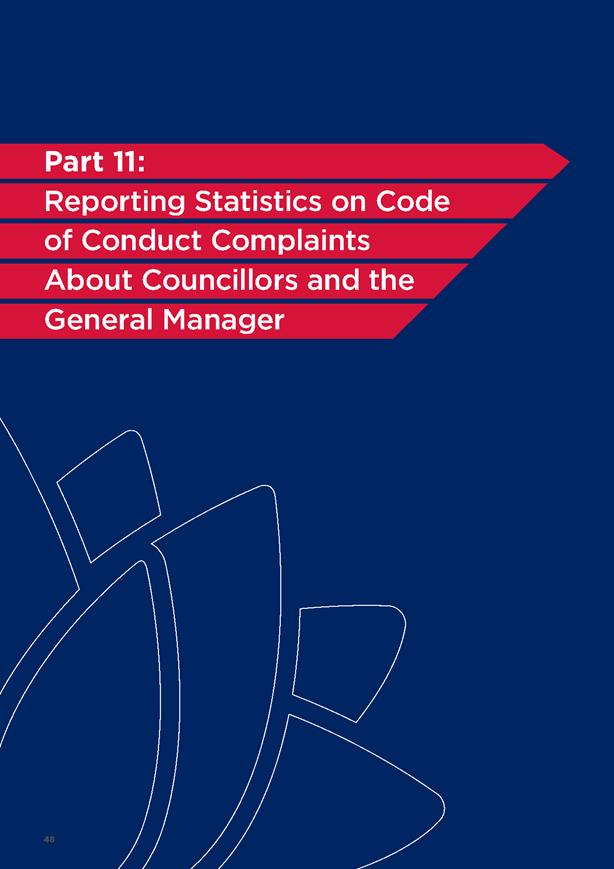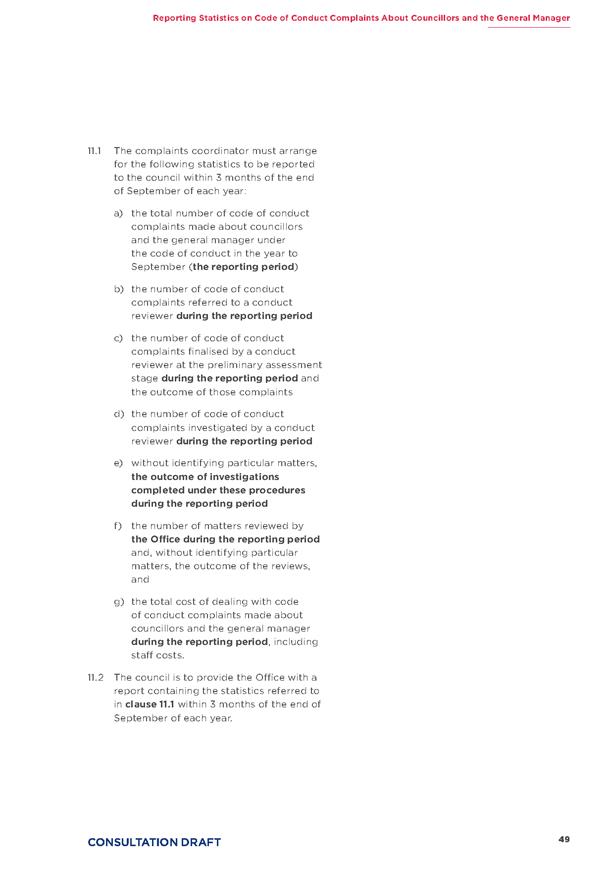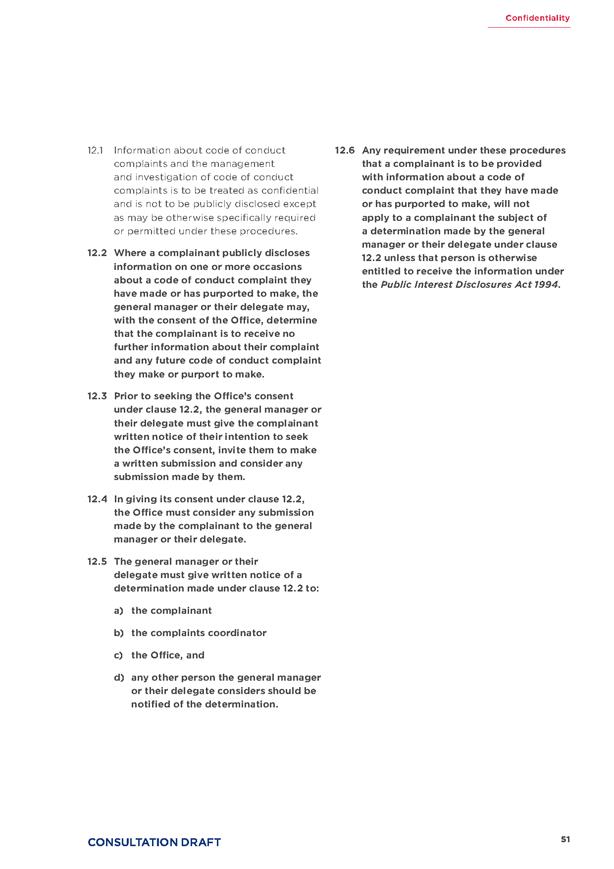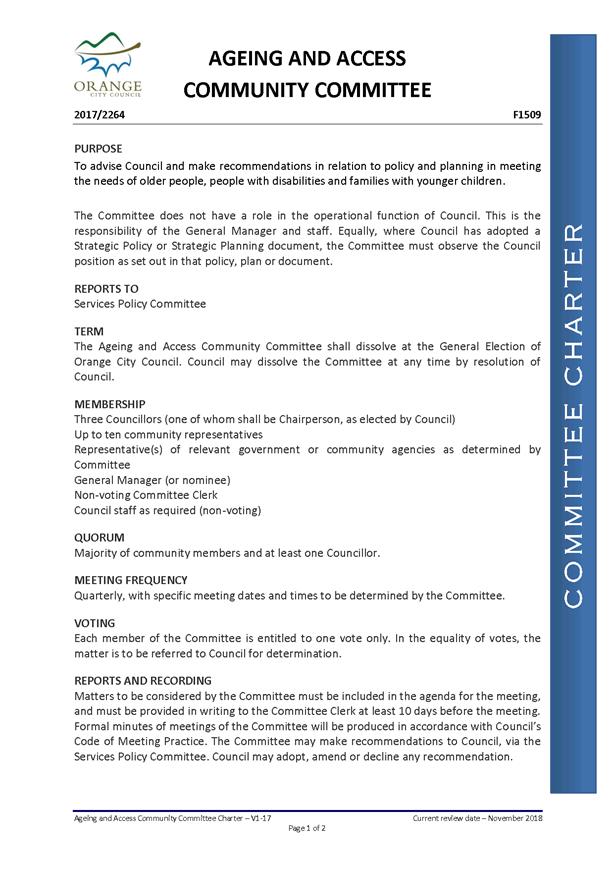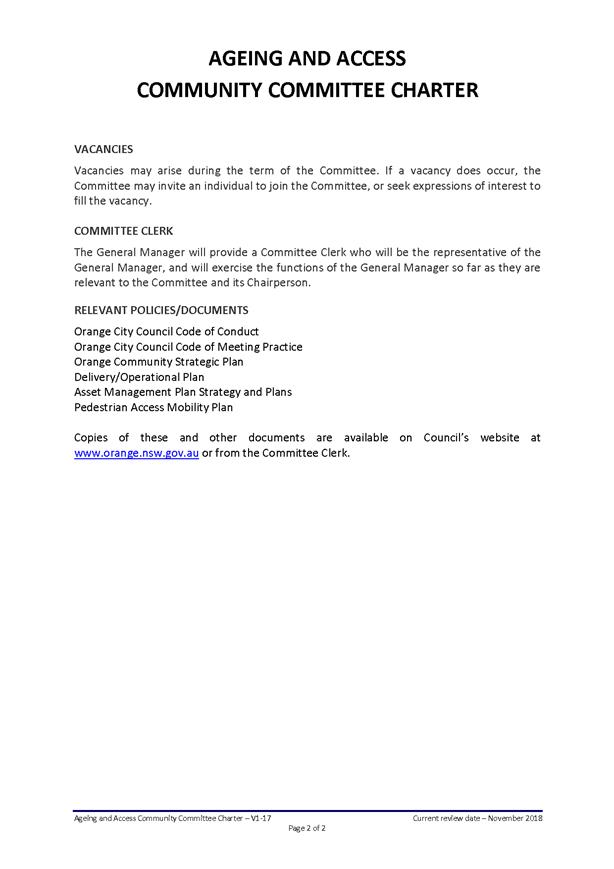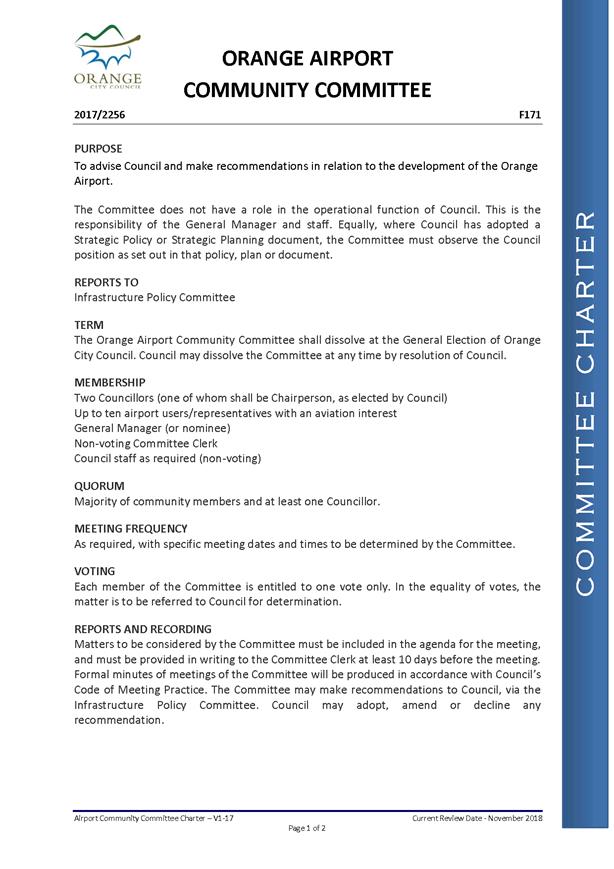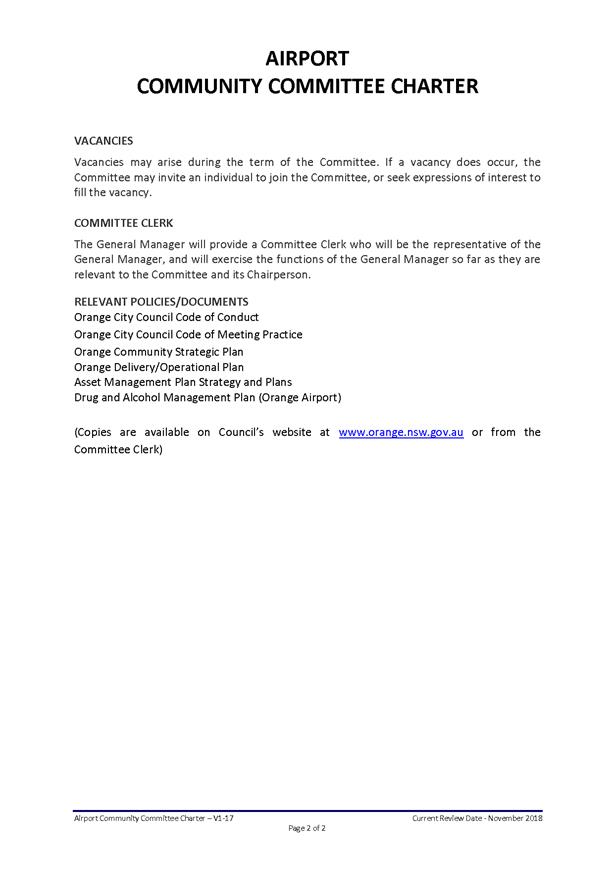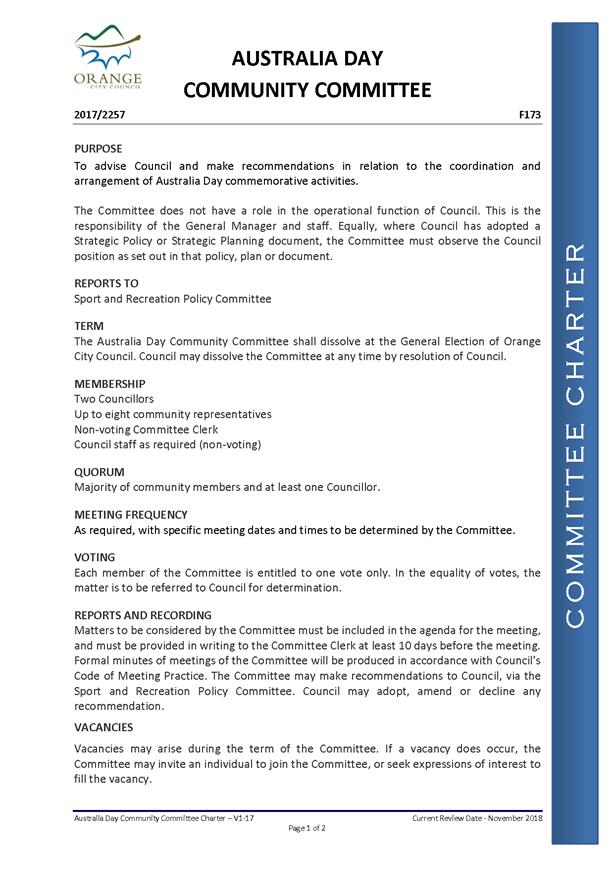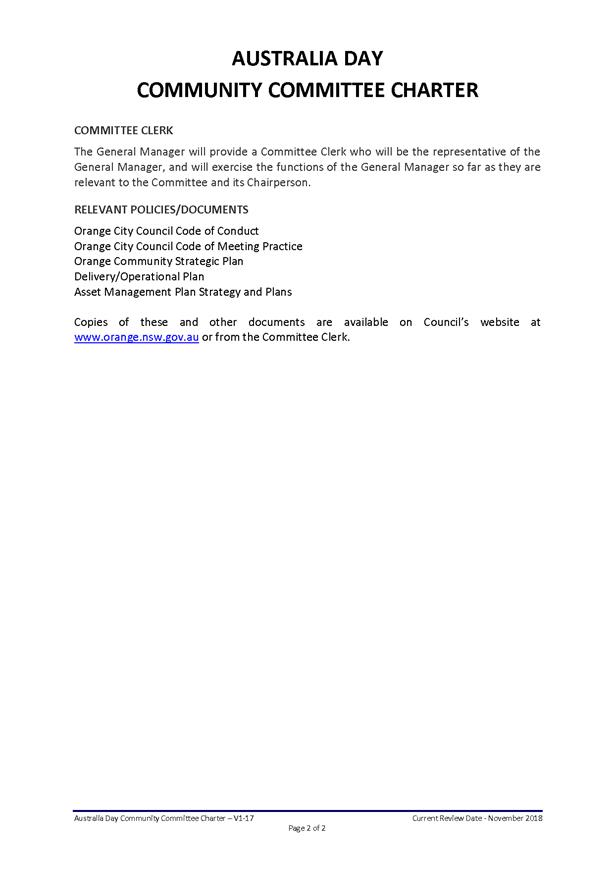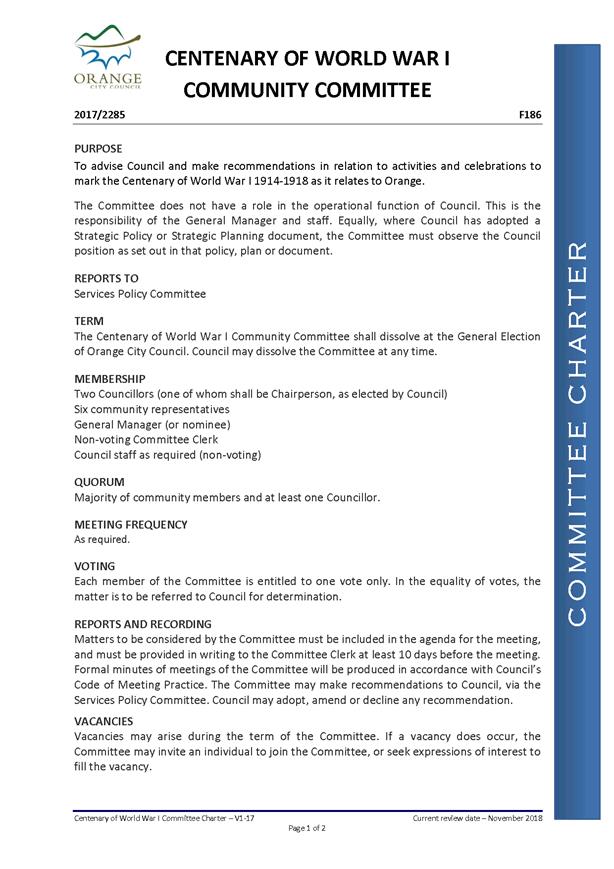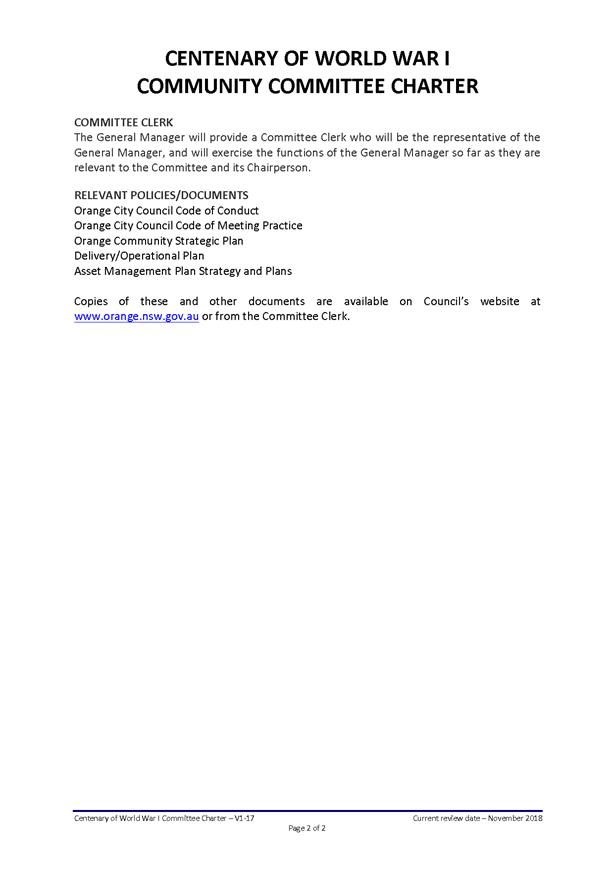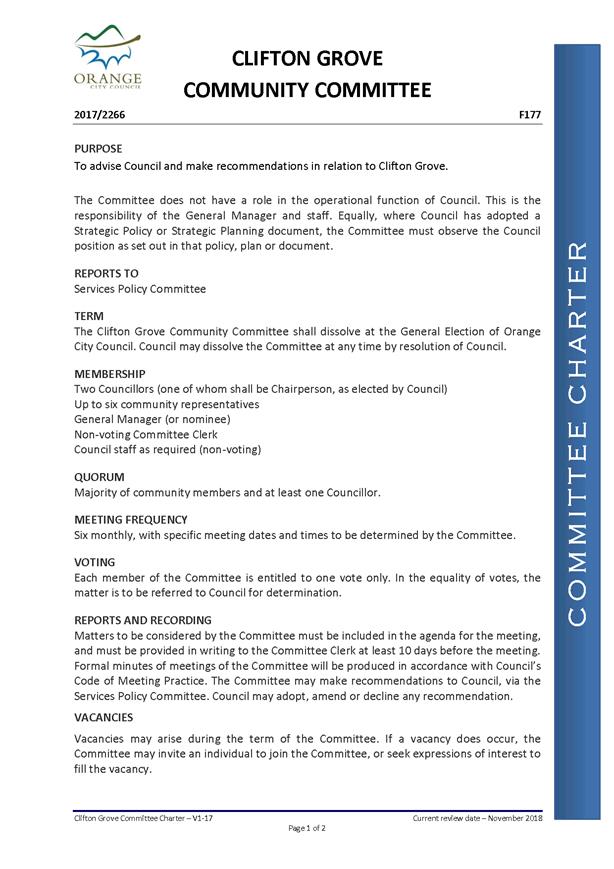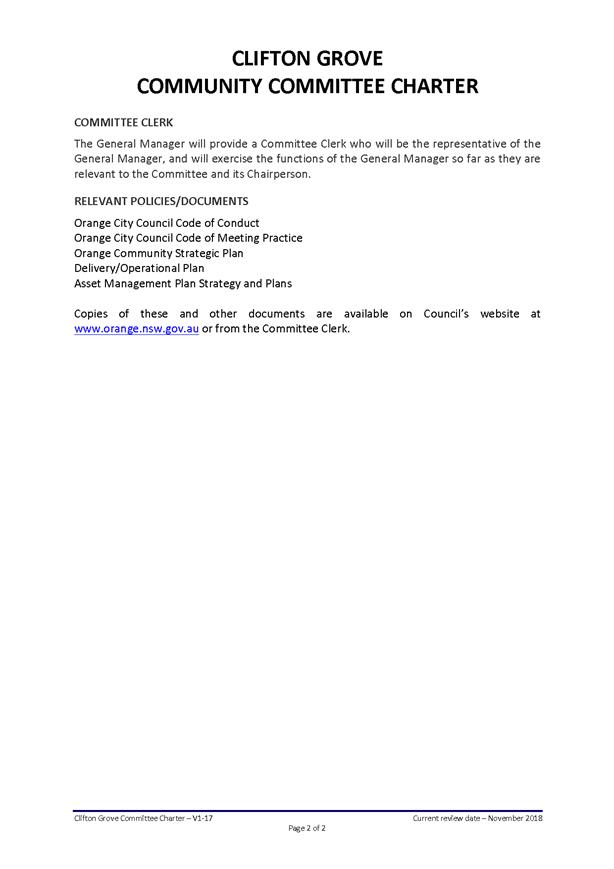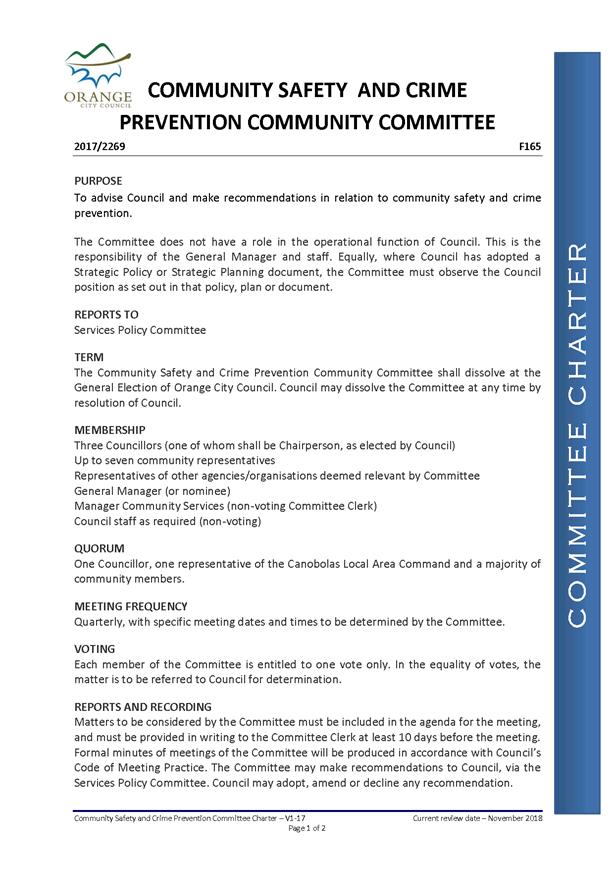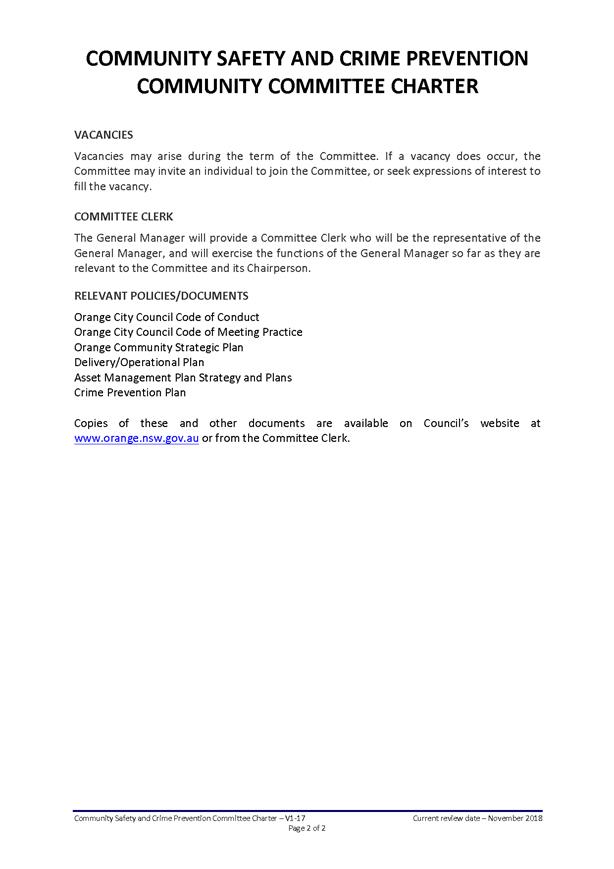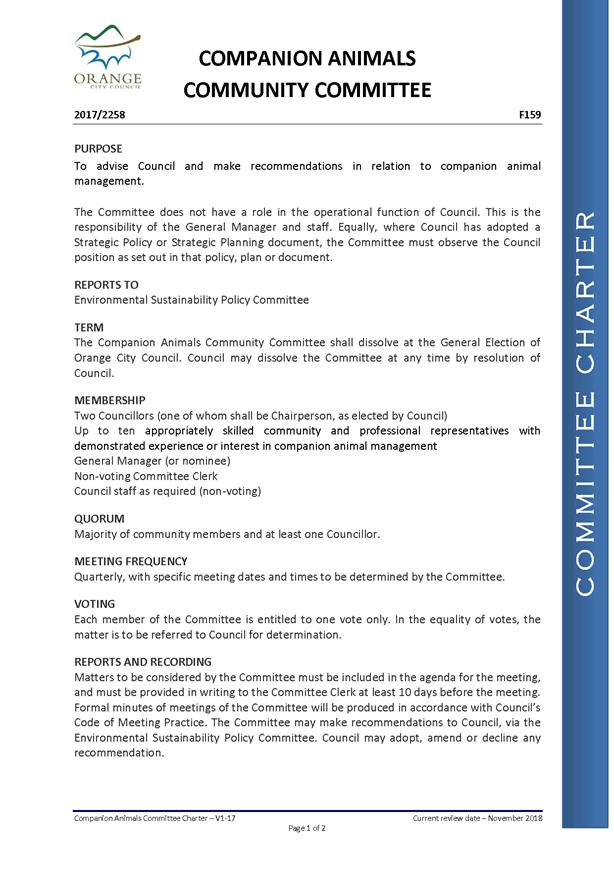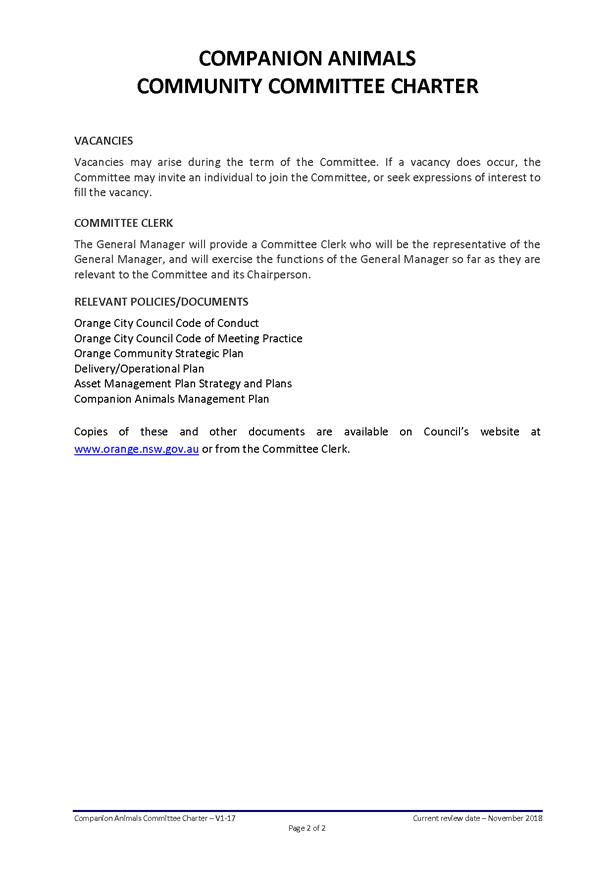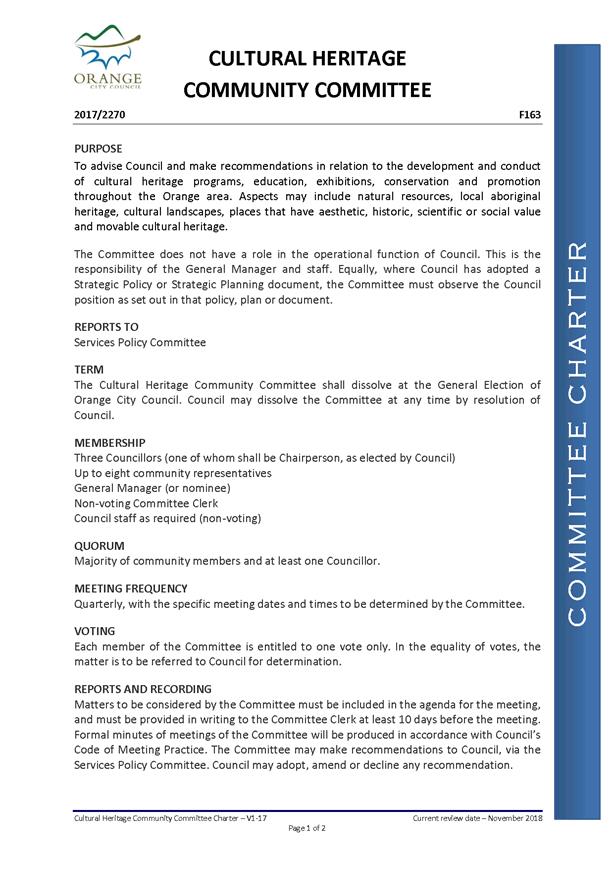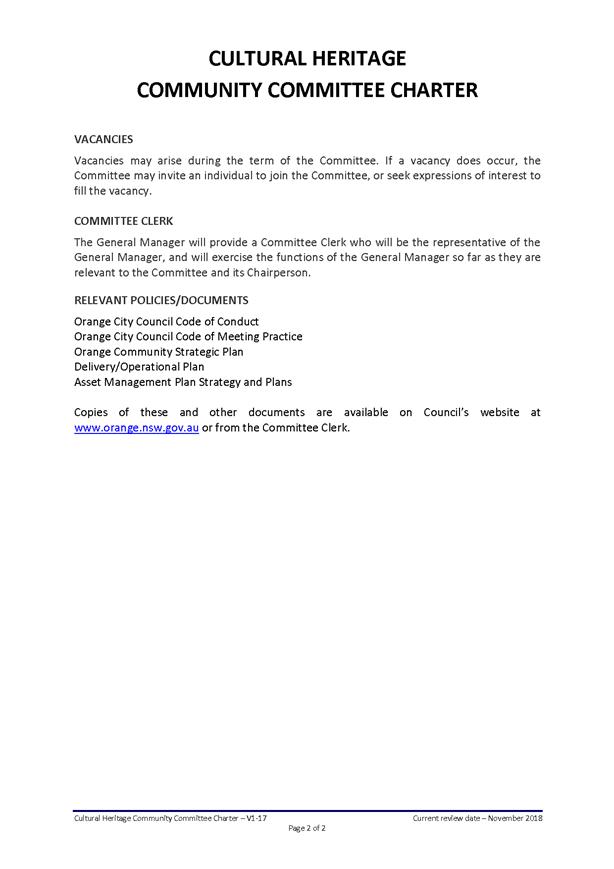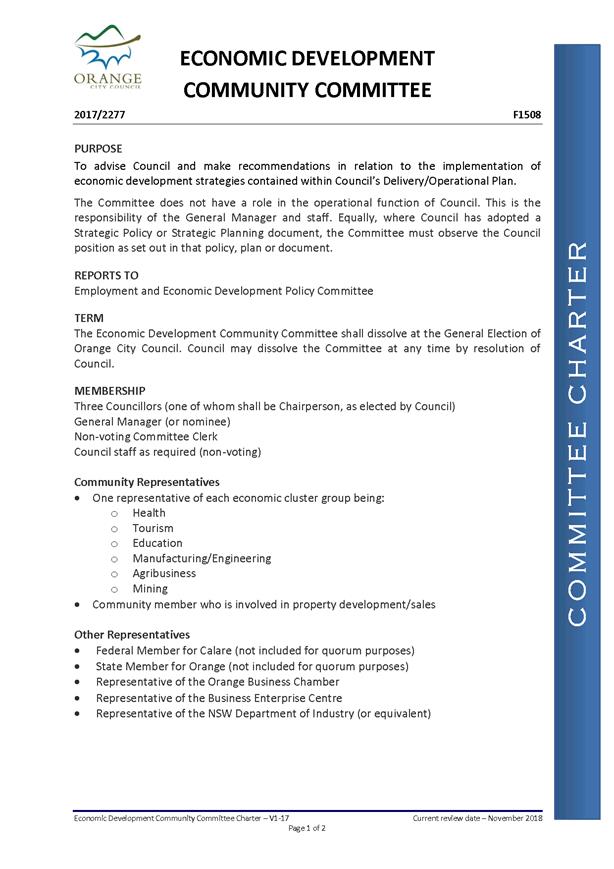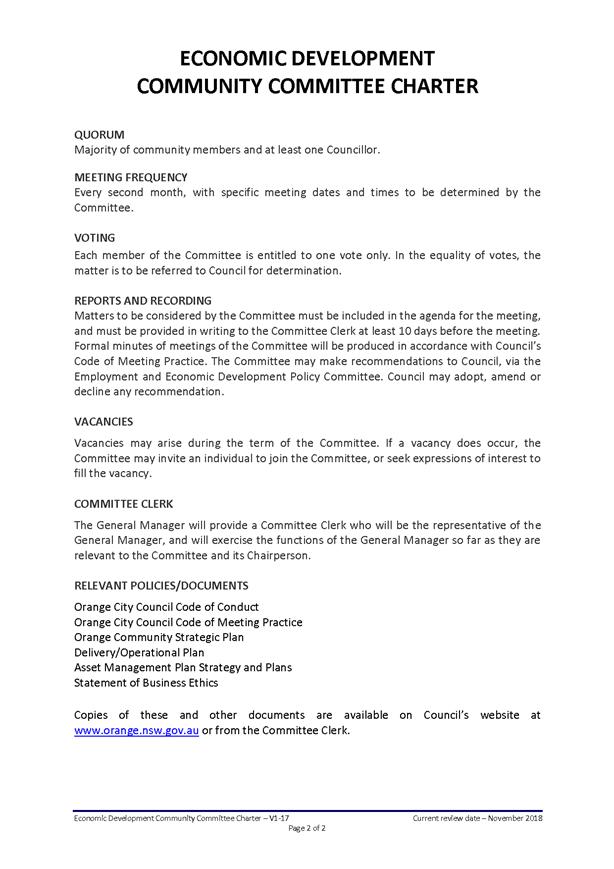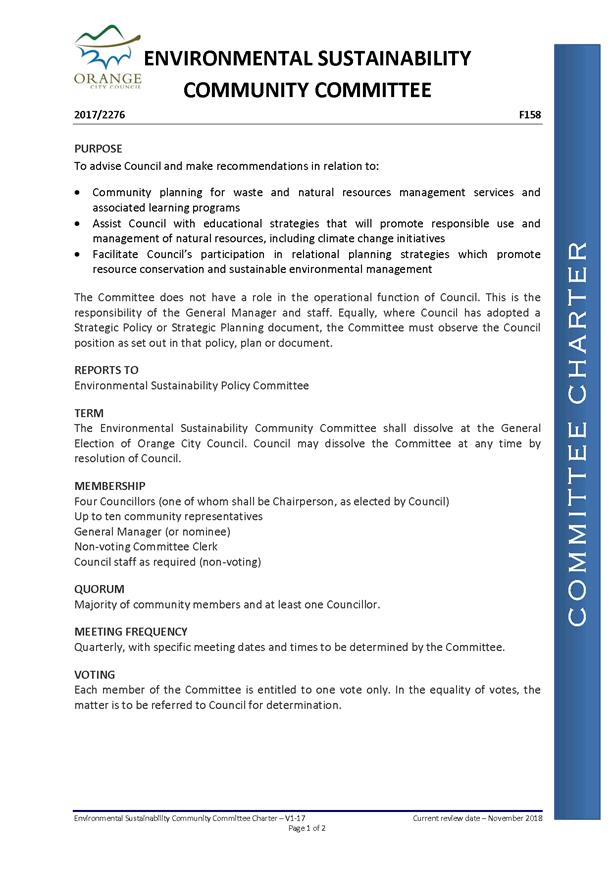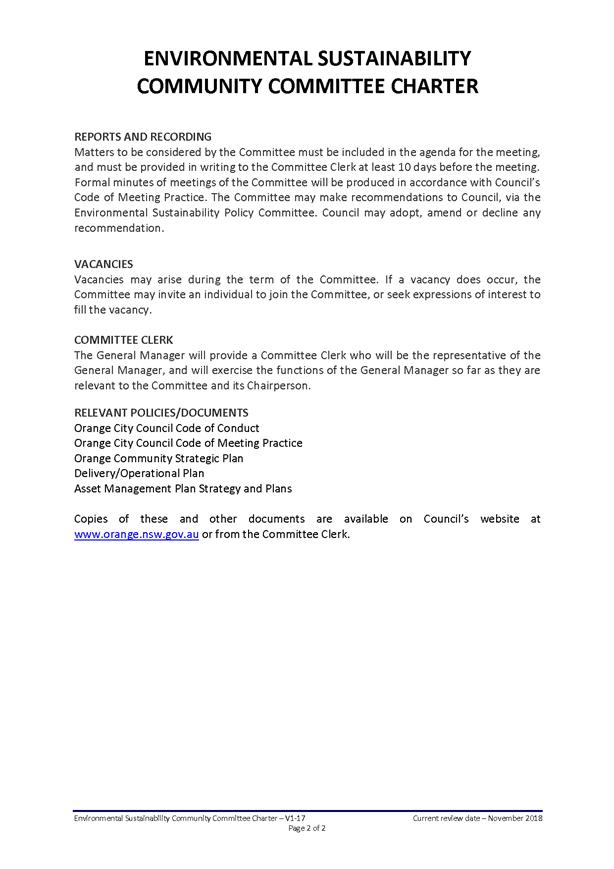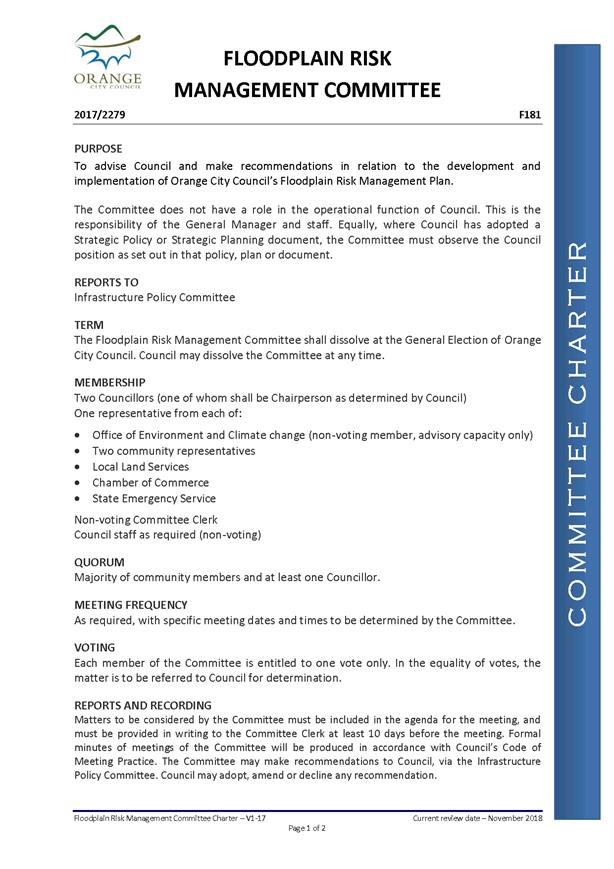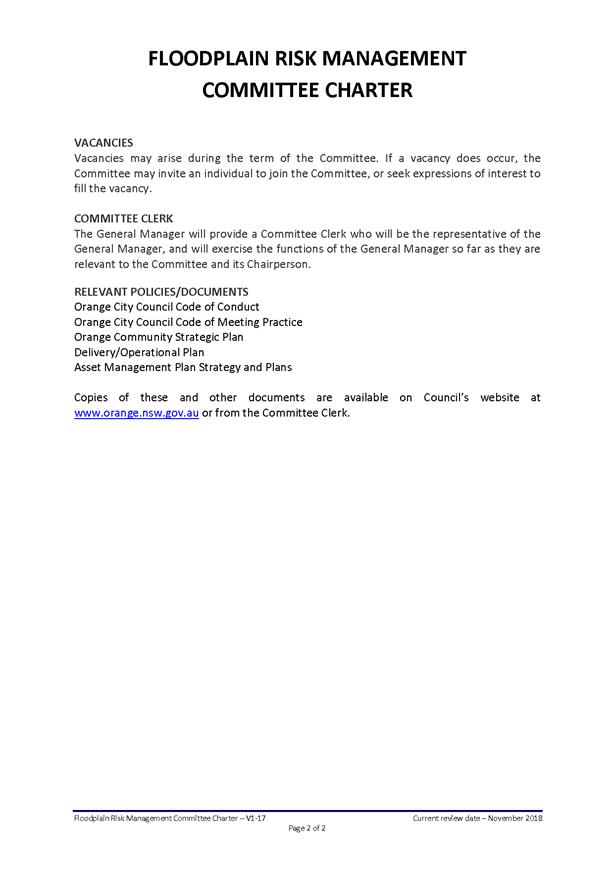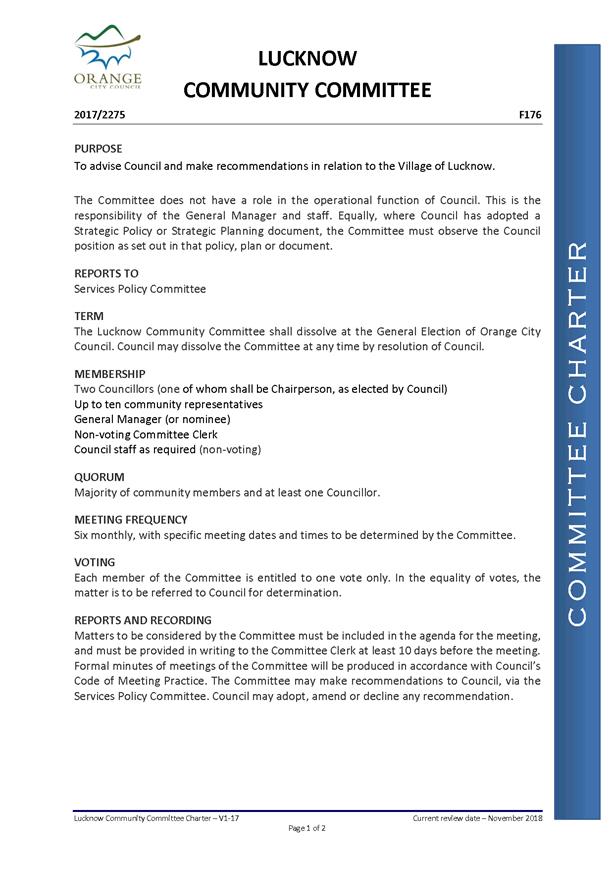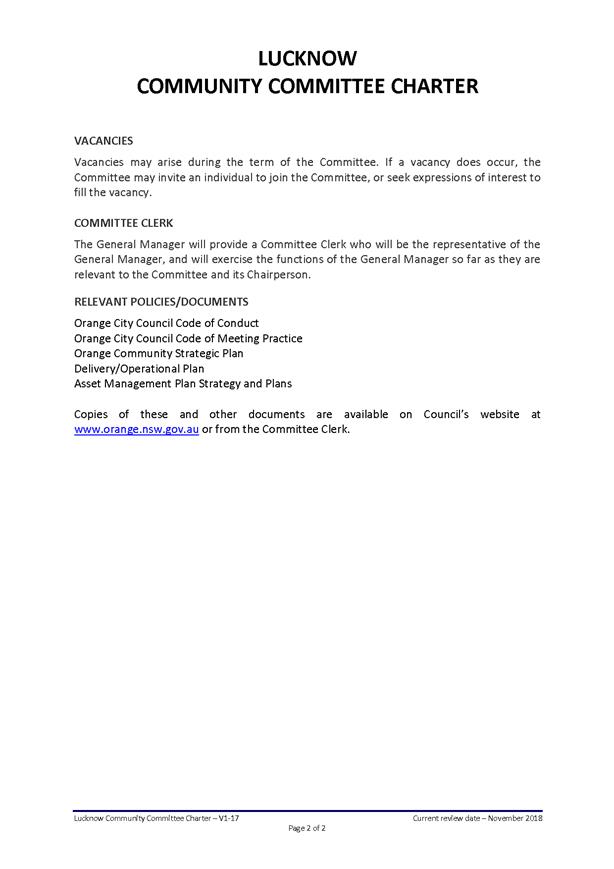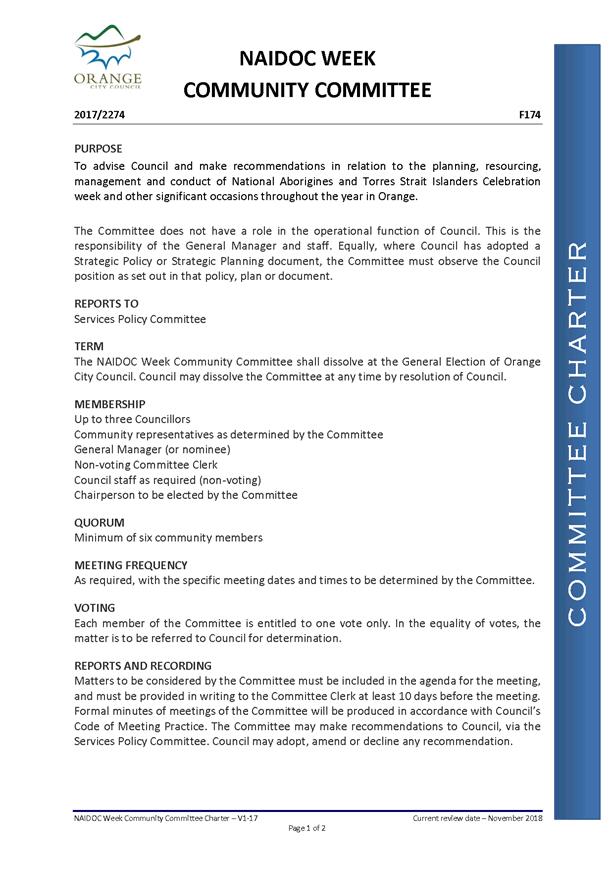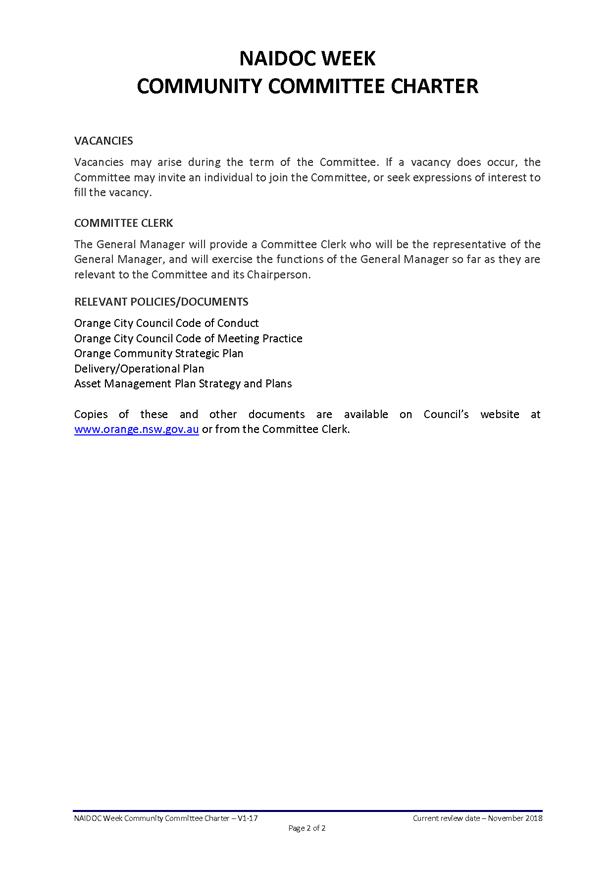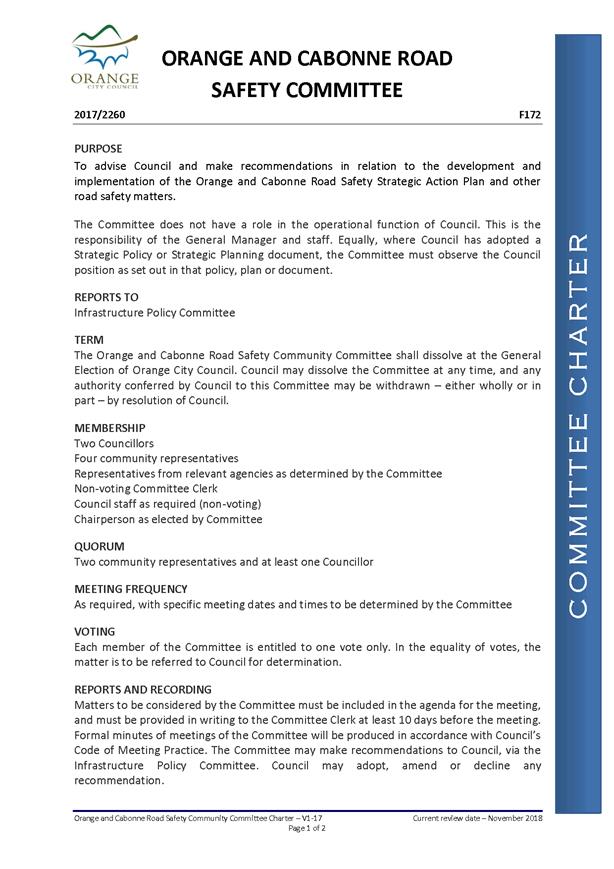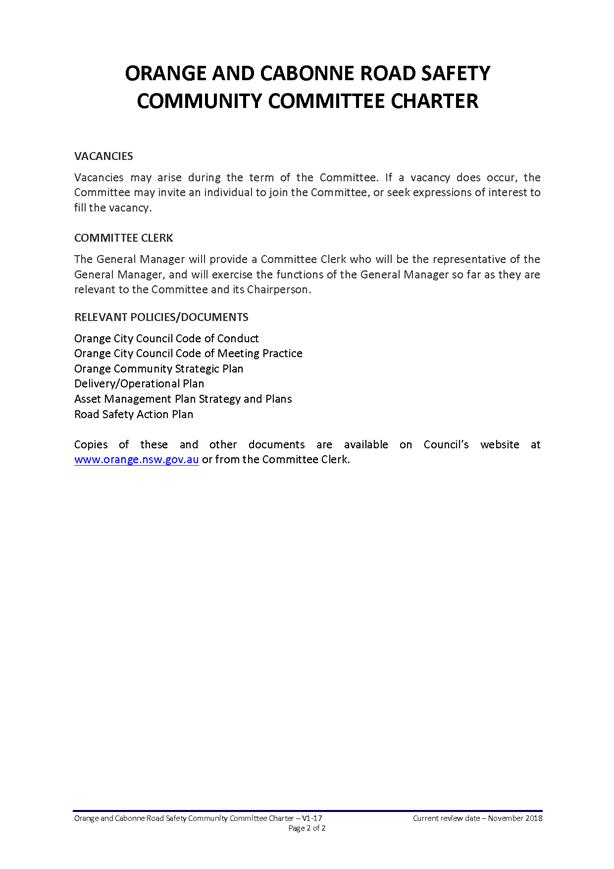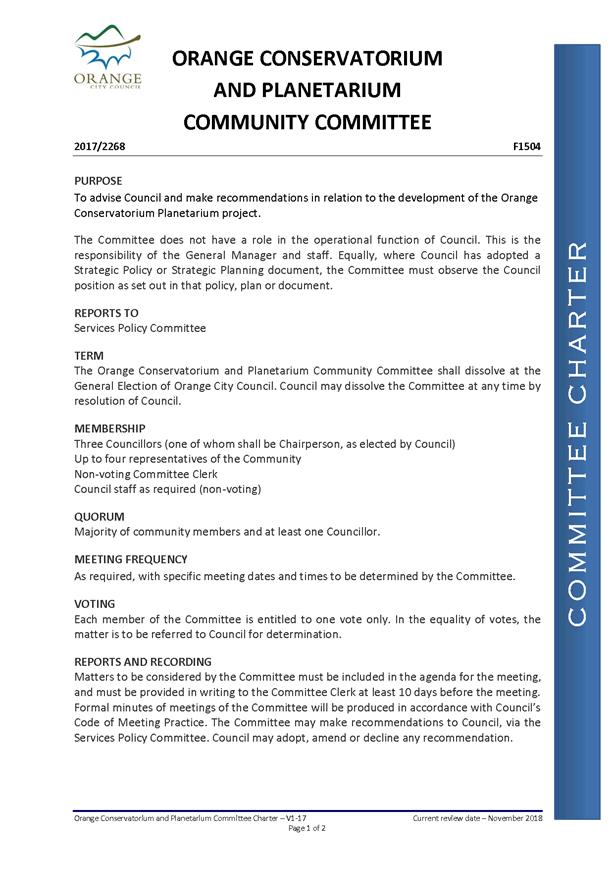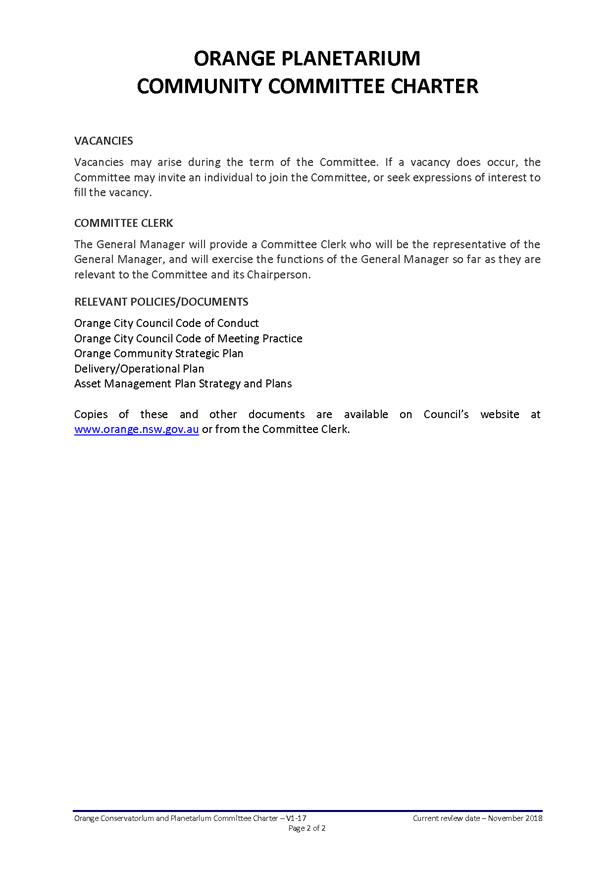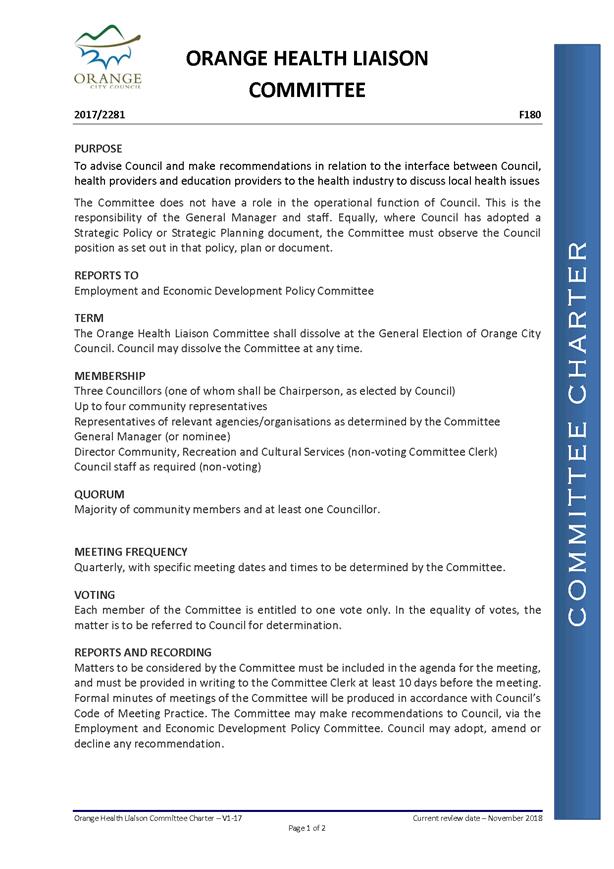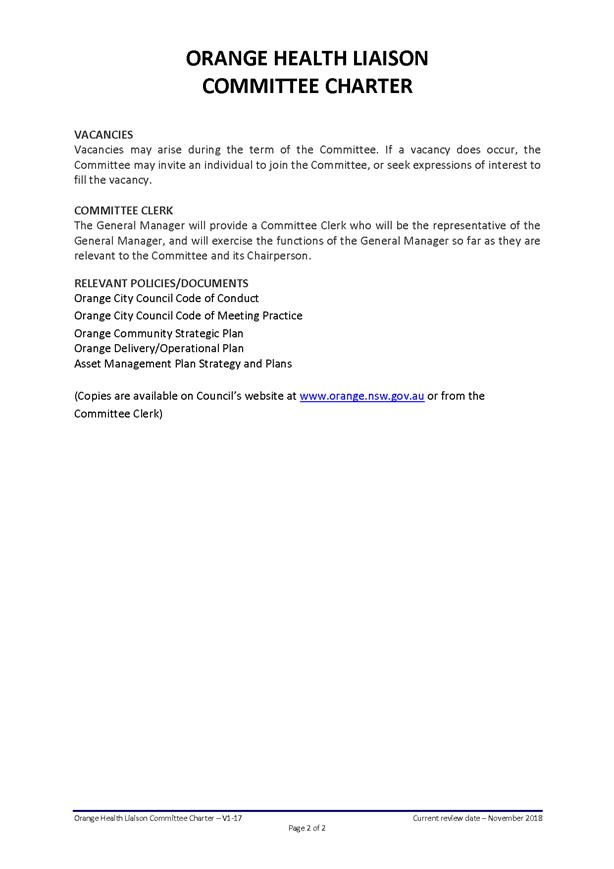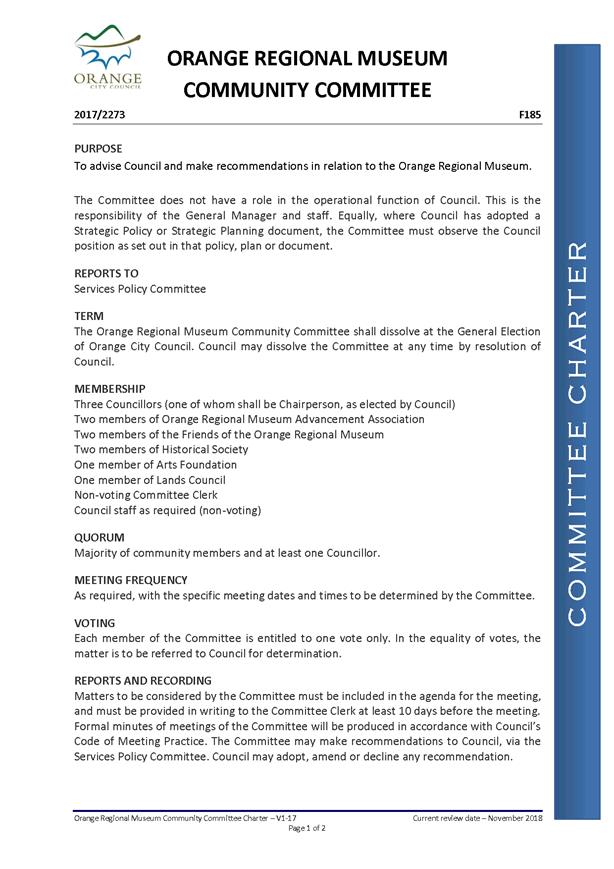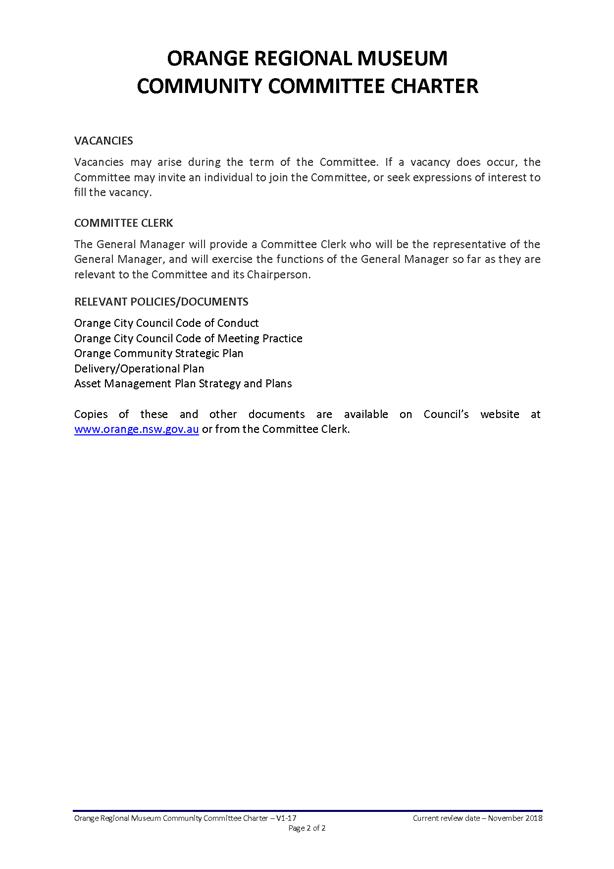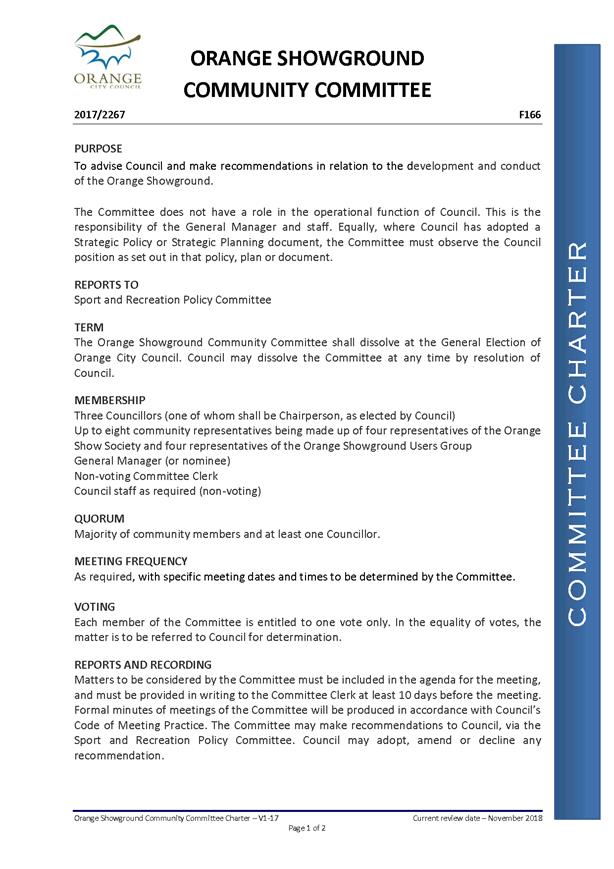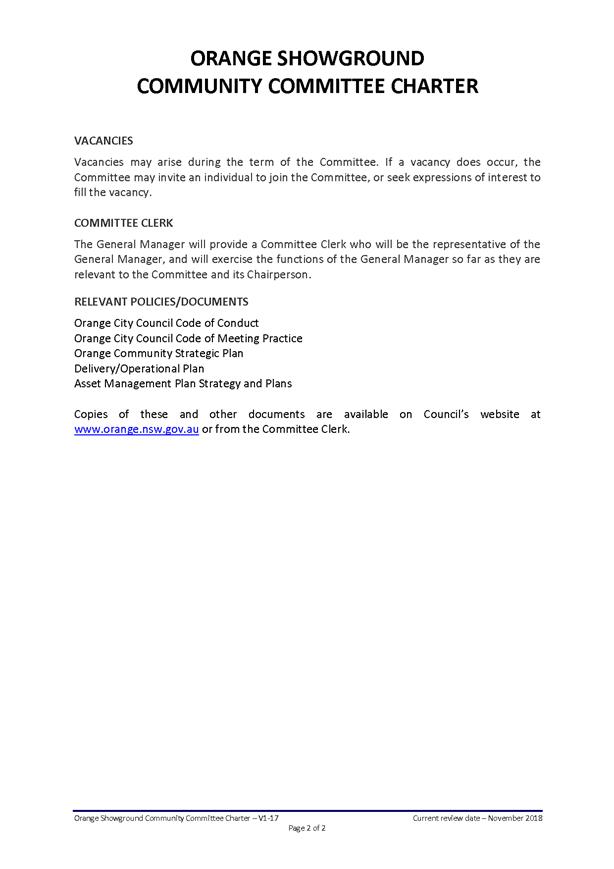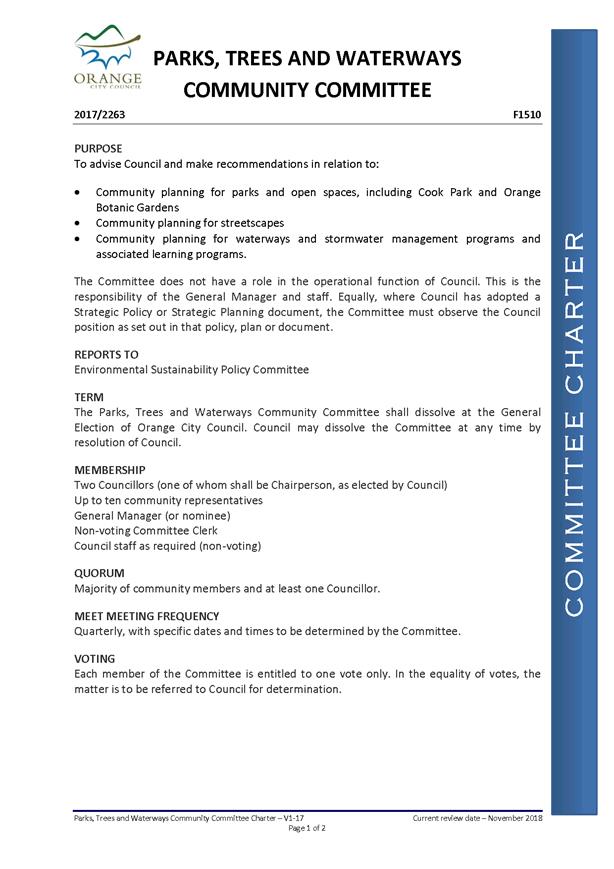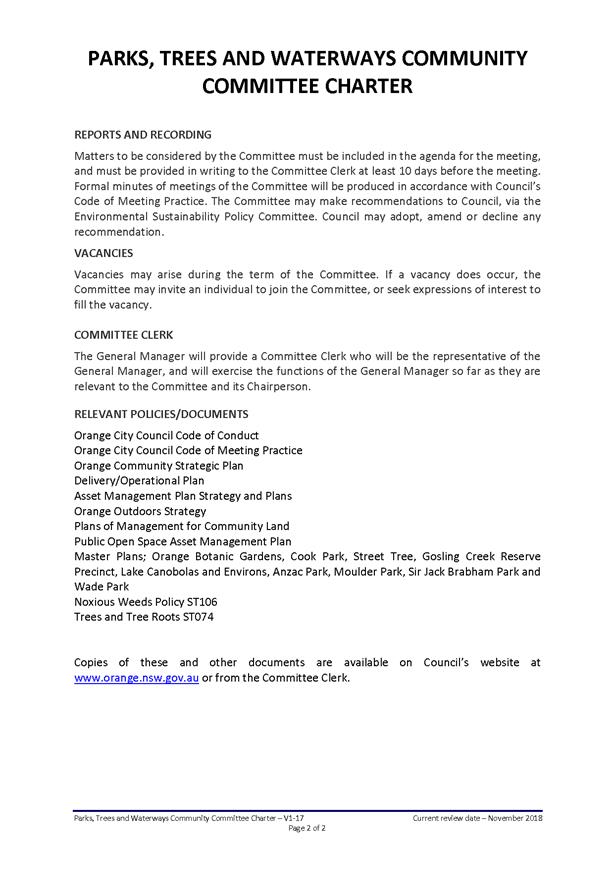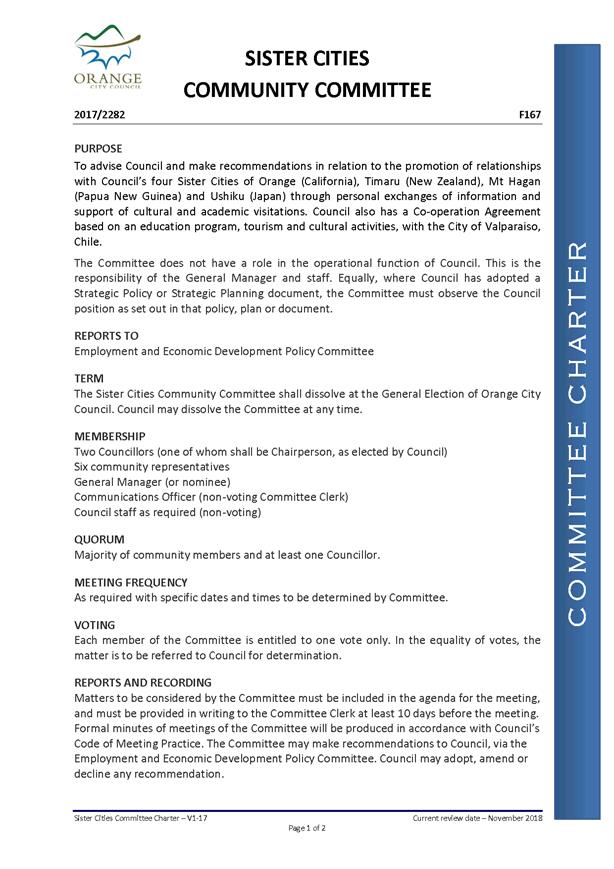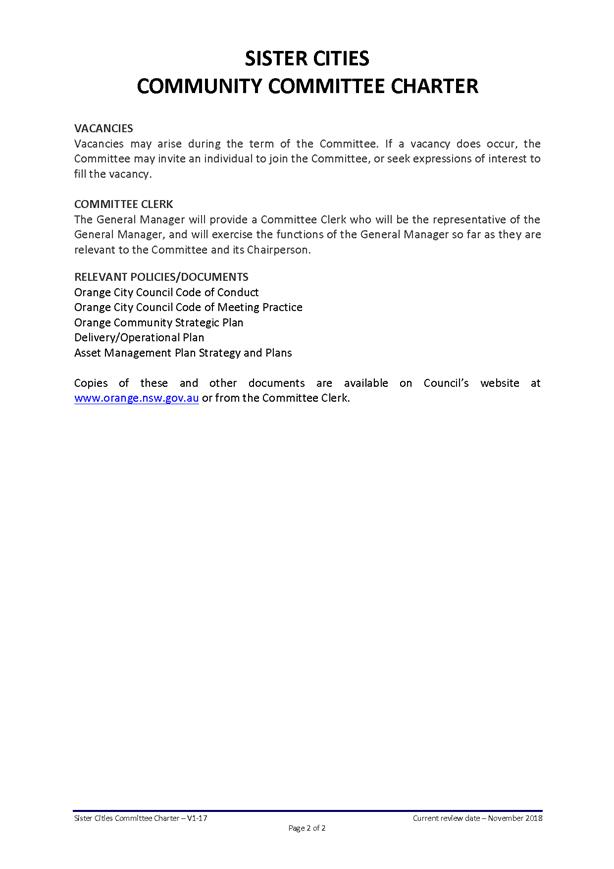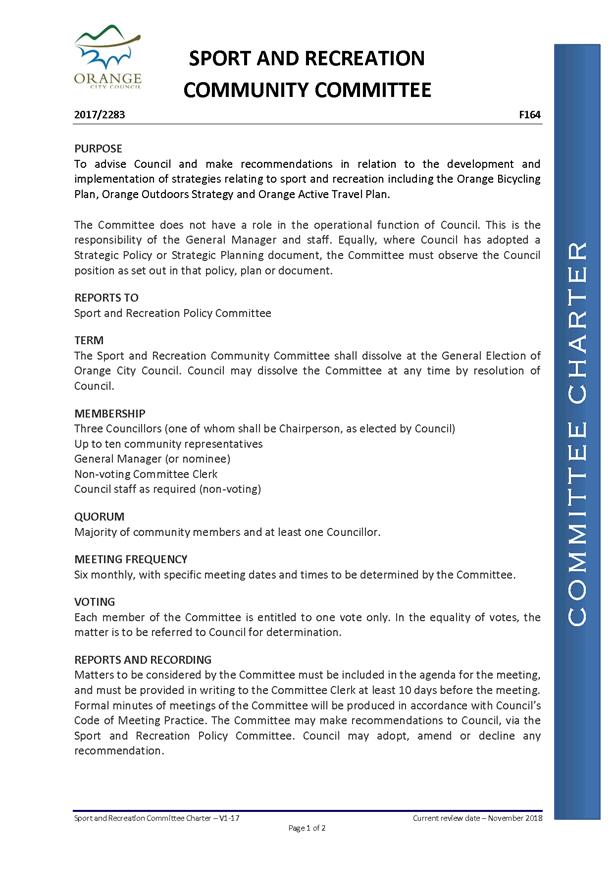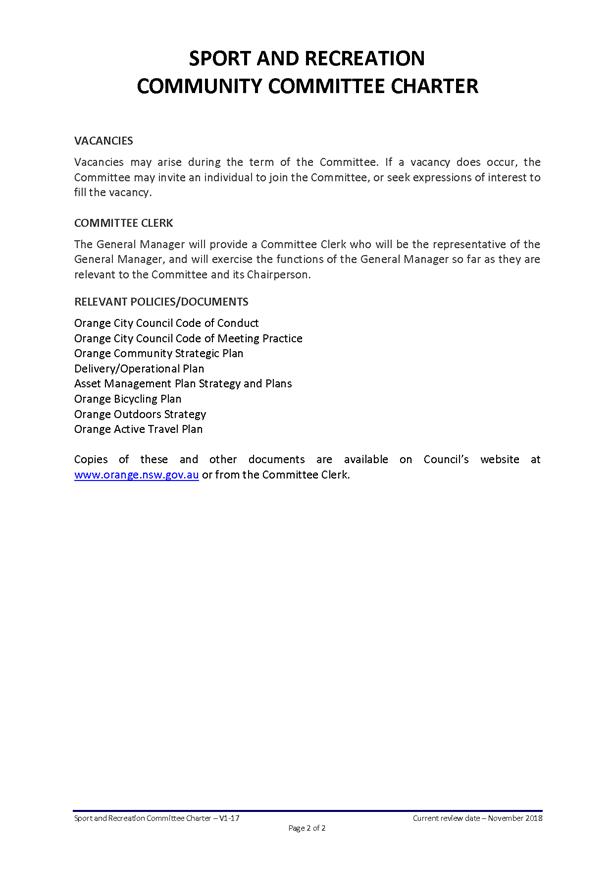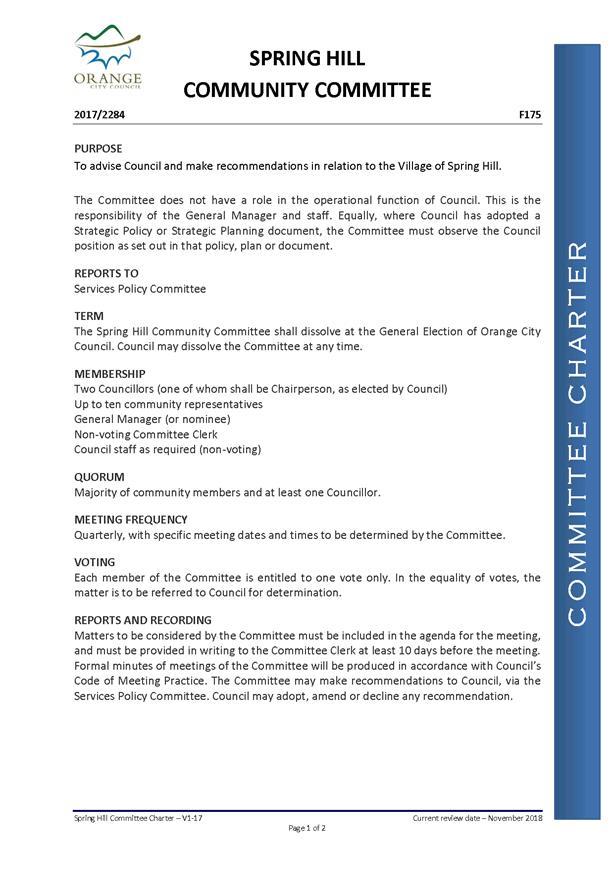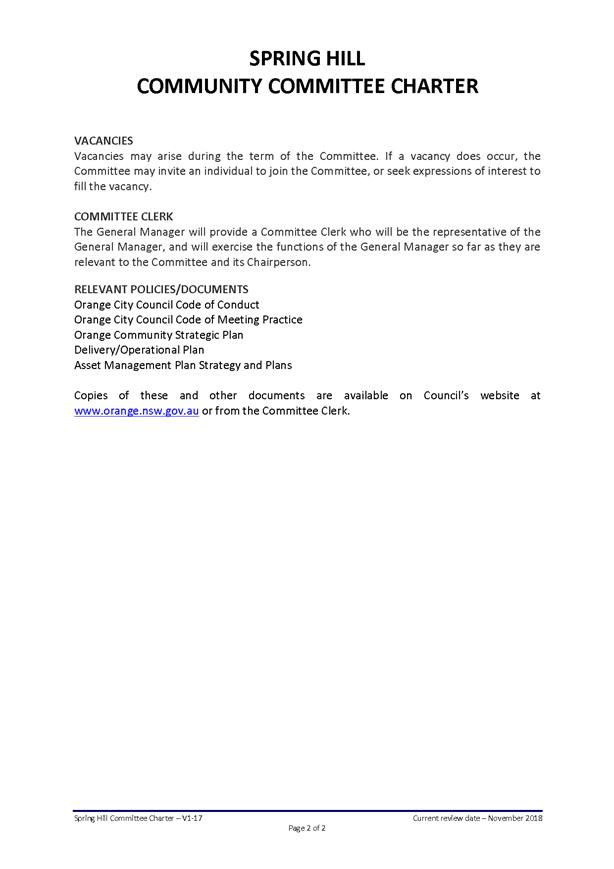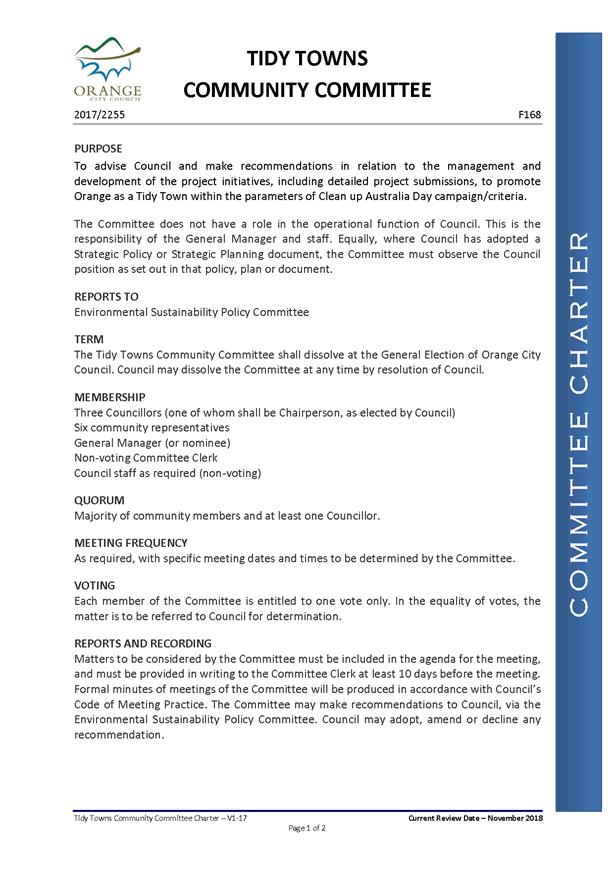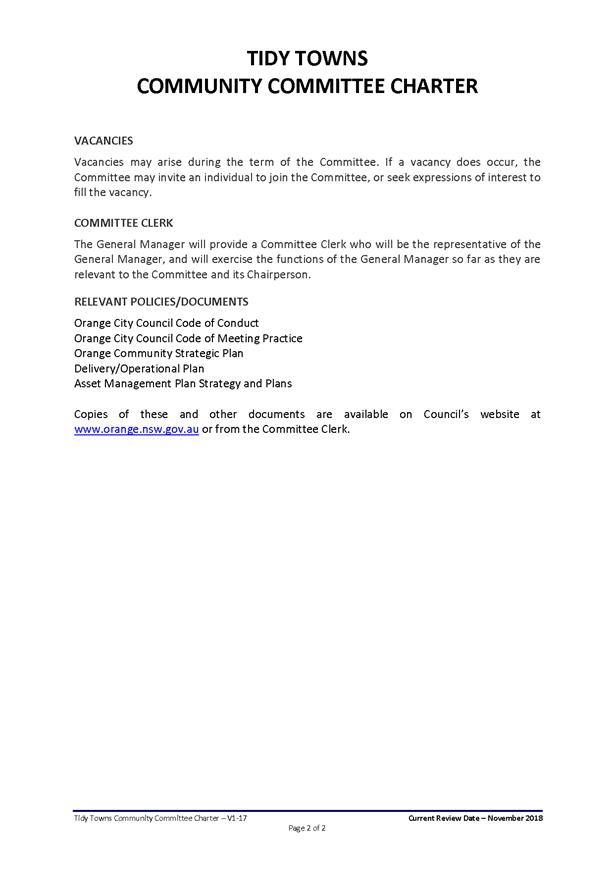Council
Meeting
21 November 2017
5.9 Strategic
Policy Review
Attachment 2 DRAFT -
Strategic Policy - ST092 - Privacy and Personal Information - Attachment
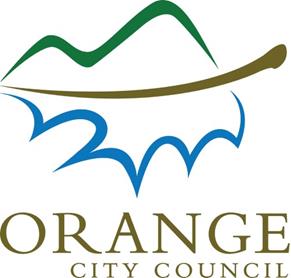
PRIVACY AND PERSONAL INFORMATION Plan
TABLE OF CONTENTS
Preface.......................................................................................................... 4
Part 1 – Introduction................................................................................................................ 5
1.1 What
is “Personal Information”?.......................................................................................... 6
1.2 What
is not “Personal Information”...................................................................................... 6
1.3 Policy
on Electoral Rolls........................................................................................................ 6
1.4 Application
of this Plan......................................................................................................... 7
1.5 Personal
Information held by Council................................................................................... 7
1.6 Applications
for Suppression in Relation to General Information (not public registers)........... 7
1.7 Caution
as to Unsolicited Information................................................................................... 8
Part 2 – Public
Registers........................................................................................................... 9
2.1 Public
Registers, the PPIPA and the HRIPA............................................................................ 9
2.2 Effect
on Section 6 of the GIPA Act..................................................................................... 10
2.3 Where
some Information in the Public Register has been Published.................................... 10
2.4 Disclosure
of Personal Information Contained in the Public Registers................................... 11
2.5 Purposes
of Public Registers............................................................................................... 11
2.6 Applications
for Access to Own Records on a Public Register................................................ 12
2.7 Applications
for Suppression in Relation to a Public Register................................................ 12
2.8 Other
Registers.................................................................................................................. 13
2.9 Investigative
Functions....................................................................................................... 13
2.10 Disclosure
of Information for Research Purposes................................................................ 13
Part 3 – The
Information Protection Principles.................................................................... 14
3.1 Principle
1 - Collection of Personal Information................................................................... 14
3.2 Principle
2 - Direct Collection............................................................................................... 15
3.3 Principle
3 - Requirements When Collecting Information..................................................... 17
3.4 Principle
4 - Other Requirements Relating to Collection of Personal Information.................. 19
3.5 Principle
5 - Retention and Security of Personal Information................................................ 20
3.6 Principle
6 - Information held by Agencies........................................................................... 21
3.7 Principle
7 - Access to Personal Information held by Agencies.............................................. 22
3.8 Principle
8 - Alteration of Personal Information................................................................... 23
3.9 Principle
9 - Agency Must Check Accuracy of Information before Use.................................. 25
3.10 Principle
10 - Limits on Use of Personal Information............................................................ 26
3.11 Principle
11 - Limits on Disclosure of Personal Information................................................... 28
3.12 Principle
12 - Special Restrictions on Disclosure of Personal Information............................... 31
Part 4 – Health Privacy
Principles.......................................................................................... 33
4.1 Principle
1 - Purposes of Collection of Health Information ................................................... 34
4.2 Principle
2 - Information must be relevant, not excessive accurate and not intrusive............ 34
4.3 Principle
3 - Collection to be from Individual Concerned ...................................................... 34
4.4 Principle
4 - Individual to be made aware of Certain Matters............................................... 34
4.5 Principle
5 - Retention and Security .................................................................................... 36
4.6 Principle
6 - Information about Health Information held by Organisations............................ 36
4.7 Principle
7 - Access to Health Information........................................................................... 37
4.8 Principle
8 - Amendment of Health Information.................................................................. 37
4.9 Principle
9 - Accuracy.......................................................................................................... 38
4.10 Principle
10........................................................................................................................ 38
4.11 Principle
11 -...................................................................................................................... 41
4.12 Principle
12 - Identifiers...................................................................................................... 44
4.13 Principle
13 - Anonymity..................................................................................................... 44
4.14 Principle
14 - Transborder Data Flows and Data Flow to Commonwealth Agencies................ 45
4.15 Principle
15 - Linkage of Health Records.............................................................................. 45
Part 5 – Implementation
of the Privacy Management Plan................................................ 47
5.1 Training
Seminars/Induction............................................................................................... 47
5.2 Responsibilities
of the Privacy Contact Officer..................................................................... 47
Part 6 – Internal
Review......................................................................................................... 48
6.1 How
does the process of Internal Review operate?............................................................ 48
6.2 What
happens after an Internal Review?............................................................................ 48
Part 7 – Other Relevant
Matters............................................................................................ 49
7.1 Contracts
with consultants and other private contractors.................................................... 49
7.2 Confidentiality................................................................................................................... 49
7.3 Misuse
of personal or health information........................................................................... 49
7.4 Regular
review of the Collection, Storage and Use of Personal or Health Information........... 49
7.5 Regular
review of Privacy Management Plan....................................................................... 49
7.6 Further
information........................................................................................................... 49
Part 8 – Appendices................................................................................................................ 50
Appendix 1:
Statutory Declaration for access under Section 57 of the Privacy and Personal
Information Protection Act 1998 to a Public Register held by Council....................................................................................... 51
Appendix 2: Privacy
Notification Form - Section 10 (Pre – Collection)............................................. 52
Appendix 3: Privacy Notification
Form - Section 10 (Post – Collection)........................................... 53
Appendix 4: Application under
Section 13 of the Privacy and Personal Information Protection Act 1998: To
determine whether Council holds personal information about a Person......................................................... 54
Appendix 5: Application under
Section 14 of the Privacy and Personal Information Protection Act 1998: For
access to Applicant’s Personal Information................................................................................................. 55
Appendix 6: Application under
Section 15 of the Privacy and Personal Information Protection Act 1998: For
alteration of Applicant’s Personal Information............................................................................................. 56
PREFACE
The Privacy and Personal Information Protection
Act 1998 (the “PPIPA”) requires all councils to prepare a
Privacy Management Plan outlining their policies and practices to ensure
compliance with the requirements of that Act and the Health Records and
Information Privacy Act 2002 (the HRIPA).
In particular, the
object of this plan is to inform:
·
The community about how their personal
information will be used, stored and accessed after it is collected by Council
·
Council staff of their obligations in relation
to handling personal information and when they can and cannot disclose, use or
collect it.
PART 1 – INTRODUCTION
The
Privacy and Personal Information Protection Act 1998 (“PPIPA”)
provides for the protection of personal information and for the protection of
the privacy of individuals. Section 33 of the PPIPA requires all councils to
prepare a Privacy Management Plan (the “Plan”) to deal with:
§ the devising of policies and practices to
ensure compliance by Council with the requirements of the PPIPA and the Health
Records and Information Privacy Act 2002 (“HRIPA”)
§ the
dissemination of those policies and practices to persons within Council
§ the
procedures that Council proposes for internal review of privacy complaints
§ such
other matters as are considered relevant by Council in relation to privacy and
the protection of personal information held by it
This Privacy and Personal Information Plan has been
prepared for the purpose of section 33 of the PPIPA.
PPIPA provides for the protection of personal
information by means of 12 Information Protection Principles. Those principles
are listed below:
Principle 1 - Collection of personal information for
lawful purposes
Principle 2 - Collection of personal information
directly from individual
Principle 3 - Requirements when collecting personal
information
Principle 4 - Other requirements relating to
collection of personal information
Principle 5 - Retention and security of personal
information
Principle 6 - Information about personal information
held by agencies
Principle 7 - Access to personal information held by
agencies
Principle 8 - Alteration of personal information
Principle 9 - Agency must check accuracy of personal
information before use
Principle 10 - Limits on use of personal information
Principle 11 - Limits on disclosure of personal
information
Principle 12 - Special restrictions on disclosure of
personal information
Those principles are modified by the Privacy
Code of Practice for Local Government (“the Code”) made by the
Attorney General.
The Privacy Code has been developed to enable Local
Government to fulfil its statutory duties and functions under the Local
Government Act 1993 (the “LGA”) in a manner that seeks to
comply with the PPIPA.
This Plan outlines how Council will incorporate the 12
Information Protection Principles into its everyday functions.
This Plan should be read in conjunction with the Code
of Practice for Local Government.
Nothing in this Plan is to:
§ affect any matter of interpretation of the
Codes or the Information Protection Principles and the Health Privacy
Principles as they apply to Council;
§ affect
any obligation at law cast upon Council by way of representation or holding out
in any manner whatsoever;
§ create,
extend or lessen any obligation at law which Council may have.
This Plan is designed to introduce policies and
procedures to maximise compliance with the PPIPA and the HRIPA.
Where Council has the benefit of an exemption, it will
nevertheless describe procedures for compliance in this Plan. By doing so, it
is not to be bound in a manner other than that prescribed by the Codes.
Council collects, stores and uses a broad range of
information. A significant part of that information is personal information.
This Plan applies to that part of Council’s information that is personal
information.
It may mean in practice that any information that is
not personal information will receive treatment of a higher standard; namely
treatment accorded to personal information where the information cannot be
meaningfully or practicably separated.
1.1 What is “Personal Information”?
“Personal
information” is defined in section 4 of the PPIPA as follows:
“Information or an opinion about an individual
whose identity is apparent or can reasonably be ascertained from the
information or opinion. This information can be on a database and does not
necessarily have to be recorded in a material form.”
1.2 What is not “Personal Information”?
“Personal
information” does not include “information about an individual that
is contained in a publicly available publication”. Personal information,
once it is contained in a publicly available publication, ceases to be covered
by the PPIPA.
Section 4A of the PPIPA also specifically excludes
“health information”, as defined by section 6 of the HRIPA, from
the definition of “personal information”, but includes
“health information” in the PPIPA’s consideration of public
registers (discussed below). “Health information” is considered in
Part 4 of this Plan.
Where Council is requested to provide access or make a
disclosure and that information has already been published, then Council will
rely on the provisions of the relevant Act that authorises Council to hold that
information and not the PPIPA (for example, section 8 of the Government
Information (Public Access) Act 2009 (GIPA Act).
Council considers the following to be publicly
available publications:
§ An
advertisement containing personal information in a local, city or national
newspaper
§ Personal
information on the Internet
§ Books
or magazines that are printed and distributed broadly to the general public
§ Council
Business Papers or that part that is available to the general public
§ Personal
information that may be a part of a public display on view to the general
public
Information published in this way ceases to be covered
by the PPIPA.
Council’s decision to publish in this way must
be in accordance with PPIPA.
1.3 Policy on Electoral Rolls
The
Electoral Roll is a publicly available publication. Council will provide open
access to the Electoral Roll in Council’s Library. Council will refer any
requests for copies of the Electoral Roll to the NSW Electoral Commission.
1.4 Application of this Plan
The
PPIPA, the HRIPA and this Plan apply, wherever practicable, to:
§ Councillors
§ Council
employees
§ Consultants
and contractors of Council
§ Council
committees
Council will ensure that all such parties are made
aware that they must comply with the PPIPA, the HRIPA, any other applicable
Privacy Code of Practice and this Plan.
1.5 Personal Information held by Council
Council
holds personal information concerning Councillors, such as:
§ personal
contact information
§ complaints
and disciplinary matters
§ pecuniary
interest returns
§ entitlements
to fees, expenses and facilities.
Council holds personal information concerning its
customers, ratepayers and residents, such as:
§ rates records
§ Development applications and
objections
§ Various types of health
information
§ Enrolment information
for a range of Council services
§ Application details (for
example donations and sponsorship requests)
Council holds personal information concerning its
employees, such as:
§ recruitment
material
§ leave
and payroll data
§ personal
contact information
§ performance
reviews
§ disciplinary
matters
§ pecuniary
interest returns
§ wage
and salary entitlements
§ health
information (such medical certificates and workers compensation claims).
1.6 Applications for Suppression in Relation to
General Information (not public registers)
Under
section 739 of the Local Government Act 1993 a person can make an application
to suppress certain material that is available for public inspection in
circumstances where the material discloses or would disclose the person’s
place of living if the person considers that the disclosure would place the
personal safety of the person or their family at risk.
Section 739 of the LGA relates to publicly available
material other than public registers. As such, it limits disclosure in those
circumstances where an application for suppression is successful. An
application for suppression must be verified by statutory declaration and
otherwise meet the requirements of section 739. When in doubt, Council will err
in favour of suppression.
For more information regarding disclosure of
information (other than public registers) see the discussion of IPPs 11 and 12
in Part 3 of this Plan. For information regarding suppression of information on
public registers, see Part 2 of this Plan.
1.7 Caution as to Unsolicited Information
Where
an individual, a group or committee, not established by Council, gives Council
unsolicited personal or health information, then that information should be
still treated in accordance with this Plan, the Codes, the HRIPA and the PPIPA
for the purposes of IPPs 5-12 and HPPs 5-15 which relate to storage, access,
use and disclosure of information.
Note that for the purposes of section 10 of the HRIPA,
Council is not considered to have “collected” health information if
the receipt of the information by Council is unsolicited.
Section 4(5) of the PPIPA also provides that personal
information is not “collected” by Council if it is unsolicited.
PART 2 –
PUBLIC REGISTERS
A
public register is defined in section 3 of the PPIPA:
“…public register means a register of
personal information that is required by law to be, or is made, publicly
available or open to public inspection (whether or not on payment of a
fee).”
A distinction needs to be drawn between “public
registers” within the meaning of Part 6 of the PPIPA and “non
public registers”. A “non public register” is a register but
it is not a “public register” for the purposes of the PPIPA. For
example, the register might not be publicly available or it may not contain
personal information.
Disclosure in relation to public registers must comply
with Part 6 of the PPIPA and the Privacy Code. Personal information cannot be
accessed by a person about another person unless the personal information is
contained in a public register. Where personal information is contained in a
public register, then Part 6 of the PPIPA applies to determine whether access
to that information will be given to another person.
Disclosure in relation to all other personal
information must comply with the Information Protection Principles as outlined
in Part 2 of this Plan and the Privacy Code where it includes personal
information that is not published.
Please note the following list is not exhaustive.
Council may, by virtue of its own practice, hold other public registers, to
which the PIPPA applies.
Council holds the following public registers under
the LGA:
§ Section
53 - Land Register
§ Section
113 - Records of Approvals
§ Section
449 -450A - Register of Pecuniary Interests
§ Section
602 - Rates Record
Council holds the following public registers under
the Environmental Planning and Assessment Act:
§ Section
100 – Register of consents and approvals
§ Section
149G – Record of building certificates
Council holds the following public register under
the Protection of the Environment (Operations) Act:
§ Section
308 – Public register of licences held
Council holds the following public register under
the Impounding Act 1993:
§ Section
30 and 31 – Record of impounding
Members of the public may enquire only in accordance
with the primary purpose of any of these registers. The primary purpose for
each of these public registers is set out in the sections that follow.
2.1 Public
Registers, the PPIPA and the HRIPA
A
public register generally confers specific rights or privileges, a benefit, or
status, which would not otherwise exist. It may be required by law to be made
publicly available or open to public inspection, or it is simply made publicly
available or open to public inspection (whether or not payment is required).
Despite the exclusion of “health
information” from the definition of “personal information”
under section 4A of the PPIPA, section 56A of the PPIPA includes as
“personal information”, “health information” on public
registers.
Section 57 of the PPIPA requires very stringent
controls over the disclosure of personal information contained in a public
register. It provides broadly that where Council is responsible for keeping a
public register, it will not disclose any personal information kept in that
register unless it is satisfied that the information is to be used for a
purpose relating to the purpose of the register or the Act under which the
register is kept.
Section 57(2) provides that in order to ensure
compliance with section 57(1), Council may require any person who applies to
inspect personal information contained in the public register to give
particulars in the form of a statutory declaration as to the proposed use of
that information, (form at Appendix 1 may be used a guide)
Council also needs to consider the Privacy Code of
Practice for Local Government which has the effect of modifying the application
of Part 6 of the PPIPA (the “public register” provisions).
If the stated purpose of the applicant does not
conform with the purpose for which the public register is kept, access to the
information sought will not be given.
2.2 Effect of the GIPA Act
Section
57 of the PPIPA prevails over clause 1(3) of Schedule 1 of the Government
Information (Public Access) Regulation 2009 (GIPA Regulation) to the extent of
any inconsistency. Therefore:
1 If
a register is listed in Schedule 1 of the GIPA Regulation, access must not be
given except in accordance with section 57(1) of the PPIPA.
2 If
a register is not listed in Schedule 1 of the GIPA Regulation, access must not
be given except:
(i) if
it is allowed under section 57(1) of the PPIPA; and
(ii) there
is no overriding public interest against disclosure of the information under
section 6 of the GIPA Act.
Note: Both 1 and
2 are amended with regard to specific public registers in the Privacy Code of
Practice for Local Government.
2.3 Where
some Information in the Public Register has been Published
That part of a public register that is not published
in a publicly available publication will be treated as a “public
register” and the following procedure for disclosure will apply.
For example, the Register of Consents and Approvals
held by Council under section 100 of the Environmental Planning and Assessment
Act requires Council to advertise or publish applications for development
consent.
When Council publishes the address of the property, it
may identify the owner. The personal information that has not been published
and any applications not advertised or that have been rejected or withdrawn
(and hence also not published) will be treated as a public register under
PPIPA.
Council may hold a register under the Contaminated
Land Management Act on behalf of the Environment Protection Authority. This is
not to be considered a public register of Council as the statute does not place
any obligations on Council to make this register publicly available as a
register of contaminated land. Furthermore, the legislation foreshadows that
the Environment Protection Authority may indeed post this list or register on
the internet. This may constitute a publication of the information and therefore
the PPIPA will not apply.
Registers will not be published on the internet.
2.4 Disclosure of personal information contained in
the public registers
A
person seeking a disclosure concerning someone else’s personal
information from a public register must satisfy Council that the intended use
of the information is for a purpose relating to the purpose of the register or
the Act under which the register is kept.
In the following section, by way of guidance only,
what might be called the “primary” purpose (or “the purpose
of the register”) has been specified for each identified register. In
some cases a “secondary purpose” has also been specified, by way of
guidance as to what might constitute “a purpose relating to the
purpose of the register”.
2.5 Purposes of Public Registers
Purposes of public registers
under the Local Government Act
Section
53 - Land Register – The
primary purpose is to identify all land vested in Council, or under its
control. The secondary purpose includes a consideration of public
accountability as to the land held by Council. Third party access is therefore
a secondary purpose.
Section 113 - Records of Approvals – The primary purpose is to identify all
approvals granted under the LGA.
Section 450A - Register of Pecuniary Interests – The primary purpose of this register is to
determine whether or not a Councillor or a member of a Council Committee has a
pecuniary interest in any matter with which Council is likely to be concerned.
There is a corresponding public accountability purpose and third party access
is a secondary purpose.
Section 602 - Rates
Record - The primary
purpose is to record the value of a parcel of land and record rate liability in
respect of that land. The secondary purpose includes recording the owner or
lessee of each parcel of land. For example, that a disclosure on a section 603
(of the LGA) rating certificate that a previous owner was a pensioner is
considered to be allowed, because the secondary purpose is “a purpose
relating to the purpose of the register”.
Purposes of
public registers under the Environmental Planning and Assessment Act
Section
100 – Register of consents and approvals – The primary purpose is to identify
applications for development consent and other approvals, confirm
determinations on appeal and identify applications for complying development
certificates.
Section 149G – Record of building certificates – The primary purpose is to identify all
building certificates.
Purposes of
public registers under the Protection of the Environment (Operations) Act
Section
308 – Public register of licences held – The primary purpose is to identify all licences granted under
the Act.
Purposes of
the public register under the Impounding Act
Section
30 & 31 – Record of impounding – The primary purpose is to identify any impounding action by
Council.
Secondary
Purpose of all Public Registers
Due
to the general emphasis (to be found in the LGA and elsewhere) on local
government processes and information being open and accountable, it is
considered that a secondary purpose for which all public registers are held by
Council includes the provision of access to members of the public. Therefore
disclosure of specific records from public registers would normally be
considered to be allowable under section 57 of the PPIPA.
However, requests for access, copying or the sale of the
whole or a substantial part of a Public Register held by Council will not
necessarily fit within this purpose. Council should be guided by the Privacy
Code of Practice for Local Government in this respect. Where Council officers
have doubt as to the intended use of the information, an applicant will be
requested to provide a statutory declaration so that Council may satisfy itself
as to the intended use of the information.
Council will make its assessment as to the minimum amount
of personal information that is required to be disclosed with regard to any
request.
Other Purposes
Persons
or organisations who apply to Council to have access to the information
contained in any public register for a purpose not related to the purpose of
the register, may be given access at the discretion of Council but only in
accordance with the Privacy Code of Practice for Local Government concerning
Public Registers.
2.6 Applications for
Access to own Records on a Public Register
A
person wishing to have access to a public register to confirm their own details
needs only to prove their identity to Council before having access to their own
personal information.
2.7 Applications for Suppression in Relation to a
Public Register
An
application for suppression in relation to a public register will be dealt with
under PPIPA, rather than section 739 of the LGA.
A person about whom personal information is contained
(or proposed to be contained) in a public register, may request Council under
section 58 of the PPIPA to have the information removed from, or not placed on
the register.
If Council is satisfied that the safety or well-being
of any person would be affected by not suppressing the personal information as
requested, Council will suppress the information in accordance with the request
unless Council is of the opinion that the public interest in maintaining public
access to the information outweighs any individual interest in suppressing the
information, in accordance with section 58(2) of the PPIPA.
(“Well-being” is defined in the Macquarie Dictionary as “the
good or satisfactory condition of existence; welfare”.)
When in doubt, Council will err in favour of
suppression.
Any information that is removed from, or not placed
on, that aspect of a public register to be made public may be kept on the
register for other purposes. That is, the information may still be used for
Council functions, but it cannot be disclosed to other parties.
An application for suppression should be made in
writing addressed to the General Manager and must outline the reasons for the
request. Council may require supporting documentation where appropriate.
2.8 Other Registers
Council
may have other registers that are not public registers. The Information
Protection Principles, this Plan, any applicable Codes and the PPIPA apply to
those registers or databases.
2.9
Investigative Functions
Where
Council is conducting an investigation, it will have regard to any applicable
direction of the Information and Privacy Commissioner under Section 41 of the
Privacy and Personal Information Protection Act 1998 that may affect the
application of any Information Protection Principle.
2.10 Disclosure
of Information of Research Purposes
The
disclosure of personal information for research purposes will be allowed only
in accordance with any applicable Direction made by the Privacy Commissioner
under section 41 of PPIPA or any Research Code of Practice made by the Attorney
General as may be in force for the time being.
PART 3 –
THE INFORMATION PROTECTION PRINCIPLES
3.1 Information
Protection Principle 1 – Collection of personal information
Section
8 Collection of personal information for lawful purposes
(1) A public
sector agency must not collect personal information unless:
(a) the
information is collected for a lawful purpose that is directly related to a
function or activity of the agency, and
(b) the
collection of the information is reasonably necessary for that purpose.
(2) A
public sector agency must not collect personal information by any unlawful
means.
The Privacy Code of Practice for Local Government
The Code makes no provision to depart from the
requirements of this principle.
Council Policy
Council will only collect personal information for a
lawful purpose as part of its proper functions. The LGA governs Council’s
major obligations and functions however many pieces of legislation require
other functions to be undertaken.
Additionally, the exercise by Council of its functions
under the LGA may also be modified by the provisions of other Acts.
The circumstances under which Council may collect
information, including personal information, are varied and numerous.
Council will not collect any more personal information
than is reasonably necessary for it to fulfil its proper functions.
Anyone engaged by Council as a private contractor or
consultant that involves the collection of personal information must agree to
be bound not to collect personal information by any unlawful means. This will
include debt recovery actions by or undertaken on behalf of Council by
commercial agents.
Role of the Privacy Contact Officer
In order to ensure compliance with Information
Protection Principle 1, internet contact forms, rates notices, application
forms of whatsoever nature, or written requests by which personal information
is collected by Council; will be referred to the Privacy Contact Officer prior
to adoption or use.
The Privacy Contact Officer will also provide advice
as to:
1 Whether
the personal information is collected for a lawful purpose
2 If
that lawful purpose is directly related to a function of Council
3 Whether
or not the collection of that personal information is reasonably necessary for
the specified purpose
3.2 Information Protection
Principle 2 – Direct Collection
Section 9 Collection of personal information directly
from individual
A
public sector agency must, in collecting personal information, collect the
information directly from the individual to whom the information relates
unless:
(a) the individual has
authorised collection of the information from someone else, or
(b) in the case of
information relating to a person who is under the age of 16 years—the
information has been provided by a parent or guardian of the person.
The Privacy Code of Practice for Local Government
The Code makes provision for Council to depart from
this principle where indirect collection of personal information is reasonably
necessary when an award, prize, benefit or similar form of personal recognition
is intended to be conferred upon the person to whom the information relates.
Council Policy
The compilation or referral of registers and rolls are
the major means by which Council collects personal information. For example,
the information Council receives from the Land and Property Services would fit
within section 9(a) above.
Other means include forms that customers may complete
and lodge with Council for development consent, companion animal registration,
applications for specific inspections or certifications or applications in
respect of tree preservation orders.
In relation to petitions, Council will treat the
personal information contained in petitions in accordance with PPIPA.
Where Council or a Councillor requests or requires
information from individuals or groups, that information will be treated in
accordance with PPIPA.
Council regards all information concerning its
customers as information protected by PPIPA. Council will therefore collect all
personal information directly from its customers except as provided in section
9 or under other statutory exemptions or Codes of Practice. Council may collect
personal information from other public sector agencies in respect of specific
statutory obligations where it is authorised by law to do so.
Where Council anticipates that it may otherwise need
to collect personal information indirectly it will first obtain the
authorisation of each individual under section 9 (a) of the PPIPA.
External and related bodies
Each of the following will be required to comply with
this Plan, any applicable Privacy Code of Practice, and the PPIPA:
§ Council
consultants
§ Private
contractors
§ Council
committees
Where any of the above collect personal information on behalf of Council or in
relation to the performance of their activities, that body or person will be
required to:
§ obtain a written authorisation and consent to
that collection
§ notify those persons in accordance with
Information Protection Principle 3 as to the intended recipients and other
matters required by that principle.
Existing statutory exemptions under the Act
Compliance with Information Protection Principle 2 is
also subject to certain exemptions under the Act. If one of those exemptions
apply, Council need not comply. The statutory exemption will be relied upon
only in very obvious and limited circumstances and legal advice should normally
be obtained.
The relevant statutory exemptions follow:
Section 23(2) of the PPIPA permits non-compliance with
Information Protection Principle 2 if the information concerned is collected in
connection with proceedings (whether or not actually commenced) before any
court or tribunal.
Section 24(4) of the PPIPA extends the operation of
section 24(1) to councils and permits non-compliance with Information
Protection Principle 2 if Council is:
(i) investigating
or otherwise handling a complaint or other matter that could be referred or
made to, or has been referred from or made by, an investigative agency; and
(ii) if compliance
might detrimentally affect (or prevent the exercise of) Council’s
complaint handling or investigative functions.
Section 25(a) of the PPIPA permits non-compliance with
Information Protection Principle 2 where the agency is lawfully authorised or
required not to comply with the principle.
(iii) Section 25(b) of
the PPIPA permits non-compliance with Information Protection Principle 2 where
non-compliance is “necessarily implied” or “reasonably
contemplated” under any Act or law.
Section 26(1) of the PPIPA permits non-compliance with
Information Protection Principle 2 if compliance would prejudice the interests
of the individual concerned.
Further explanation regarding IPP 2
Where Council cannot collect personal information
directly from the person, it will ensure one of the following:
1 Council
has obtained authority from the person under section 9(a) of the PPIPA.
2 The
collection of personal information from a third party is permitted under an Act
or law.
3 The
collection of personal information from a parent or guardian is permitted
provided the person is less than 16 years of age.
4 The
collection of personal information indirectly where one of the above exemptions
applies.
5 The
collection of personal information indirectly is permitted under the Privacy
Code of Practice for Local Government or the Investigative Code of Practice.
The only other exception to the above is in the case
where Council is given unsolicited information.
3.3 Information Protection
Principle 3 - Requirements when collecting personal information
Section 10 Requirements when collecting personal
information
If
a public sector agency collects personal information from an individual, the
agency must take such steps as are reasonable in the circumstances to ensure
that, before the information is collected or as soon as practicable after
collection, the individual to whom the information relates is made aware of the
following:
(a) the fact that
the information is being collected,
(b) the purposes
for which the information is being collected,
(c) the intended
recipients of the information,
(d) whether the
supply of the information by the individual is required by law or is voluntary,
and any consequences for the individual if the information (or any part of it)
is not provided,
(e) the existence
of any right of access to, and correction of, the information,
(f) the name
and address of the agency that is collecting the information and the agency
that is to hold the information.
The Privacy Code of Practice for Local Government
The Code makes provision for Council to depart from
this principle where personal information is collected about an individual for
the purpose of conferring upon that person, an award, prize, benefit or similar
form of personal recognition without prior or subsequent notification.
Council Policy
Where Council proposes to collect personal information
directly from the person, it will inform that person that the personal
information is being collected, what is done with that information and who the
intended recipients will be.
Council will inform persons if the information is
required by law or voluntarily given. Council will also inform individuals
which department or section within Council holds their personal information,
and of the right to access and correct that information. Council’s
Pre-Collection Privacy Notification form is at Appendix 2.
The following are
examples of application procedures that will require notification in accordance
with section 10:
§ Lodging
Development Applications
§ Lodging
objections to Development Applications
§ Lodging
applications for approval under the Local Government Act
§ Any
stamps or printed slips that contain the appropriate wording for notification
under section 10 (see Appendix 2);
§ When
collecting an impounded item.
Objectors will be advised
that their submission will form part of a public report, and included in a
Council business paper. This notification will appear in advertisements
advising of a development application.
Post - Collection
Where Council collects personal information indirectly
from another public sector agency in respect of any one of its statutory
functions, it will advise those individuals that it has collected their
personal information by including a privacy notification form in the next issue
of their rates notice, or otherwise by letter. Council’s Privacy
Notification Form for post-collection is at Appendix 3.
External and related bodies
Each of the following will be required to comply with
Information Protection Principle 3:
§ Council
consultants
§ Private
contractors
§ Council
committees
Where any of the above collect personal information on
behalf of Council or in relation to the performance of their activities, that
body or person will be required to notify those persons in accordance with
Information Protection Principle 3 as to the intended recipients and other
matters required by that principle.
Existing statutory exemptions under the Act
Compliance with Information Protection Principle 3 is
also subject to certain exemptions under the Act. If one of those exemptions
apply, Council need not comply. The statutory exemption will be relied upon
only in limited circumstances and legal advice should normally be obtained.
The relevant statutory
exemptions follow:
Section 23(3) permits non-compliance with Information
Protection Principle 3 where information is collected for law enforcement
purposes. Law enforcement means a breach of the criminal law and criminal law
enforcement. This section does not remove the rights of an accused person.
Section 24(4) of the PPIPA extends the operation of
section 24(1) to councils and permits non-compliance with Information
Protection Principle 3 if Council is:
(i) investigating
or otherwise handling a complaint or other matter that could be referred or
made to, or has been referred from or made by, an investigative agency; and
(ii) if
compliance might detrimentally affect (or prevent the exercise of)
Council’s complaint handling or investigative functions.
Section 25(a) of the PPIPA permits non-compliance with
Information Protection Principle 3 where the agency is lawfully authorised or
required not to comply with the principle.
Section 25(b) of the PPIPA permits non-compliance with
Information Protection Principle 3 where non-compliance is “necessarily
implied” or “reasonably contemplated” under any Act or law.
Section 26(1) of the PPIPA permits non-compliance with
Information Protection Principle 3 if compliance would prejudice the interests
of the individual concerned.
Section 26(2) of the PPIPA permits non-compliance
where the person expressly consents to such non-compliance.
3.4 Information Protection
Principle 4 - Other requirements relating to collection of personal information
Section 11 Other requirements relating to collection
of personal information
If
a public sector agency collects personal information from an individual, the
agency must take such steps as are reasonable in the circumstances (having
regard to the purposes for which the information is collected) to ensure that:
(a) the
information collected is relevant to that purpose, is not excessive, and is
accurate, up to date and complete, and
(b) the collection of
the information does not intrude to an unreasonable extent on the personal
affairs of the individual to whom the information relates.
The Privacy Code of Practice for Local Government
The Code makes no provision to depart from this
principle.
Council Policy
Council will seek to ensure that no personal
information is collected which is not directly relevant to its proper
functions.
Council collects personal information through the
various forms that customers may complete and lodge with Council. Before adoption
of a new form, a draft form will be reviewed for compliance with Information
Protection Principle 4 by the Privacy Contact Officer or other suitable
person.
3.5 Information
Protection Principle 5 - Retention and security of personal information
Section 12 Retention and security of personal
information
A
public sector agency that holds personal information must ensure:
(a) that the
information is kept for no longer than is necessary for the purposes for which
the information may lawfully be used, and
(b) that the
information is disposed of securely and in accordance with any requirements for
the retention and disposal of personal information, and
(c) that
the information is protected, by taking such security safeguards as are
reasonable in the circumstances, against loss, unauthorised access, use,
modification or disclosure, and against all other misuse, and
(d) that,
if it is necessary for the information to be given to a person in connection
with the provision of a service to the agency, everything reasonably within the
power of the agency is done to prevent unauthorised use or disclosure of the
information.
The Privacy Code of Practice for Local Government
The Code makes no provision to depart from this
principle.
Council Policy
Council will comply with this principle by using the
General Records Disposal Schedule for Local Government.
3.6 Information
Protection Principle 6 - Information held by agencies
Section 13 Information about personal information held
by agencies
A
public sector agency that holds personal information must take such steps as
are, in the circumstances, reasonable to enable any person to ascertain:
(a) whether the agency
holds personal information, and
(b) whether
the agency holds personal information relating to that person, and
(c) if
the agency holds personal information relating to that person:
(i) the
nature of that information, and
(ii) the
main purposes for which the information is used, and
(iii) that
person's entitlement to gain access to the information.
The Privacy Code of Practice for Local Government
The Code makes no provision to depart from this
principle.
Council Policy
Section 13 of the PPIPA requires Council to take
reasonable steps to enable a person to determine whether Council holds personal
information about them. If Council holds any information about a person, upon
request it will advise them the nature of that information, the main purposes
for which it is held, and that person’s entitlement to access. As a
matter of practicality, not every item of personal information, however
insignificant, will be capable of ascertainment.
Under section 20(5) of the PPIPA, Information
Protection Principle 6 is subject to any applicable conditions or limitations
contained in the Government Information (Public Access) Act 2009 (“GIPA
Act”). Council must consider the relevant provisions of the GIPA Act.
Any person can make application to Council by
completing the appropriate form and submitting it to Council. An example is at
Appendix 4.
Where Council receives an application or request by a
person as to whether Council holds information about them, the Privacy Contact
Officer will undertake a search of Council’s records to answer the
enquiry and may ask the applicant to describe what dealings the applicant has
had with Council in order to assist the search.
Existing exemptions under the Act
Compliance with Information Protection Principle 6 is
also subject to certain exemptions under the Act. If one of those exemptions
apply, Council need not comply. The statutory exemption will be relied upon
only in limited circumstances and legal advice should normally be obtained.
Section 25(a) of the PPIPA permits non-compliance with
Information Protection Principle 6 where Council is lawfully authorised or
required not to comply with the principle.
Section 25(b) of the PPIPA permits non-compliance with
Information Protection Principle 6 where non-compliance is “necessarily
implied” or “reasonably contemplated” under any Act or law.
Reporting matters
Council will issue a statement to be included on its
web page and in its Annual Report concerning the nature of personal information
it regularly collects, the purpose for which the personal information is used
and an individual’s right to access their own personal information.
3.7 Information
Protection Principle 7 - Access to personal information held by agencies
Section 14 Access to personal information held by
agencies
A
public sector agency that holds personal information must, at the request of
the individual to whom the information relates and without excessive delay or
expense, provide the individual with access to the information.
The Privacy Code of Practice for Local Government
The Code makes no provision to depart from this
principle.
Council Policy
Section 14 of the PPIPA requires a Council, at the
request of any person, to give access to that person to personal information
held about them.
Compliance with Information Protection Principle 7
does not allow disclosure of information about other people. If access to
information that relates to someone else is sought, the application must be
made under the GIPA Act, unless Information Protection Principles 11 and 12 or
the Public Register provisions apply.
Where a person makes an application for access under
the PPIPA and it is involved or complex, it may be referred, with the written
consent of the applicant, as an application under the GIPA Act. However use of
the GIPA Act is to be a last resort. The applicant has the right to insist on
being dealt with under PPIPA.
Under section 20(5) of the PPIPA, Information
Protection Principle 7 is subject to any applicable conditions or limitations
contained in the Government Information (Public Access) Act 2009 (“GIPA
Act”). Council must consider the relevant provisions of the GIPA Act.
Customers wishing to exercise their right of access to
their own personal information should apply in writing or direct their
inquiries to the General Manager, who will make a determination. A form is
provided at Appendix 5 for this purpose.
Members of staff wishing to exercise their right of
access to their personal information should direct their inquiries to Human
Resources.
In order to comply with the requirement to provide the
requested information “without excessive delay or expense”, Council
will endeavour to provide a response to applications of this kind within 28
days of the application being made.
Existing exemptions under the Act
Compliance with Information Protection Principle 7 is
also subject to certain exemptions under the Act. If one of those exemptions
apply, Council need not comply. The statutory exemption will be relied upon
only in limited circumstances and legal advice should normally be obtained.
Section 25(a) of the PPIPA permits non-compliance with
Information Protection Principle 7 where Council is lawfully authorised or
required not to comply with the principle.
Section 25(b) of the PPIPA non-compliance with
Information Protection Principle 7 where non-compliance is “necessarily
implied” or “reasonably contemplated” under any Act or law.
3.8 Information Protection Principle 8 -
Alteration of personal information
Section 15 Alteration of personal information
(1) A
public sector agency that holds personal information must, at the request of
the individual to whom the information relates, make appropriate amendments
(whether by way of corrections, deletions or additions) to ensure that the
personal information:
(a)
is accurate, and
(b) having
regard to the purpose for which the information was collected (or is to be
used) and to any purpose that is directly related to that purpose, is relevant,
up to date, complete and not misleading.
(2) If a
public sector agency is not prepared to amend personal information in
accordance with a request by the individual to whom the information relates,
the agency must, if so requested by the individual concerned, take such steps
as are reasonable to attach to the information, in such a manner as is capable
of being read with the information, any statement provided by that individual
of the amendment sought.
(3) If
personal information is amended in accordance with this section, the individual
to whom the information relates is entitled, if it is reasonably practicable,
to have recipients of that information notified of the amendments made by the
public sector agency.
(4) This
section, and any provision of privacy code of practice that relates to the
requirements set out in this section, apply to public sector agencies despite
section 25 of this Act and section 21 of the State Records Act 1998.
(5) The
Privacy Commissioner’s guidelines under section 36 may make provision for
or with respect to requests under this section, including the way in which such
a request should be made and the time within which such a request should be
dealt with.
(6) In
this section (and in any other provision of this Act I connection with the
operation of this section), public sector agency includes a Minister and
a Minister’s personal staff.
The Privacy Code of Practice for Local Government
The Code makes no provision to depart from this
principle.
Council Policy
Section 15 of the PPIPA allows a person to make an
application to Council to amend (this includes by way of corrections,
deletions or additions) personal information held about them so as to
ensure the information is accurate, and, having regard to the purpose for which
the information is collected, relevant to that purpose, up to date and not
misleading.
Council wishes to have its information current,
accurate and complete. Proposed amendments or changes to the personal
information held by Council are welcomed.
If Council declines to amend personal information as
requested, it will on request of the individual concerned, place an addendum on
the information in accordance with section 15(2) of the PPIPA.
Where there are complaints that are or could be the
subject of a staff complaint or grievance, they will be referred to the Manager
Human Resources in the first instance and treated in accordance with
Council’s Grievance Policy.
Any alterations that are or could be the subject of a
customer complaint or grievance will be referred to the General Manager, who
will make a determination in relation to the matter.
Existing exemptions under the Act
Compliance with Information Protection Principle 8 is
also subject to certain exemptions under the Act. If one of those exemptions
apply, Council need not comply. The statutory exemption will be relied upon
only in limited circumstances and legal advice should normally be obtained.
Section 25(a) of the PPIPA permits non-compliance with
Information Protection Principle 8 where Council is lawfully authorised or
required not to comply with the principle.
Section 25(b) of the PPIPA permits non-compliance with
section Information Protection Principle 8 where non-compliance is
“necessarily implied” or “reasonably contemplated”
under any Act or law.
Procedure
Where information is requested to be amended (either
by way of correction, deletion or addition), the individual to whom the
information relates, must make such a request. That request should be
accompanied by appropriate evidence as to the cogency of the making of the
amendment, sufficient to satisfy Council that the proposed amendment is
factually correct and appropriate. Council may require further documentary
evidence to support certain amendments. Council will not charge to process an
application to amend a record under s.15.
Council’s application form for alteration is at
Appendix 6.
Where Council is not prepared to amend
If Council is not prepared to amend the personal
information in accordance with a request by the individual, Council may attach
to the information in such a manner as is capable of being read with the
information, any statement provided by that individual.
Where an amendment is made
If personal information is amended in accordance with
this section, the individual to whom the information relates is entitled, if it
is reasonably practicable, to have the recipients of that information notified
of the amendments made by Council.
Council will seek to notify recipients of information
as soon as possible, of the making of any amendment, where it is reasonably
practicable.
State Records Act
The State Records Act does not allow for the
deletion of records. However, as a result of section 20(4) of the PPIPA, some
deletions may be allowed in accordance with Information Protection Principle 8.
3.9 Information
Protection Principle 9 - Agency must check accuracy of personal information
before use
Section 16 Agency must check accuracy of personal
information before use
A
public sector agency that holds personal information must not use the
information without taking such steps as are reasonable in the circumstances to
ensure that, having regard to the purpose for which the information is proposed
to be used, the information is relevant, accurate, up to date, complete and not
misleading.
The Privacy Code of Practice for Local Government
The Code makes no provision to depart from this
principle.
Council Policy
The steps taken to comply will depend on the age of
the information, its likelihood of change and the particular function for which
the information was collected.
The more significant the information, the greater the
necessity that checks to ensure its accuracy and currency be undertaken prior
to its use.
For example, each employee’s record should be
updated when there is any change of circumstances or when the employee’s
contact details change.
3.10 Information
Protection Principle 10 - Limits on use of personal information
Section 17 Limits on use of personal information
A
public sector agency that holds personal information must not use the
information for a purpose other than that for which it was collected unless:
(a) the
individual to whom the information relates has consented to the use of the
information for that other purpose, or
(b) the other
purpose for which the information is used is directly related to the purpose
for which the information was collected, or
(c) the
use of the information for that other purpose is necessary to prevent or lessen
a serious and imminent threat to the life or health of the individual to whom
the information relates or of another person.
The Privacy Code of
Practice for Local Government
The Code makes provision that Council may use personal
information for a purpose other than the purpose for which it was created in
the following circumstances:
(i) where
the use is in pursuance of Council’s lawful and proper function/s and
Council is satisfied that the personal information is reasonably necessary for
the exercise of such function/s; or
(ii) where
personal information is to be used for the purpose of conferring upon a
particular person, an award, prize, benefit or similar form of personal
recognition.
Explanatory Note
Council may use personal information obtained for one
purpose for another purpose in pursuance of its lawful and proper functions.
For example, the Rates Record that Council holds under section 602 of the LGA
may also be used to:
§ notify
neighbours of a proposed development
§ evaluate
a road opening
§ evaluate
a tree preservation order
Council Policy
Council will seek to ensure that information collected
for one purpose will be used for that same purpose. Where Council may need to
use personal information collected for one purpose for another purpose, it will
first gain the consent of the individual concerned, unless an exemption
applies.
External and related bodies
Each of the following will be required to comply with
the Information Protection Principle 10:
§ Council
consultants
§ Private
contractors
§ Council
committees
Where any of the above seek to use personal
information collected for one purpose, that body or person will be required to
obtain the written consent of those persons in accordance with section 17(a) to
the use of the information for another purpose.
The form of consent is to
include the following elements:
|
|
|
|
I, (1)
|
(1) insert full name
|
|
of (2)
|
(2) insert address
|
|
hereby
consent under section 17(a) of the Privacy and Personal Information
Protection Act 1998 to (3):
|
(3) insert Council name
|
|
|
|
|
using the information collected from me by (4):
|
(4) insert
name of collecting body/person
|
|
for the purpose of (5):
|
(5) insert
purpose/s info was collected for
|
|
Signature
|
|
Name to be
printed
|
|
Date signed
/
/
|
Existing exemptions under the Act
Compliance with Information Protection
Principle 10 is also subject to certain exemptions under the Act. If one of
those exemptions apply, Council need not comply. The statutory exemption will
be relied upon only in limited circumstances and legal advice should normally
be obtained.
Section 23(4) of the PPIPA permits Council
not to comply with Information Protection Principle 10 where the use of the
information for another purpose is reasonably necessary for law enforcement
purposes or for the protection of the public revenue. Law enforcement
purposes means a breach of the criminal law and criminal law enforcement.
This section does not remove the rights of an accused person. Protection of
the public revenue means a fraud with respect to taxes or other revenue
earning processes such as avoidance of stamp duty.
Section 24(4) of the PPIPA extends the operation of
section 24(2) to councils and permits non-compliance with Information
Protection Principle 10 if a Council is:
(i) investigating
or otherwise handling a complaint or other matter that could be referred or
made to, or has been referred from or made by, an investigative agency; and
(ii) the
use of the information concerned for a purpose other than the purpose for which
it was collected is reasonably necessary in order to enable Council to exercise
its complaint handling functions or any of its investigative functions.
Section 25(a) of the PPIPA permits non-compliance with
Information Protection Principle 10 where Council is lawfully authorised or
required not to comply with the principle. Section 25(b) of the PPIPA permits
non-compliance with Information Protection Principle 10 where non-compliance is
“necessarily implied” or “reasonably contemplated”
under any Act or law.
Section 28(3) of the PPIPA permits non-compliance
where a disclosure is to be made to a public sector agency under the
administration of the Minister for Local Government (eg the Office of Local
Government) or a public sector agency under the administration of the Premier
for the purpose of informing the Minister (or Premier) about any matter within
the Minister’s (or Premier’s) administration.
3.11 Information
Protection Principle 11 - Limits on disclosure of personal information
Section 18 Limits on disclosure of personal
information
(1) A
public sector agency that holds personal information must not disclose the
information to a person (other than the individual to whom the information
relates) or other body, whether or not such other person or body is a public
sector agency, unless:
(a) the
disclosure is directly related to the purpose for which the information was
collected, and the agency disclosing the information has no reason to believe
that the individual concerned would object to the disclosure, or
(b) the
individual concerned is reasonably likely to have been aware, or has been made
aware in accordance with section 10, that information of that kind is usually
disclosed to that other person or body, or
(c) the
agency believes on reasonable grounds that the disclosure is necessary to
prevent or lessen a serious and imminent threat to the life or health of the
individual concerned or another person.
(2) If
personal information is disclosed in accordance with subsection (1) to a person
or body that is a public sector agency, that agency must not use or disclose
the information for a purpose other than the purpose for which the information
was given to it.
The Privacy Code of Practice for Local
Government
The Code makes provision for Council to depart from
this principle in the circumstances described below:
1 Council
may disclose personal information to public sector agencies or public utilities
on condition that:
(i) the
agency has approached Council in writing
(ii) Council
is satisfied that the information is to be used by that agency for the proper
and lawful function/s of that agency
(iii) Council
is satisfied that the personal information is reasonably necessary for the
exercise of that agency’s function/s
2 Where
personal information which has been collected about an individual is to be
disclosed for the purpose of conferring upon that person, an award, prize,
benefit or similar form of personal recognition.
3 Where
Council is requested by a potential employer, it may verify that a current or
former employee works or has worked for Council, the duration of that work, and
the position occupied during that time. This exception shall not permit Council
to give an opinion as to that person’s suitability for a particular
position with any potential employer unless Council is satisfied that the
person has provided their consent for Council to provide a reference, which may
include an opinion as to that person’s suitability for the position for
which he/she has applied.
Council Policy
Council will not disclose the information to another
person or other body, unless the disclosure is directly related to the purpose
for which the information was collected or where Council has no reason to
believe that the individual concerned would object to the disclosure.
Council may disclose personal information to another
person or other body where this disclosure is directly related to the purpose
for which the personal information was collected and the individual concerned
is reasonably likely to have been aware, (or has been made aware in accordance
with section 10), of the intended recipients of that information.
“Directly related” can mean the disclosure to another person or
agency to deliver a service which supplements that of Council or disclosure to
a consultant for the purpose of assessing or reviewing the delivery of a
program to which the original collection relates.
Council may disclose personal information to another
person or other body where this disclosure is necessary to prevent or lessen a
serious and imminent threat to the life or health of the individual concerned
or another person.
Public Registers
Sections 18 and 57 of the PPIPA should be read in
conjunction in regard to Public Registers. Public Registers are discussed
further in Part 2 of this Plan.
Existing exemptions under the Act
Compliance with Information Protection Principle 11 is
also subject to certain exemptions under the Act. If one of those exemptions
apply, Council need not comply. The statutory exemption will be relied upon
only in limited circumstances and legal advice should normally be obtained.
Section 23(5)(a) of the PPIPA permits non-compliance
with Information Protection Principle 11 where disclosure is made to a law
enforcement agency in connection with proceedings for an offence or for law
enforcement purposes. Law enforcement purposes means a breach of the
criminal law and criminal law enforcement. However Council need not disclose
material that it is entitled to refuse in the absence of a subpoena, warrant or
other lawful requirement.
Section 23(5)(b) of the PPIPA permits
non-compliance with Information Protection Principle 11 where the disclosure is
made to a law enforcement agency for the purpose of ascertaining the
whereabouts of a person reported to be missing. However Council need not
disclose material that it is entitled to refuse in the absence of a subpoena,
warrant or other lawful requirement.
Section 23(5)(c) of the PPIPA permits non-compliance
with Information Protection Principle 11 where disclosure is authorised by
subpoena, search warrant or other statutory instrument. However Council need
not disclose material that it is entitled to refuse in the absence of a
subpoena, warrant or other lawful requirement.
Section 23(5)(d)(i) of the PPIPA permits non-compliance
with Information Protection Principle 11 where disclosure is reasonably
necessary for the protection of the public revenue. Protection of the public
revenue could mean a fraud with respect to taxes or other revenue earning
processes such as avoidance of stamp duty. However Council need not disclose
material that it is entitled to refuse in the absence of a subpoena, warrant or
other lawful requirement.
Section 23(5)(d)(ii) of the PPIPA permits
non-compliance with Information Protection Principle 11 where disclosure is
reasonably necessary to investigate an offence where there are reasonable
grounds to believe an offence has been committed.
Section 24(4) of the PPIPA permits non-compliance with
Information Protection Principle 11 if:
(i) investigating
a complaint that could be referred or made to, or has been referred from or
made by, an investigative agency, and
(ii) if
the disclosure is to an investigative agency.
(Note: “investigative agency” is defined
at s.3 of PPIPA.)
Section 25(a) of the PPIPA permits non-compliance with
Information Protection Principle 11 where Council is lawfully authorised or
required not to comply with the principle. Section 25(b) of the PPIPA permits
non-compliance with Information Protection Principle 11 where non-compliance is
“necessarily implied” or “reasonably contemplated”
under any Act or law.
Section 26(2) of the PPIPA permits non-compliance
where the person expressly consents to such non-compliance.
Section 28(3) of the PPIPA permits non-compliance
where a disclosure is to be made to a public sector agency under the
administration of the Minister for Local Government (e.g. the Division of Local
Government) or a public sector agency under the administration of the Premier
for the purpose of informing the Minister (or Premier) about any matter within
the Minister’s (or Premier’s) administration.
It is anticipated that a disclosure of personal
information for research purposes will be allowed under a s.41 Direction made
by the Privacy Commissioner until such time as a Research Code of Practice is
made by the Attorney General.
Suppression
Information held by Council may be suppressed such as
to disallow disclosure that would otherwise be allowed in the circumstances
outlined above. See Part 1 of this Plan for more details about suppression of
personal information.
3.12 Information
Protection Principle 12 - Special restrictions on disclosure of personal
information
Section 19 Special restrictions on disclosure of
personal information
(1) A
public sector agency must not disclose personal information relating to an
individual's ethnic or racial origin, political opinions, religious or
philosophical beliefs, trade union membership, sexual activities unless the
disclosure is necessary to prevent a serious or imminent threat to the life or
health of the individual concerned or another person.
(2) A
public sector agency that holds personal information must not disclose the
information to any person or body who is in a jurisdiction outside New South
Wales or to a Commonwealth agency unless:
(a) a
relevant privacy law that applies to the personal information concerned is in
force in the that jurisdiction or applies to that Commonwealth agency, or
(b) the
disclosure is permitted under a privacy code of practice.
(3) For
the purposes of subsection (2), a relevant privacy law means a law that
is determined by the Privacy Commissioner, by notice published in the Gazette,
to be a privacy law for the jurisdiction concerned.
(4) The
Privacy Commissioner is to prepare a code relating to the disclosure of
personal information by public sector agencies to persons or bodies outside New
South Wales and to Commonwealth agencies.
(5) Subsection
(2) does not apply:
(a) until
after the first anniversary of the commencement of this section, or
(b) until a
code referred to in subsection (4) is made, whichever is the later.
The
Privacy Code of Practice for Local Government
The Code makes provision for Council to depart from
this principle in the circumstances described below:
For the purposes of s.19(2) only, where Council is
requested by a potential employer outside New South Wales, it may verify that a
current or former employee works or has worked for Council, the duration of
that work, and the position occupied during that time. This exception shall not
permit Council to give an opinion as to that person’s suitability for a
particular position with any potential employer unless Council is satisfied
that the person has provided their consent for Council to provide a reference,
which may include an opinion as to that person’s suitability for the
position for which he/she has applied.
Council Policy
Council will not disclose personal information
relating to an individual's ethnic or racial origin, political opinions,
religious or philosophical beliefs, trade union membership, health or sexual
activities unless the disclosure is necessary to prevent a serious or imminent
threat to the life or health of the individual concerned or another person.
Public Registers
Sections 19 and 57 of the PPIPA should be read in
conjunction in regard to Public Registers. Public Registers are discussed
further in Part 2 of this Plan.
Existing exemptions under the Act
Compliance with Information Protection Principle 12 is
also subject to certain exemptions under the Act. If one of those exemptions
apply, Council need not comply. The statutory exemption will be relied upon
only in limited circumstances and legal advice should normally be obtained.
Section 23(7) of the PPIPA permits non-compliance with
Information Protection Principle 12 where the disclosure is necessary to
investigate an offence or where there are reasonable grounds to believe an
offence has been or may be committed.
Section 25(a) of the PPIPA permits non-compliance with
Information Protection Principle 12 where Council is lawfully authorised or
required not to comply with the principle.
Section 25(b) of the PPIPA permits non-compliance with
Information Protection Principle 12 where non-compliance is “necessarily
implied” or “reasonably contemplated” under any Act or law.
Section 26(2) of the PPIPA permits non-compliance
where the person expressly consents to such non-compliance.
Section 28(2) permits non-compliance with Information
Protection Principle 12 where, in the case of health information, the consent
of the person cannot reasonably be obtained and the disclosure is made by an
authorised person to another authorised person. “Authorised person”
means a medical practitioner, health worker, or other official or employee
providing health or community services who is employed or engaged by a public
sector agency.
Section 28(3) of the PPIPA permits non-compliance
where a disclosure is to be made to a public sector agency under the
administration of the Minister for Local Government (e.g. the Division of Local
Government) or a public sector agency under the administration of the Premier
for the purpose of informing the Minister (or Premier) about any matter within
the Minister’s (or Premier’s) administration.
It is anticipated that a disclosure of personal
information for research purposes will be allowed under a s.41 Direction made
by the Privacy Commissioner until such time as a Research Code of Practice is
made by the Attorney General.
Suppression
Information held by Council may be suppressed such as
to disallow disclosure that would otherwise be allowed in the circumstances
outlined above. See Part 1 of this Plan for more details about suppression of
personal information.
PART 4 –
HEALTH PRIVACY PRINCIPLES
Council is required to comply with the Health Records
and Information Protection Act in its collection and management of health
information.
Health information includes personal information that
is information or an opinion about the physical or mental health or a
disability of an individual. Health information also includes personal
information that is information or an opinion about:
§ a
health service provided, or to be provided, to an individual
§ an
individual’s express wishes about the future provision of health services
to him or her
§ other
personal information collected in connection with the donation of human tissue
§ genetic
information that is or could be predictive of the health of an individual or
their relatives or descendants.
Health information is defined in section 6 of the
HRIPA. Council may hold health information by reason of their role in child
care, residential care and various types of community health support services.
The following is a non-exhaustive list of examples of
the types of health information and circumstances in which Council may collect
health information in exercising its functions:
§ Tree pruning/removal application where
residents approach Council for a reconsideration or reassessment of a tree
pruning/removal application on medical grounds
§ Issuing of clean up orders which may include
recording information about a residents health, GP professional contact details
or involvement with mental health services
§ Volunteer programs where volunteers are asked
to disclose health conditions which may preclude them from some types of
volunteer work
§ Meals on wheels programs where residents may be
asked for medical or dietary requirements, eg allergies for catering purposes
§ Seniors bus outings where information may be
collected on special medical needs
§ Information on families for the purposes of
children’s services. e.g. history of illness, allergies, asthma,
diabetes, epilepsy etc
§ Physical exercise classes
§ Information may be collected through a healthy
community program
§ Children’s immunisation records
§ Health and medication information about
residential care clients
4.1 Health Privacy Principle 1
Purposes of
collection of health information
(1) An
organisation must not collect health information unless:
(a) the
information is collected for a lawful purpose that is directly related to a
function or activity of the organisation, and
(b) the
collection of the information is reasonably necessary for that purpose.
(2) An
organisation must not collect health information by any unlawful means.
4.2 Health
Privacy Principle 2
Information must be relevant, not excessive, accurate
and not intrusive
An
organisation that collects health information from an individual must take such
steps as are reasonable in the circumstances (having regard to the purposes for
which the information is collected) to ensure that:
(a) the
information is collected is relevant to that purpose, is not excessive and is
accurate, up to date and complete, and
(b) the collection of
the information does not intrude to an unreasonable extent on the personal
affairs of the individual to whom the information relates.
4.3 Health
Privacy Principle 3
Collection to be from the individual concerned
(1) An
organisation must collect health information about an individual only from that
individual, unless it is unreasonable or impracticable to do so.
(2) Health
information is to be collected in accordance with any guidelines issued by the
Privacy Commissioner for the purposes of this clause.
4.4 Health
Privacy Principle 4
Individual to be made aware of certain matters
(1) An
organisation that collects health information about an individual from the
individual must, at or before the time it collects the information (or if that
is not practicable, as soon as practicable after that time), take steps that
are reasonable in the circumstances to ensure that the individual is aware of
the following:
(a) the
identity of the organisation and how to contact it,
(b) the
fact that the individual is able to request access to the information,
(c) the
purposes for which the information is collected,
(d) the
persons to whom (or the type of persons to whom) the organisation usually
discloses information of that kind,
(e)
any law that requires the particular information
to be collected,
(f) the
main consequences (if any) for the individual if all or part of the information
is not provided.
(2) If the organisation
collects health information about an individual from someone else, it must take
any steps that are reasonable in the circumstances to ensure that the
individual is generally aware of the matters listed in subclause (1) except to
the extent that:
(a) making
the individual aware of the matters would impose a serious threat to the life
or health of any individual, or
(b) the
collection is made in accordance with guidelines issued under subclause (3).
(3) The Privacy
Commissioner may issue guidelines setting out circumstances in which an
organisation is not required to comply with subclause (2).
(4) An
organisation is not required to comply with a requirement of this clause if:
(a) the
individual to whom the information relates has expressly consented to the
organisation not complying with it or,
(b) the
organisation is lawfully authorised or required not to comply with it, or
(c) non-compliance
is otherwise permitted (or necessarily implied or reasonably contemplated)
under any Act or any other law including the State Records Act 1998), or
(d) compliance
by the organisation would, in the circumstances, prejudice the interests of the
individual to whom the information relates, or
(e) the
information concerned is collected for law enforcement purposes or,
(f) the
organisation is an investigative agency and compliance might detrimentally
affect (or prevent the proper exercise of) its complaint handling functions or
any of its investigative functions.
(5) If the organisation
reasonably believes that the individual is incapable of understanding the
general nature of the matters listed in subclause (1), the organisation must
take steps that are reasonable in the circumstances, to ensure that any
authorised representative of the individual is aware of those matters.
(6) Subclause (4) (e)
does not remove any protection provided by any other law in relation to the
rights of accused persons or persons suspected of having committed an offence.
(7) The exemption
provided by subclause (4) (f) extends to any public sector agency, or public
sector official, who is investigating or otherwise handling a compliant or
other matter that could be referred or made to an investigative agency, or that
has been referred from or made by an investigative agency.
Council Policy
Council will only collect health information for a
lawful purpose that is directly related to Council’s activities and is
necessary for that purpose. Council will ensure that the health information is
relevant, accurate, up to date and not excessive and that the collection is not
unnecessarily intrusive into the personal affairs of the individual. Council
will only collect health information directly from the individual that the
information concerns, unless it is unreasonable or impractical for Council to do
so.
Council will tell the person why the health
information is being collected, what will be done with it, who else might see
it and what the consequences are if the person decides not to provide it.
Council will also tell the person how he or she can see and correct the health
information.
If Council collects health information about a person
from someone else, Council will take reasonable steps to ensure that the
subject of the information is aware of the above points.
4.5 Health Privacy Principle 5
Retention and Security
(1) An
organisation that holds health information must ensure that:
(a) the
information is kept for no longer than is necessary for the purposes for which
the information may lawfully be used, and
(b) the
information is disposed of securely and in accordance with any requirements for
the retention and disposal of health information, and
(c) the
information is protected, by taking such security safeguards as are reasonable
in the circumstances against loss, unauthorised access, use, modification or
disclosure, and against all other misuse, and
(d) if
it is necessary for the information to be given to a person in connection with
the provision of a service to the organisation, everything reasonably within
the power of an organisation is done to prevent the unauthorised use or
disclosure of the information.
Note.
Division 2 (Retention of health information) of Part 4 contains provisions
applicable to private sector persons in connection with the matters dealt with
in this clause.
(2) An
organisation is not required to comply with a requirement of this clause if:
(a) the
organisation is lawfully authorised or required not to comply with it, or
(b) non-compliance
is otherwise permitted (or is necessarily implied or reasonably contemplated)
under an Act or any other law (including the State Records Act 1998).
(3) An investigative
agency is not required to comply with subclause (1)(a).
Council Policy
Council will store health information securely and
protect health information from unauthorised access, use or disclosure. Health
information will not be kept for any longer than necessary and will be disposed
of appropriately.
4.6 Health
Privacy Principle 6
Information about health information held by
organisations
(1) An
organisation that holds health information must take such steps as are, in the
circumstances, reasonable, to enable any individual to ascertain:
(a) whether
the organisation holds health information, and
(b) whether
the organisation holds health information relating to that individual, and
(c) if
the organisation holds health information relating to that individual:
(i) the
nature of that information
(ii) the
main purposes for which the information is used, and
(iii)
that person’s entitlement to request access to
the information.
(2) An organisation is
not required to comply with a provision of this clause if:
(a) the
organisation is lawfully authorised or required not to comply with the
provision concerned, or
(b) non-compliance
is otherwise permitted (or is necessarily implied or reasonably contemplated)
under any Act or any other law (including the State Records Act 1998).
4.7 Health
Privacy Principle 7
Access to health information
(1) An
organisation that holds health information must, at the request of the
individual to whom the information relates and without excessive delay or
expense, provide the individual with access to the information.
Note. Division
3 (Access to health information) of Part 4 contains provisions applicable to
private sector persons in connection with the matters dealt with in this
clause. Access to health information held by public sector agencies may also be
available under the Government Information (Public Access) Act 2009 or
the State Records Act 1998.
(2) An
organisation is not required to comply with a provision of this clause if:
(a) the
organisation is lawfully authorised or required not to comply with the
provision concerned, or
(b) non-compliance
is otherwise permitted (or is necessarily implied or reasonably contemplated)
under an Act or any other law (including the State Records Act 1998).
4.8 Health Privacy Principle 8
Amendment of health information
(1) An
organisation that holds health information must, at the request of the
individual to whom the information relates, make appropriate amendments
(whether by way of corrections, deletions or additions) to ensure that the
health information:
(a) is
accurate, and
(b) having
regard to the purpose for which the information was collected (or is to be
used) and to any purpose that is directly related to that purpose, is relevant,
up to day, complete and not misleading.
(2) If an
organisation is not prepared to amend health information under subclause (1) in
accordance with a request by the information to whom the information relates,
the organisation must, if so requested by the individual concerned, take such
steps as are reasonable to attach to the information, in such a manner as is
capable of being read with the information, any statement provided by that
individual of the amendment sought.
(3) If health
information is amended in accordance with this clause, the individual to whom
the information relates is entitled, if it is reasonably practicable, to have
recipients of that information notified of the amendments made by the
organisation.
Note. Division
4 (Amendment of health information) of Part 4 contains provisions applicable to
private sector persons in connection with the matters dealt with in this
clause.
Amendment of health information held by public sector
agencies may also be able to be sought under the Privacy and Personal
Information Protection Act 1998.
(4) An
organisation is not required to comply with a provision of this clause if:
(a) the
organisation is lawfully authorised or required not to comply with the
provision concerned, or
(b) non-compliance
is otherwise permitted (or is necessarily implied or reasonably contemplated)
under an Act or any other law (including the State Records Act 1998).
4.9 Health Privacy Principle 9
Accuracy
An
organisation that holds health information must not use the information without
taking such steps as are reasonable in the circumstances to ensure that, having
regard to the purpose for which the information is proposed to be used, the
information is relevant, accurate and up to date, complete and not misleading.
Council
Policy
Council will provide details about what
health information Council is holding about an individual and why Council is
storing that information and what rights of access the individual has. Council
will allow the individual to access his or her health information without
reasonable delay or expense. Council will allow the individual to update,
correct or amend his or her health information where necessary. Council will
make sure that the health information is relevant and accurate before using it.
4.10 Health Privacy Principle 10
(1) An
organisation that holds health information must not use the information for a
purpose (a secondary purpose) other than the purpose (the primary
purpose) for which it was collected unless:
(a) Consent
the individual to whom the information relates has
consented to the use of the information for that secondary purpose, or
(b) Direct
relation
the secondary purpose is directly related to the
primary purpose and the individual would reasonably expect the organisation to
use the information for the secondary purpose or,
Note: For
example, if information is collected in order to provide a health service to
the individual, the use of the information to provide a further health service
to the individual is a secondary purpose directly related to the primary
purpose.
(c) Serious
threat to health or welfare
the use of the information for the secondary purpose
is reasonably believed by the organisation to be necessary to lessen or
prevent:
(i)
a serious and imminent threat to the life,
health or safety of the individual or another person, or
(ii) a
serious threat to public health and safety, or
(d) Management
of health services
the use of the information for the secondary purpose
is reasonably necessary for the funding, management, planning or evaluation of
health services and:
(i) either:
(A) that
purpose cannot be served by the use of information that does not identify the individual
or from which the individual or from which the individual’s identity
cannot reasonably be ascertained and it is impracticable for the organisation
to seek the consent of the individual for the use, or
(B)
reasonable steps are taken to de-identify the
information, and
(ii) if
the information is in a form that could reasonably be expected to identify
individuals, the information is not published in a generally available
publication, and
(iii) the
use of the information is in accordance with guidelines, if any, issued by the
Privacy Commissioner for the purposes of this paragraph, or
(e) Training
the use of the information for the secondary purpose
is reasonably necessary for the training of employees of the organisation or
persons working with the organisation and:
(i) either:
(A) that
purpose cannot be served by the use of information that does not identify the
individual or from which the individual’s identity cannot reasonably be
ascertained and it is impracticable for the organisation to seek the consent of
the individual for the use, or
(B) reasonable steps
are taken to de-identify the information, and
(ii) if
the information could reasonably be expected to identify individuals, the
information is not published in a generally available publication, and
(iii) the use
of the information is in accordance with guidelines, if any, issued by the
Privacy Commissioner for the purposes of this paragraph, or
(f) Research
the use of the information for the secondary purpose
is reasonably necessary for research, or the compilation or analysis of
statistics, in the public interest and:
(i) either:
(A) that
purpose cannot be served by the use of information that does not identify the
individual or from which the individual’s identity cannot reasonably be
ascertained and it is impracticable for the organisation to seek the consent of
the individual for the use, or
(B) reasonable
steps are taken to de-identify the information, and
(ii) if
the information could reasonably be expected to identify individuals, the
information is not published in a generally available publication, and
(iii) the use
of the information is in accordance with guidelines, if any, issued by the
Privacy Commissioner for the purpose of this paragraph, or
(g)
Find missing person
the use of the information for the secondary purpose
is by a law enforcement agency (or such other person or organisation as may be
prescribed by the regulations) for the purposes of ascertaining the whereabouts
of an individual who has been reported to a police officer as a missing person,
or
(h) Suspected
unlawful activity, unsatisfactory professional conduct or breach of discipline
the organisation:
(i) has
reasonable grounds to suspect that:
(A) unlawful
activity has been or may be engaged in, or
(B) a
person has or may have engaged in conduct that may be unsatisfactory
professional conduct or professional misconduct under a the Health Practitioner
Regulation National Law (NSW), or
(C) an
employee of the organisation has or may have engaged in conduct that may be
grounds for disciplinary action, and
(ii) uses
the health information as a necessary part of its investigation of the matter
or in reporting its concerns to relevant persons or authorities, or
(i) Law
enforcement
the use of the information for the secondary purpose
is reasonably necessary for the exercise of law enforcement functions by law
enforcement agencies in circumstances where there are reasonable grounds to
believe that an offence may have been, or may be, committed, or
(j) Investigative
agencies
the use of the information for the secondary purpose
is reasonably necessary for the exercise of complaint handling functions or
investigative functions by investigative agencies, or
(k)
Prescribed circumstances
the use of the information for the secondary purpose
is in the circumstances prescribed by the regulations for the purposes of this
paragraph.
(2) An
organisation is not required to comply with a provision of this clause if:
(a) the
organisation is lawfully authorised or required not to comply with the
provision concerned, or
(b) non-compliance
is otherwise permitted (or is necessarily implied or reasonably contemplated)
under an Act or any other law (including the State Records Act 1998).
(3) The
Ombudsman’s Office, Health Care Complaints Commission,
Anti-Discrimination Board and Community Services Commission are not required to
comply with a provision of this clause in relation to their complaint handling
functions and their investigative, review and reporting functions.
(4) Nothing in this
clause prevents or restricts the disclosure of health information by a public
sector agency:
(a) to
another public sector agency under the administration of the same Minister if
the disclosure is for the purposes of informing that Minister about any matter
within that administration, or
(b) to any
public sector agency under the administration of the Premier, if the disclosure
is for the purposes of informing the Premier about any matter.
(5) The
exemption provided by subclause (1) (j) extends to any public sector agency, or
public sector official, who is investigating or otherwise handling a complaint
or other matter that could be referred or made to an investigative agency, or
that has been referred from or made by an investigative agency.
Council Policy
Council will only use the health information for the
purpose for which it was collected or for a directly related purpose that the
individual to whom the information relates would expect. Otherwise, Council
will obtain the individual’s consent.
4.11 Health Privacy Principle 11
(1) An
organisation that holds health information must not disclose the information
for a purpose (a secondary purpose) other than the purpose (the primary
purpose) for which it was collected unless:
(a) Consent
the
individual to whom the information relates has consented to the disclosure of
the information for that secondary purpose, or
(b) Direct
relation
the secondary purpose is directly related to the primary
purpose and the individual would reasonably expect the organisation to disclose
the information for the secondary purpose, or
Note: For example, if information is collected in
order to provide a health service to the individual, the disclosure of the
information to provide a further health service to the individual is a
secondary purpose directly related to the primary purpose.
(c) Serious
threat to health or welfare
the
disclosure of the information for the secondary purpose is reasonably believed
by the organisation to be necessary to lessen or prevent:
(i)
a serious and imminent threat to the life,
health or safety of the individual or another person, or
(ii)
a serious threat to public health or public
safety, or
(d) Management
of health services
the disclosure of the information for the secondary
purpose is reasonably necessary for the funding, management, planning or
evaluation of health services and:
(i) either:
(A) that purpose cannot
be served by the disclosure of information that does not identify the
individual or from which the individual’s identity cannot reasonably be
ascertained and it is impracticable for the organisation to seek the consent of
the individual for the disclosure, or
(B) reasonable
steps are taken to de-identify the information, and
(ii) if
the information could reasonably be expected to identify individuals, the
information is not published in a generally available publication, and
(iii) the
disclosure of the information is in accordance with guidelines, if any, issued
by the Privacy Commissioner for the purposes of this paragraph, or
(e) Training
the
disclosure of the information for the secondary purpose is reasonably necessary
for the training of employees of the organisation or persons working with the
organisation and:
(i) either:
(A) that
purpose cannot be served by the disclosure of information that does not
identify the individual or from which the individual’s identity cannot
reasonably be ascertained and it is impracticable for the organisation to seek
the consent of the individual for the disclosure, or
(B) reasonable
steps are taken to de-identify the information, and
(ii) if
the information could reasonably be expected to identify the individual, the
information is not made publicly available, and
(iii) the
disclosure of the information is in accordance with guidelines, if any, issued
by the Privacy Commissioner for the purposes of this paragraph, or
(f)
Research
the disclosure of the information for the secondary
purpose is reasonably necessary for research, or the compilation or analysis of
statistics, in the public interest and:
(i)
either:
(A) that
purpose cannot be served by the disclosure of information that does not
identify the individual or from which the individual’s identity cannot
reasonably be ascertained and it is impracticable for the organisation to seek
the consent of the individual for the disclosure, or
(B)
reasonable steps are taken to de-identify the
information, and
(ii) the disclosure
will not be published in a form that identifies particular individuals or from
which an individual’s identity can reasonably be ascertained, and
(iii) the disclosure of the
information is in accordance with guidelines, if any, issued by the Privacy
Commissioner for the purposes of this paragraph, or
(g) Compassionate
reasons
the disclosure of the information for the secondary
purpose is to provide the information to an immediate family member of the
individual for compassionate reasons and:
(i) the
disclosure is limited to the extent reasonable for those compassionate reasons,
and
(ii) the
individual is incapable of giving consent to the disclosure of the information,
and
(iii) the
disclosure is not contrary to any wish expressed by the individual (and not
withdrawn) of which the organisation was aware or could make itself aware by
taking reasonable steps, and
(iv) if the immediate
family member is under the age of 18 years, the organisation reasonably
believes that the family member has sufficient maturity in the circumstances to
receive the information, or
(h) Finding
missing person
the disclosure of the information for the secondary
purpose is to a law enforcement agency (or such other person or organisation as
may be prescribed by the regulations) for the purposes of ascertaining the
whereabouts of an individual who has been reported to a police officer as a
missing person, or
(i)
Suspected unlawful activity, unsatisfactory
professional conduct or breach of discipline
the
organisation:
(i) has
reasonable grounds to suspect that:
(A) unlawful
activity has been or may be engaged in, or
(B) a
person has or may have engaged in conduct that may be unsatisfactory
professional conduct or professional misconduct under a the Health Practitioner
Regulation National Law (NSW), or
(C) an
employee of the organisation has or may have engaged in conduct that may be
grounds for disciplinary action, and
(ii) discloses
the health information as a necessary part of its investigation of the matter
or in reporting its concerns to relevant persons or authorities, or
(j) Law
enforcement
the disclosure of the information for the secondary
purpose is reasonably necessary for the exercise of law enforcement functions
by law enforcement agencies in circumstances where there are reasonable grounds
to believe that an offence may have been, or may be, committed, or
(k)
Investigative agencies
the disclosure of the information for the secondary
purpose is reasonably necessary for the exercise of complaint handling
functions or investigative functions by investigative agencies, or
(l) Prescribed
circumstances
the disclosure of the information for the secondary
purpose is in the circumstances prescribed by the regulations for the purposes
of this paragraph.
(2) An
organisation is not required to comply with a provision of this clause if:
(a) the
organisation is lawfully authorised or required not to comply with the
provision concerned, or
(b)
non-compliance is otherwise permitted (or is necessarily implied or reasonably
contemplated) under an Act or any other law (including the State Records Act
1998 ), or
(c) the
organisation is an investigative agency disclosing information to another
investigative agency.
(3) The
Ombudsman’s Office, Health Care Complaints Commission,
Anti-Discrimination Board and Community Services Commission are not required to
comply with a provision of this clause in relation to their complaint handling
functions and their investigative, review and reporting functions.
(4) Nothing
in this clause prevents or restricts the disclosure of health information by a
public sector agency:
(a) to
another public sector agency under the administration of the same Minister if
the disclosure is for the purposes of informing that Minister about any matter
within that administration, or
(b) to any
public sector agency under the administration of the Premier, if the disclosure
is for the purposes of informing the Premier about any matter.
(5) If
health information is disclosed in accordance with subclause (1), the person,
body or organisation to whom it was disclosed must not use or disclose the
information for a purpose other than the purpose for which the information was
given to it.
(6) The
exemptions provided by subclauses (1) (k) and (2) extend to any public sector
agency, or public sector official, who is investigating or otherwise handling a
complaint or other matter that could be referred or made to an investigative
agency, or that has been referred from or made by an investigative agency.
Council Policy
Council will only disclose health information under
the following circumstances:
§ With
the consent of the individual to whom the information relates
§ For
the purpose for which the health information was collected or a directly
related purpose that the individual to whom it relates would expect
§ If an
exemption applies.
4.12 Health Privacy Principle 12
Identifiers
(1) An
organisation may only assign identifiers to individuals if the assignment of
identifiers is reasonably necessary to enable the organisation to carry out any
of its functions efficiently.
(2) Subject
to subclause (4), a private sector person may only adopt as its own identifier
of an individual an identifier of an individual that has been assigned by a
public sector agency (or by an agent of, or contractor to, a public sector
agency acting in its capacity as agent or contractor) if:
(a) the
individual has consented to the adoption of the same identifier, or
(b) the use or
disclosure of the identifier is required or authorised by or under law.
(3) Subject
to subclause (4), a private sector person may only use or disclose an
identifier assigned to an individual by a public sector agency (or by an agent
of, or contractor to, a public sector agency acting in its capacity as agent or
contractor) if:
(a) the
use or disclosure is required for the purpose for which it was assigned or for
a secondary purpose referred to in one or more paragraphs of HPP 10 (1) (c)-(k)
or 11 (1) (c)-(l), or
(b)
the individual has consented to the use or
disclosure, or
(c) the
disclosure is to the public sector agency that assigned the identifier to
enable the public sector agency to identify the individual for its own
purposes.
(4) If
the use or disclosure of an identifier assigned to an individual by a public
sector agency is necessary for a private sector person to fulfil its
obligations to, or the requirements of, the public sector agency, a private
sector person may either:
(a) adopt
as its own identifier of an individual an identifier of the individual that has
been assigned by the public sector agency, or
(b) use
or disclose an identifier of the individual that has been assigned by the
public sector agency.
4.13 Health Privacy Principle 13
Anonymity
Wherever
it is lawful and practicable, individuals must be given the opportunity to not
identify themselves when entering into transactions with or receiving health
services from an organisation.
4.14 Health Privacy Principle 14
Transborder data flows and data flow to Commonwealth
agencies.
An
organisation must not transfer health information about an individual to any
person or body who is in a jurisdiction outside New South Wales or to a
Commonwealth agency unless:
(a) the
organisation reasonably believes that the recipient of the information is
subject to a law, binding scheme or contract that effectively upholds
principles for fair handling of the information that are substantially similar
to the Health Privacy Principles, or
(b) the
individual consents to the transfer, or
(c)
the transfer is necessary for the performance of a contract between the
individual and the organisation, or for the implementation of pre-contractual
measures taken in response to the individual’s request, or
(d) the
transfer is necessary for the conclusion or performance of a contract concluded
in the interest of the individual between the organisation and a third party,
or
(e) all
of the following apply:
(i) the
transfer is for the benefit of the individual,
(ii)
it is impracticable to obtain the consent of the
individual to that transfer,
(iii)
if it were practicable to obtain such consent, the
individual would be likely to give it, or
(f) the
transfer is reasonably believed by the organisation to be necessary to lessen
or prevent:
(i) a
serious and imminent threat to the life, health or safety of the individual or
another person, or
(ii) a
serious threat to public health or public safety, or
(g) the
organisation has taken reasonable steps to ensure that the information that it
has transferred will not be held, used or disclosed by the recipient of the
information inconsistently with the Health Privacy Principles, or
(h) the
transfer is permitted or required by an Act (including an Act of the
Commonwealth) or any other law.
4.15 Health Privacy Principle 15
Linkage of health records
(1) An
organisation must not:
(a) include health
information about an individual in a health records linkage system unless the
individual has expressly consented to the information being so included, or
(b)
disclose an identifier of an individual to any
person if the purpose of the disclosure is to include health information about
the individual in a health records linkage system, unless the individual has
expressly consented to the identifier being disclosed for that purpose.
(2)
An organisation is not required to comply with a
provision of this clause if:
(a) the organisation is
lawfully authorised or required not to comply with the provision concerned, or
(b) non-compliance is
otherwise permitted (or is necessarily implied or reasonably contemplated)
under an Act or any other law (including the State Records Act 1998 ), or
(c) the inclusion
of the health information about the individual in the health records
information system (including an inclusion for which an identifier of the
individual is to be disclosed) is a use of the information that complies with
HPP 10 (1) (f) or a disclosure of the information that complies with HPP 11 (1)
(f).
(3) In
this clause:
health
record means an ongoing record
of health care for an individual.
health
records linkage system means a
computerised system that is designed to link health records for an individual
held by different organisations for the purpose of facilitating access to
health records, and includes a system or class of systems prescribed by the
regulations as being a health records linkage system, but does not include a
system or class of systems prescribed by the regulations as not being a health
records linkage system.
PART 5 –
IMPLEMENTATION OF THE PRIVACY AND PERSONAL INFORMATION PLAN
5.1 Training Seminars/Induction
During
induction, all employees will be made aware of the types of personal
information collected by Council.
Councillors, all Council staff and members of Council
Committees will be provided a summary of the requirements set out in this Plan.
5.2 Responsibilities of the Privacy Contact Officer
The
Public Officer within Council is assigned the role of the Privacy Contact
Officer.
In order to ensure compliance with PPIPA and the
HRIPA, the Privacy Contact Officer will review all contracts and agreements
with consultants and other contractors, rates notices, application forms of
whatsoever nature, and other written requests by which personal information is
collected by Council, to ensure that Council is in compliance with the PPIPA.
The Privacy Contact Officer will provide opinions
within Council as to:
· Whether
the personal or heath information is collected for a lawful purpose
· If
that lawful purpose is directly related to a function of Council
· Whether
or not the collection of that personal or heath information is reasonably
necessary for the specified purpose.
PART 6 –
INTERNAL REVIEW
6.1 How does the process of Internal
Review operate?
Under
section 53 of the PPIPA a person (the applicant) is entitled to a review of
Council’s compliance with this Plan. An application for internal review
is to be made within six months of when the person first became aware of
the conduct.
The application is to be in writing and addressed to
Council’s Privacy Contact Officer. The Privacy Contact Officer will be
the Reviewing Officer to conduct the internal review. The Reviewing Officer
must not be substantially involved in any matter relating to the application.
The review must be completed as soon as is reasonably
practicable in the circumstances. If the review is not completed within 60 days
of the lodgement, the applicant is entitled to seek external review.
Council must notify the Information and Privacy
Commission NSW of an application as soon as practicable after its receipt, keep
the Commissioner informed of the progress of the application and inform the
Commissioner of the findings of the review and of the action it proposes to
take in relation to the application.
The Information and Privacy Commission NSW is entitled
to make submissions in relation to internal reviews and Council is required to
consider any relevant material submitted by the Information and Privacy
Commission NSW. Council must provide the Information and Privacy Commission NSW
with a draft of Council’s internal review report to enable the
Information and Privacy Commission NSW to make a submission.
Council may provide a copy of any submission by
Information and Privacy Commission NSW to the applicant.
Council must notify the applicant of the outcome of
the review within 14 days of its determination. A copy of the final
review should also be provided to the Information and Privacy Commission NSW
where it departs from the draft review.
An internal review checklist has been prepared by the
Office of the Information and Privacy Commission NSW and can be accessed from
its website http://www.ipc.nsw.gov.au.
The Information and Privacy Commission NSW must be
notified of a complaint, briefed on progress and notified of the outcome of an
internal review under the PPIPA or HRIPA.
6.2 What happens after an Internal Review?
If
the complainant remains unsatisfied, he/she may appeal to the NSW Civil and
Administrative Tribunal which hears the matter afresh and may impose its own
decision and can make a range of orders including an award of damages for a
breach of an information protection principle or a health privacy principle.
PART 7 –
OTHER RELEVANT MATTERS
7.1 Contracts with consultants and
other private contractors
It
is necessary to have specific provisions to protect Council in any dealings
with private contractors.
7.2 Confidentiality
The
obligation of confidentiality is additional to and separate from that of
privacy. Nevertheless, a duty to withhold information lies at the heart of both
concepts. Confidentiality attaches to information per se, personal or health
information to the person to whom that information relates.
An obligation of confidentiality exists for all
employees whether express or implied as a matter of law.
Information which may be confidential is also likely
to have a separate and independent obligation attaching to it in the form of
privacy and in that regard, a release for the purposes of confidentiality will
not suffice for privacy purposes. Two separate releases will be required and,
in the case of privacy, the person to whom the information relates will be
required to provide the release.
7.3 Misuse of personal or health information
Section
664 of the LGA makes it an offence for anyone to disclose information except in
accordance with that section. Whether or not a particular disclosure is made
with lawful excuse is a matter that requires legal opinion from case to case.
7.4 Regular review of the collection, storage and
use of personal or health information
The
information practices relating to the collection, storage and use of personal
or health information will be reviewed by Council every three years. Any new
program initiatives will be incorporated into the review process with a view to
ascertaining whether or not those programs comply with the PPIPA.
7.5 Regular review of Privacy Management Plan
When
information practices are reviewed from time to time, the Privacy Management
Plan will also be reviewed to ensure that the Plan is up to date.
7.6 Further information
For
assistance in understanding the processes under the PPIPA and HRIPA, please
contact Council or the Office of the Information and Privacy Commission NSW.
PART 8 –
APPENDICES
Appendix
1: Statutory Declaration for Access under Section 57 of the
Privacy and Personal Information Protection Act 1998 to a Public Register held
by Council
Appendix 2: Privacy
Notification Form – Section 10 (Pre-Collection)
Appendix 3: Privacy
Notification Form – Section 10 (Post-Collection)
Appendix
4: Application under Section 13 of the Privacy and
Personal Information Protection Act 1998: To Determine Whether Council Holds
Personal Information about a Person
Appendix
5: Application under Section 14 of the Privacy and
Personal Protection Act 1998: For Access to Applicant’s Personal
Information
Appendix
6: Application under Section 15 of the Privacy and
Personal Protection Act 1998: For Alteration of Applicant’s Personal
Information
 Appendix
1: Statutory Declaration for Access Under Section 57 of the Privacy
Appendix
1: Statutory Declaration for Access Under Section 57 of the Privacy
and Personal Information Protection Act 1998 to a Public Register held by
Council
Statutory
Declaration
Oaths Act,
1900, Ninth Schedule
I, the undersigned (1)...................................................................................... (1) insert full name
Of (2) .............................................................................................................. (2) insert address
In the State of New South Wales, do solemnly and
sincerely declare that:
I am (3)............................................................................................................ (3) insert relationship, if any, to person
inquired about
I seek to know whether (4).............................................................................. (4) insert name
is on
the public register of (5).................................................................................................... (5) Applicant
to describe the relevant public register
The
purpose for which I seek this information is (6)........................................................ (6) insert
purpose for seeking information
.............................................................................................................................................................
The
purpose for which the information is required is to (7)......................................... (7) insert
purpose
.............................................................................................................................................................
And I make this solemn declaration conscientiously
believing the same to be true and by virtue of the Oaths Act 1994.
|
|
Signature of Applicant
|
|
Declared at:
|
|
|
in the said State this
|
|
day of 20
|
|
|
In the presence of
|
|
|
|
Name of Justice of the
Peace/Solicitor to be printed
Who certifies that:
1. * I saw the face of
the declarant/deponent OR
* I did not see the
face of the declarant/deponent because he/she was wearing a face covering,
but I am satisfied that he/she had a special justification for not removing
it, and
2. *I
have known the person for at least 12 months OR
*I have confirmed the
person’s identity
with……………………………………....
.......…………………………………………………..
[describe identification document relied
on]
|
|
|
Signature
of Justice of the Peace/Solicitor
|
 Appendix
2: Privacy Notification Form – Section 10 (Pre-Collection)
Appendix
2: Privacy Notification Form – Section 10 (Pre-Collection)
The personal information that Council is
collecting from you is personal information for the purposes of the Privacy and
Personal Information Protection Act 1998 (PPIPA).
The intended recipients of the personal information
are:
§ Officers within Council;
§ Data service providers engaged by Council from
time to time;
§ Any other agent of Council, and
§ Other .............................................................................
The supply of information by you is r Voluntary r Not voluntary
If you cannot provide, or do not wish
to provide, the information sought, Council
r maybe unable to process
your application
r will be unable to
process your application
Council is collecting this personal
information from you in order to
......................................................................................................................................................
You may make application for access
or amendment to information held by Council.
You may also make a
request that Council suppress your personal information from a public register.
Council will consider any such application in accordance with the PPIPA.
Council is to be regarded
as the agency that holds the information. However, if it is not
Council who holds or controls the information, please state below who does.
......................................................................................................................................................
Enquiries concerning this matter can
be addressed to.....................................................................
......................................................................................................................................................
Signature ..............................................................................................................
Name to be printed ..............................................................................................................
Date signed / /
 Appendix
3: Privacy Notification Form – Section 10 (Post-Collection)
Appendix
3: Privacy Notification Form – Section 10 (Post-Collection)
The personal information that Council has
collected from you is personal information for the purposes of the Privacy and
Personal Information Protection Act 1998 (PPIPA).
The intended recipients of the personal information
are:
§ Officers within Council
§ Data service providers engaged by Council from
time to time
§ Any other agent of Council
§ Other ...............................................................................
The supply of information by you is r Voluntary r Not voluntary
If you cannot provide, or do not wish
to provide, the information sought, Council may
......................................................................................................................................................
Council is collecting this personal
information from you in order to
......................................................................................................................................................
You may make application for access
or amendment to information held by Council.
You may also make a
request that Council suppress your personal information from a public register.
Council will consider any such application in accordance with the PPIPA.
Council is to be regarded
as the agency that holds the information. However, if it is not
Council who holds or controls the information, please state below who does.
......................................................................................................................................................
Enquiries concerning this matter can
be addressed to.....................................................................
......................................................................................................................................................
Signature ..............................................................................................................
Name to be printed ..............................................................................................................
Date signed / /
 Appendix 4:
Application Under Section 13 of the Privacy and Personal Information Protection
Act 1998: To determine Whether Council Holds
Appendix 4:
Application Under Section 13 of the Privacy and Personal Information Protection
Act 1998: To determine Whether Council Holds
Personal Information About A Person
Personal information held by Council
I, (1)................................................................................................................ (1) insert full name
of (2) .............................................................................................................. (2) insert address
Hereby request the General Manager of Orange City
Council to:
Provide the following
§ Does Council hold personal information
about me? r Yes r No
§ If so, what is the nature of that
information?..........................................................................
................................................................................................................................................
................................................................................................................................................
§ What is the main purpose for holding the
information?.........................................................
................................................................................................................................................
................................................................................................................................................
§ Am I
entitled to access the information? r Yes r No
My address for response to this application is
......................................................................................................................................................
.............................................. State:..................................... Post
Code:.....................................
Note to applicants
Council will not record your address or any other contact details that
you provide for any other purpose other than to respond to your application.
As an applicant, you have a right of access to personal information
concerning yourself that is held by Council under section 14 of the Privacy and
Personal Information Protection Act 1998 (PPIPA). There is a separate
application form to gain access.
Council may refuse to process this application in part or in whole if:
§ There
is an exemption to section 13 of the PPIPA; or
§ A Code
of Practice may restrict the operation of section 14.
Enquiries concerning this matter can
be addressed to Council’s Privacy Contact Officer at council@orange.nsw.gov.au or 6393 8000.
 Appendix
5: Application Under Section 14 of the Privacy and Personal
Appendix
5: Application Under Section 14 of the Privacy and Personal
Protection Act 1998: For Access to Applicant’s Personal Information
Personal information held by Council
I, (1)................................................................................................................ (1) insert full name
of (2) .............................................................................................................. (2) insert address
Hereby request that Orange City Council
Provide me with
r (a) Access to all personal information held concerning myself
r (b) Access to the following personal information only (LIST INFORMATION REQUIRED BELOW)
......................................................................................................................................................
......................................................................................................................................................
My address for response to this application is
......................................................................................................................................................
............................................... State....................................... Post
Code........................................
Contact number.....................................................................
Note to applicants
As an applicant, you have a right of access to personal information
concerning yourself that is held by Council under section 14 of the Privacy and
Personal Information Protection Act 1998 (PPIPA).
You are entitled to have access without excessive delay or cost.
Council may refuse to process this application in part or in whole if:
§ The
correct amount of fees has not been paid;
§ There
is an exemption to section 14 of the PPIPA; or
§ A Code
of Practice may restrict disclosure.
Enquiries concerning this matter can
be addressed to Council’s Privacy Contact Officer at council@orange.nsw.gov.au or 6393 8000.
 Appendix
6: Application Under Section 15 of the Privacy and Personal
Appendix
6: Application Under Section 15 of the Privacy and Personal
Protection Act 1998: For Alteration of Applicant’s Personal Information
Personal information held by Council
I, (1)................................................................................................................ (1) insert full name
of (2) .............................................................................................................. (2) insert address
Contact Number...........................................................................................................................
Hereby request that Orange City Council
Alter personal information regarding myself in the following manner
§ I propose the following changes.............................................................................................
................................................................................................................................................
§ The reasons for the changes are as follows..........................................................................
................................................................................................................................................
§ The documentary bases for those changes is
as shown on the attached documents..........
................................................................................................................................................
................................................................................................................................................
Note to applicants
You
have a right to request appropriate amendments are made (whether by way of
corrections, deletions or additions) to ensure that the personal information
held by Council:
(a) is
accurate, and
(b) having regard to the
purpose for which the information was collected (or is to be used) and to any
purpose that is directly related to that purpose, is relevant, up-to- date,
complete and not misleading.
If Council is not prepared to amend the
personal information in accordance with a request by you, Council must take
such steps as are reasonable to attach to the information in such a manner as
is capable of being read with the information, any statement provided by you.
If your personal information is amended, you are entitled under
the Privacy and Personal Information Protection Act 1998 (PPIPA), if it is
reasonably practicable, to the have recipients of that information notified of
the amendments made by Council.
Council may refuse to process your
application in part, or in whole, if:
§ there is an exemption to section 15 of the PPIPA; or
§ a Code of Practice may restrict alteration.
Enquiries concerning this matter can
be addressed to Council’s Privacy Contact Officer at council@orange.nsw.gov.au or 6393 8000.


